- +252 63 6638210 / +31647675360
- Search for: Search
- Visa Information

- Why Travel With US
- Meet the Team
- Testimonials
- Somaliland Tours
- Djibouti Tours
- Combined Tours
- Corporate & Business Travel
- Djibouti Holiday
- Somaliland Holiday

Making the seemingly inaccessible a smooth ride in unrecognized Somaliland & Djibouti.
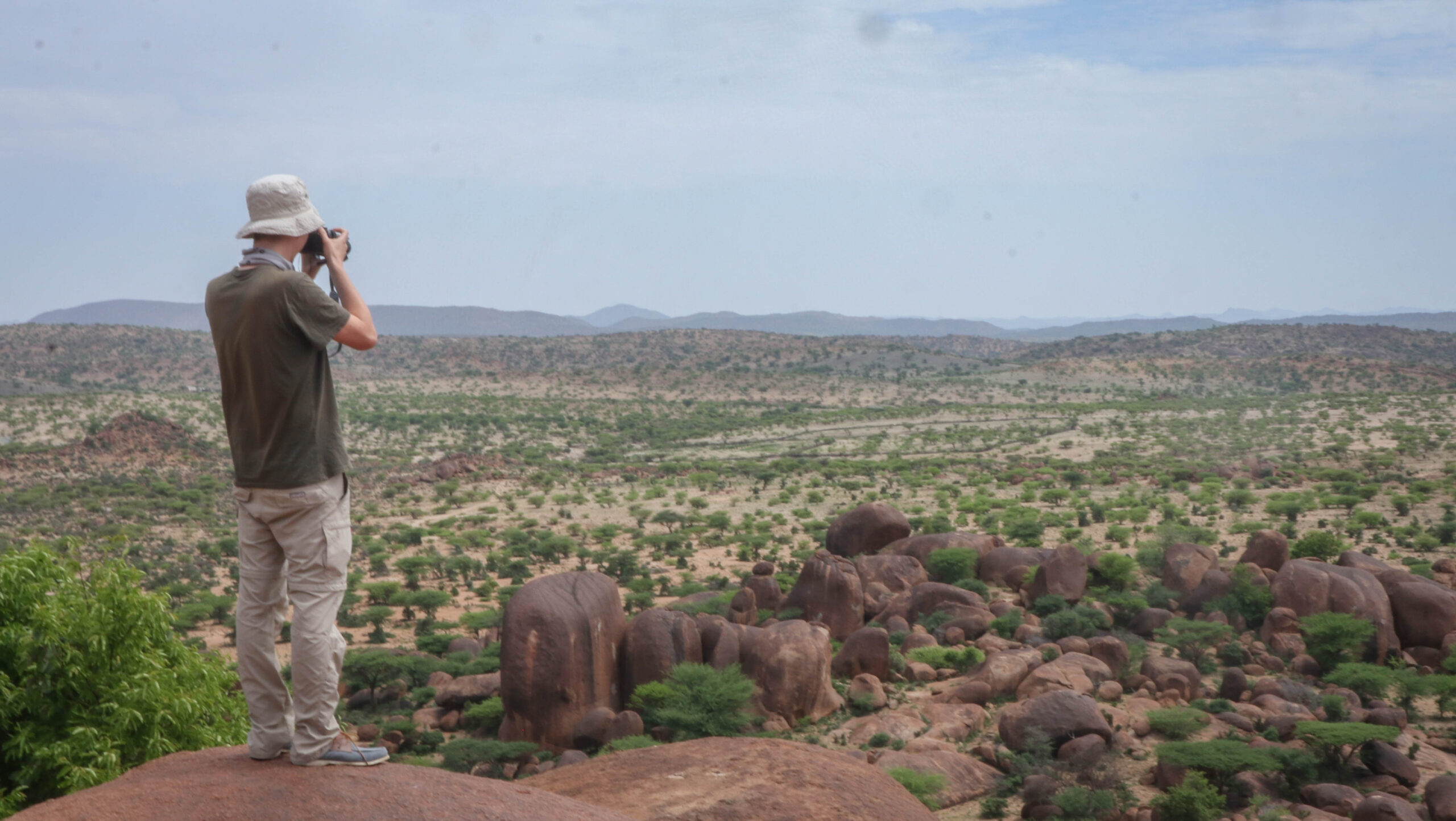

Somaliland Travel
Somaliland Travel Agency (known as SML Travel ) is a multiple award-winning local adventure tour operator . As our name tells, we are based in The Republic of Somaliland, a self-declared country. It is here where we have been crafting and pioneering our first trips before expanding to neighbouring Djibouti and beyond. If you are looking for an adventure to an off-the-beaten track , you have come to the right place. Join us on a journey full of discovery.
All Private & Group tours available throughout the Year
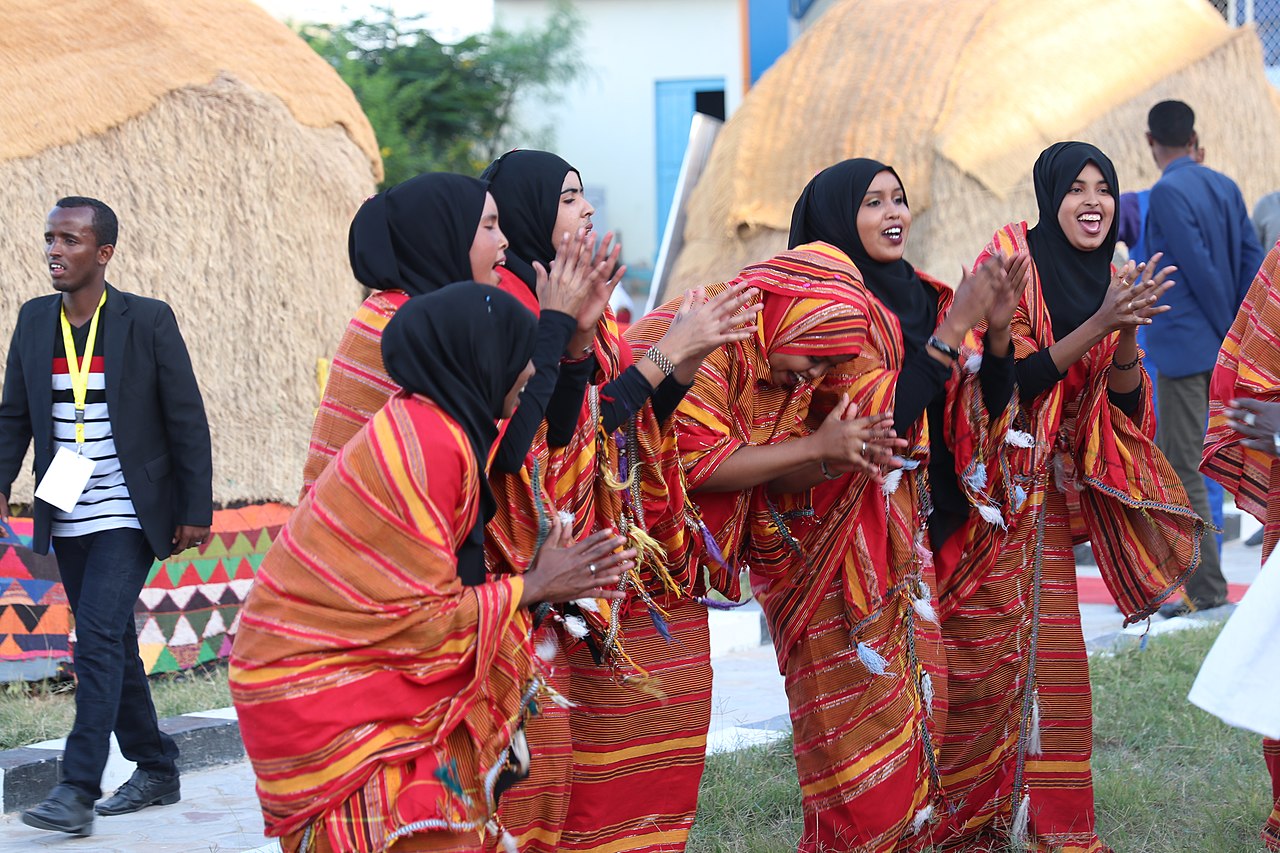
The idea started with our Founder Abdirizaq Abdullahi . A young refugee during the Somali Civil War, fortunate to find a new home in The Netherlands. After graduating from Law School , he decided to travel. Fascinated by adventure travellers he had meet, he wondered whether experienced travellers wanted to visit Somaliland, the place where he was born. Inspired by Simon Reeve – Journalist who visited Somaliland for a BBC television documentary called “ Places That Don’t Exist “, Abdirizaq years later went back to explore Somaliland. This was the start of Somaliland Travel Agency .
Our Policy & Promises
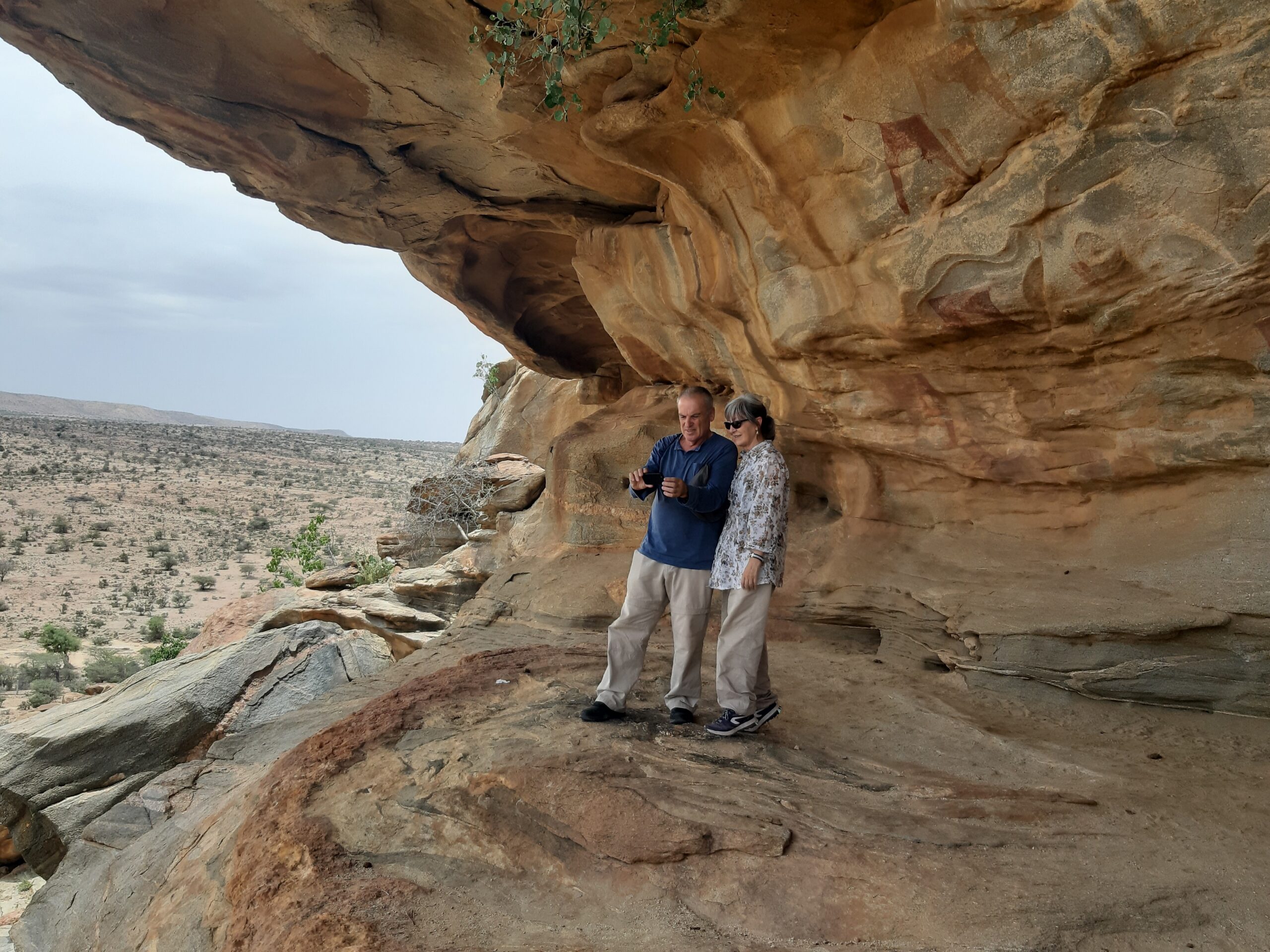
Our Social Impact
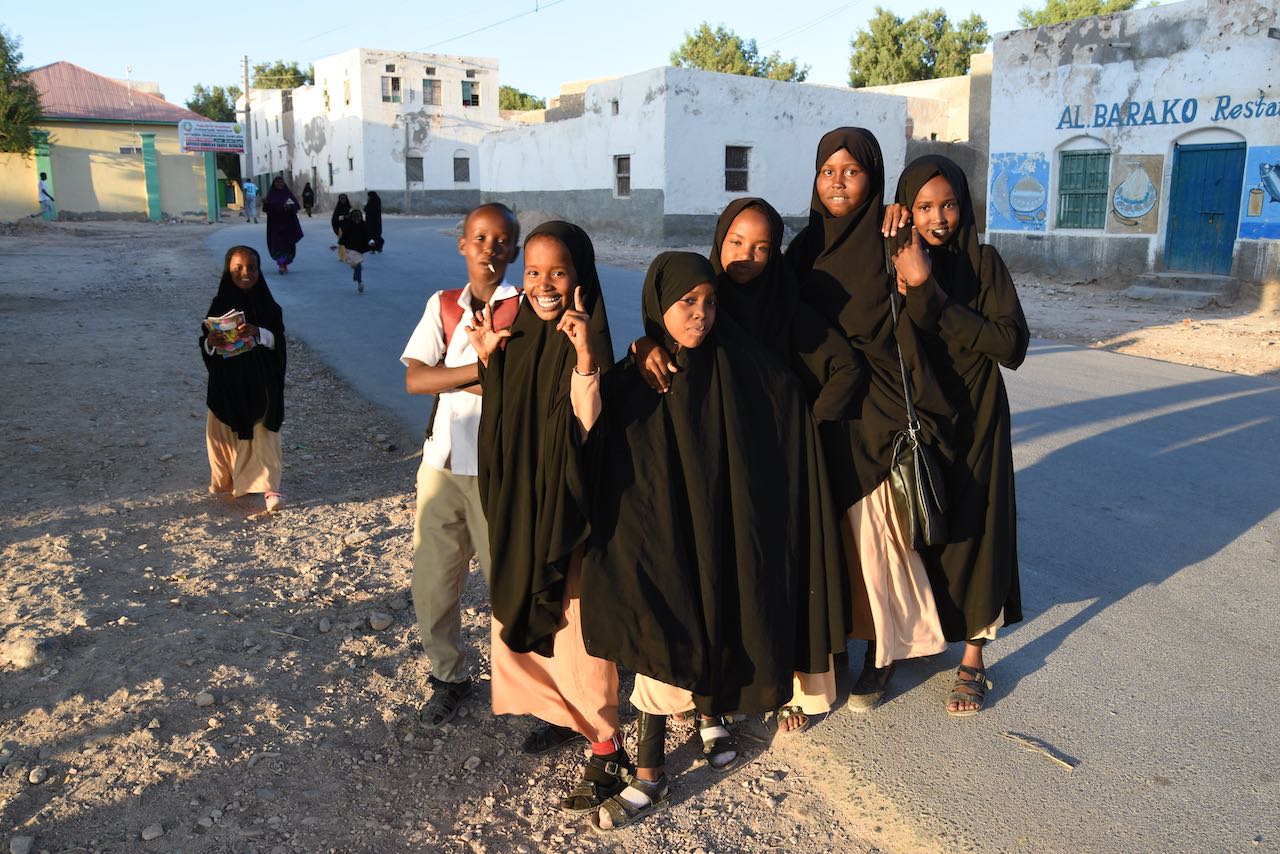
Uncover hidden treasuries with us
Hear the stories of our guests on why they have chosen to create memories with us in this undiscovered region. We offer a personalized service and local authenticity by listen to our intrepid travellers.

Proudly Supported & Guided

Why Adventure with Us
We only focus on the destinations that we know and grew up in. This means that we know everything about…
Quality and Service go together. From the first contact until returning home, we will be guiding you…
All our tours are aimed to directly benefit the local people and communities…
We understand better than anyone else that traveling to this region might come with inconveniences…
Create with us your tour on your own pace that will maximize your unique experience.
We are proudly members of Responsible Travel since 2017. We help with the preservations of nature and…

Getty Images/Lonely Planet Images
For seasoned travellers in search of a totally unusual travel experience, Somaliland is a must. The Republic of Somaliland declared independence from the rest of Somalia in 1991, though its status as a country has not been recognized by the international community. Despite this fact, Somaliland offers plenty of unexpected and wonderful surprises. Admire some exceptional rock paintings, feel the pulse of the fast-growing capital, walk along deserted beaches, visit bustling market towns, be awed by stunning landscapes, and blaze a trail of your own in the far east and west of the country. More than anything, though, it is the Somali people who make a visit to the country so memorable, with their legendary sense of hospitality.
Attractions
Must-see attractions.

Las Geel is undisputably Somaliland's pièce de résistance. Hundreds of magnificent neolithic rock art paintings in perfect condition adorn the walls of…
- 3 Other destinations
- 4 Understand
- 5.1 By plane
- 6.2 By thumb
- 13 Stay healthy
- 14 Stay safe
<a href=\"https://tools.wmflabs.org/wikivoyage/w/poi2gpx.php?print=gpx&lang=en&name=Somaliland\" title=\"Download GPX file for this article\" data-parsoid=\"{}\"><img alt=\"Download GPX file for this article\" resource=\"./File:GPX_Document_rev3-20x20.png\" src=\"//upload.wikimedia.org/wikipedia/commons/f/f7/GPX_Document_rev3-20x20.png\" decoding=\"async\" data-file-width=\"20\" data-file-height=\"20\" data-file-type=\"bitmap\" height=\"20\" width=\"20\" class=\"mw-file-element\" data-parsoid='{\"a\":{\"resource\":\"./File:GPX_Document_rev3-20x20.png\",\"height\":\"20\",\"width\":\"20\"},\"sa\":{\"resource\":\"File:GPX Document rev3-20x20.png\"}}'/></a></span>"}'/>

Somaliland ( Somali : Somaliland , Arabic : صوماللاند Ṣūmāliland ) is a self-declared republic on the Horn of Africa recognised internationally to be part of Somalia . Local authorities declared the region's independence from Somalia in May 1991, but neither the Somali federal government nor any other country or international organisation has recognised its sovereignty, instead claiming it as an autonomous region of Somalia. The local government is very anxious to show its stability and, as a result, foreigners are generally treated with respect and interest. However, high unemployment and increasing discontent at being an unrecognised island of stability in a grim region does cause occasional resentment towards outsiders, particularly NGO workers. For visitors exercising caution and respect, Somaliland is a fascinating place to visit.

- 9.565556 44.060556 1 Hargeisa — the capital city of Somaliland, and perhaps the safest city in the entire region. It's rather cosmopolitan and with a rich history and culture.
- 10.433333 45 2 Berbera — nicknamed beach city, is a major port and, apart from expatriate remittances, the economic lifeline of the Somaliland economy.
- 9.933056 43.181667 3 Borama
- 9.527889 45.5345 4 Burao
- 10.618056 47.37 5 Erigavo - High altitude, with mild temperatures in evening
- 8.476667 47.390833 6 Las Anod
- 11.353889 43.473889 7 Zeila — a historic city near Djibouti and the stunningly beautiful Zeila Coast.
Other destinations
After being a British protectorate, Somaliland gained its independence in 1960 and, just 5 days later, voluntarily entered into a union with the also newly independent former Italian colony of Somalia . Before long, struggles erupted, but Somalia remained lashed together under the dictator Mohammad Siad Barre until a vicious civil war broke out in 1988. By its conclusion in 1991, Somaliland was bombed heavily. It is still recovering today: you will see shells of tanks along major roads, blast marks from artillery along hillsides; however, only a few bombed-out buildings or ruins remaining in cities.
After 1991, Somaliland began the painstaking process of establishing an independent state. In 2010 it held free and fair parliamentary and presidential elections. The incumbent president was unseated in a very close race. A remarkably peaceful transition of power followed.
Somaliland is a fairly peaceful region. Violence is rare, and there is an active police force to ensure that laws are respected.
As with the remainder of the former Somalia, law comes from three sources: the government, Islam (Sharia law), and clan (Xeer law). Extended family is of paramount importance in Somaliland, and indeed, the country now largely survives on remittances from relatives working abroad. It is customary in Somali culture, to ask another Somali upon meeting him/her, who his/her ancestors were several generations back, to establish which (sub-)clan he/she belongs to. Because no other country recognises Somaliland as independent, there are few employment opportunities and joblessness is estimated to be at a staggering 80%.
December-March is probably the best time to visit, as then you will avoid both the two rainy seasons and the sweltering, heat of the July-September dry season (over 44 °C).
- Somaliland Government website
You must have a Somaliland visa to enter. Visas from Somalia are not accepted. Most travellers get a visa in Addis Ababa in Ethiopia or the Somaliland Mission in London. You can get details from the Somaliland government website or contact the Somaliland liaison office in Addis Ababa. To get to the office, which moves often (this information is current as of January 2016), walk about 100 metres north of the Edna Mall along Namibia Avenue until you see Sheger Building on your left. Turn right here at a small road that should have a sign for the embassy. Walk along the dirt road for 300-400 metres until you see another sign on your right. Turn right there and you will see the embassy. The embassy officially opens at 08:30 but the best time to turn up is between 09:30 and 10:00 as the ambassador often turns up around 09:30. The embassy is open on Fridays but not Saturday, Sunday or Ethiopian holidays. Visas cost US$70 and are issued on the spot. You will also need a passport photo, a copy of your passport (available for 1 birr at the mall before the turn or at the Sheger Building). You are issued a visa and a letter indicating that you should not pay anything at the border when entering the country. A Somaliland visa is also allegedly available from the Somaliland representation in Djibouti. The Somaliland mission in London will also issue a visa. The whole process is refreshingly unbureaucratic and can be handled by post, which makes London the most convenient place to get a visa for those living in Europe and/or want to obtain a visa before travelling to the region.
Visas on arrival are available for some nationalities.

There is an international airport in Hargeisa with flights to and from Dubai, Djibouti City, and many other cities and towns across the Horn of Africa and the Somaliland region. There is also an international airport at Berbera with many international flights, most notably to Dubai. Some 'flights' from Hargeisa start with a bus ride to Berbera. If you are not Somali you may have difficulty getting through the police checkpoints unless you have written permission from the commander of police or take an armed guard (the Jubba flight from Hargeisa to Dubai is like this).
Daallo Airlines is wildly inconsistent, so Jubba Airways or African Express from either Dubai or Djibouti is your best bet. They have several flights a week and connect Hargeisa to Djibouti, Dubai, Nairobi and Entebbe. Djibouti to Hargeisa is about an hour-long flight. Dubai to Berbera takes three hours.
All flights to and from Somaliland are expensive by most standards, and there are no budget airlines. The cheapest flights will be to and from Djibouti, usually around US$125 one-way when taxes and fees are figured in (but not including the entry/exit visa and exchange fees, which will tack on about another US$100 to any trip).
The most reliable way to get in seems to be with African Express, which has connections in Dubai , Nairobi , and other smaller Middle Eastern and East African ports of call. Tickets can be reserved in advance, but not purchased unless you are at their ticketing office - check back in to ensure you have a seat reserved if you will not be in the city you fly out of before your flight!
- African Express is a Kenyan airline that flies to/from Berbera , primarily from Mogadishu , Nairobi and Dubai , but also less frequently from smaller locations such as Sharjah , Entebbe or Jeddah . Major routes use MD-82 jets, shorter hops may be on a DC-9 or 120-ER.
- Jubba Airways [ dead link ] is a Somali airline. Their flights go from Hargeisa and Berbera . They use a Soviet-made Ilyushin-18 aircraft. They are one of the two airline to/from Somaliland that accepts online booking reservations, but confirm with them seven days in advance before flying. Jubba Airways usually waits until enough people have purchased tickets before departing. You may be waiting a week or more for a flight, regardless of whether you have a ticket or not.
- Daallo Airlines used to be the only international carrier to fly to Somaliland or the former Somalia. They are famed for inconsistent service. They operate 2-3 services per week from Djibouti also using an Ilyushin-18 aircraft.
- FlyDubai flies two to three flights per week from Somaliland. As of June 2016, they were operating in Hargeisa and are the second airlines operating in Somaliland to accept online reservations.
- Ethiopian Air has regular flights to the border city of Jijiga. From Jijiga, Hargeisa is a few hours away by taxi.
Again, remember to re-confirm all flights 7 days in advance. All of the airlines above will not hesitate to sell your ticket to someone else if you don't take the warning seriously, Jubba in particular.
Ticket offices are closed on Friday (the beginning of the weekend in the Islamic world). Plan accordingly.
It is possible to enter Somaliland from Ethiopia by road. You can avoid paying many of the fees charged at the airport. However, if you plan to leave Somaliland by road it is advisable to make Ethiopian visa arrangements (multiple entry) before travelling to Somaliland as the process of getting an Ethiopian visa in Hargeisa can be quite cumbersome and time-consuming. As of January 2012, the Ethiopian visa in Hargeisa was easy to get, required no paperwork and was available in one morning - cost US$20.
It is not possible to enter from Somalia, so don't even try.
Another option is the open border to the north to Djibouti. In 2009, public transport 4x4s left Djibouti every day in the late afternoon and travelled across the desert throughout the night to arrive in Hargeisa the next morning. They left from Avenue 26 in Djibouti City, at a price of DJF 5500.
Despite efforts, there are still mines on some roads. Look out for coloured rocks next to the road; if you see painted rocks, do not leave the tarmac.

There is a bus service in Hargeisa, Burao, Berbera and Borama. There are also services between the major towns and adjacent villages operated by different types of vehicles such as 4-wheel drives and light goods vehicles (LGV).
Hitchhiking is possible near and within cities. Locals are friendly and will go out of their way to ensure that you make it to your destination. You will be offered telephone numbers to call for help, free food, and asked lots of questions about your home country. Hitchhiking between cities is less advisable. To travel outside of major cities, the central government requires foreigners to take an armed guard with them (see "Stay Safe" below).
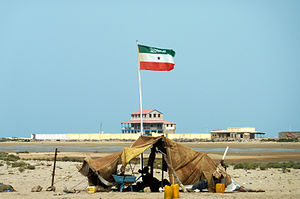
The capital, Hargeisa , has a provincial museum. There is also a menagerie that includes lions, leopards, antelopes, birds, and reptiles.
Laas Geel , which is about 60 km from Hargeisa, is one of best examples, if not the best example, of prehistoric cave art on the African continent. It's some of the earliest known art in Africa, dating back to 9,000 BCE. Government limits access to caves so it's best to get tickets in advance.
Naasa Hablood' are twin hills outside of Hargeisa that Somalis consider as a natural landmark.}
For breakfast, Somalis eat a flat bread called laxoox and cereal or porridge made of millet or cornmeal. They also eat rice or noodles with sauce or meat for lunch. Pasta became very popular under Italian rule. Bananas are common in the south of the region. A traditional soup called maraq (also part of Yemen cuisine) is made of vegetables, meat and beans and is usually eaten with flat bread or pita bread. Oat or corn patties and salad can be eaten too.
Somalis occasionally eat xalwo , a jelly-like sweet made with water, sugar, corn syrup and honey, though peanuts are sometimes added. Somalis who have spent some time in the Middle East eat baklava. Dates are also popular in Somaliland.
In coastal areas, roasted camel meat, camel milk, fried sheep liver and all kinds of fresh seafood are popular.
It is considered polite for guests to leave a little bit of food on their plate after finishing a meal provided by their host. This shows that the guests were given enough food and thus treated hospitably.
Many Somalis adore spiced tea. Milk is also common in rural areas of Somaliland. Alcohol is prohibited and you will not find it publicly served anywhere in Somaliland.
The Somaliland shilling (شلن صوماليلاندي in Arabic, Soomaaliland shilin in Somali), denoted by the symbol Sl.Sh. , is issued in banknote denominations of 100, 500, 1000 and 5000 shillings. You may see old notes in denominations of 5-, 10-, 20-, 50- shillings, and old coins in denominations of 1-, 5-, 10-, 20-shillings.
Somaliland has suffered from hyperinflation, so prices change quickly, and exchange rates are unstable. US dollars are the easiest foreign currency to use.
Because of the inconvenience of carrying bundles of shilling notes, over half of Somaliland's commerce is handled through mobile phone payment apps, Zaad and e-Dahab. In marketplaces, keep an eye out for money changers sitting behind walls made of bundles of currency.
There are hotels being constructed in all of Somaliland's major cities. Hargeisa has had most development, with regards to its infrastructural capacity, the airport has been expanded to cater for an increase in foreign and domestic tourists.
Stay healthy
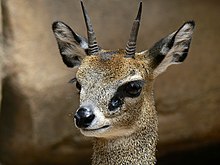
Locals in Hargeisa drink tap water from a system provided by the Chinese government. Its cleanliness, while not perfect, is adequate for locals. To play it safe, you can boil the tap water (especially if you are a short-term visitor) to ensure its safety.
In places other than Hargeisa, you should stick to bottled water .
As with many developing countries, animals roam the streets and sanitation is poor. Be very aware of the risk of rabies. Bats may inhabit the countryside, and their bites can be nearly invisible, leaving a person unaware until it's too late.
There is a low risk of malaria in Somaliland, but the threat is still present. Many foreigners choose not to take anti-malarials.
Yellow fever is considered endemic in Somaliland. If you plan to travel to other countries that require proof of yellow fever vaccination, ensure you are vaccinated and have a certificate.
Vaccination against other endemic diseases common in developing countries (typhoid, polio, hepatitis A & B, etc.) is strongly recommended.
If you have health problems or have concerns about getting treatment in an emergency, you will be putting yourself at great risk as the medical services in most areas are rudimentary by modern standards.
The most modernised and prominent hospital is the Edna Adan University Hospital in Hargeisa. However, it's mostly a maternity hospital and medical treatment there is limited. Serious conditions will require medical evacuation to Ethiopia or possibly the Middle East . Come prepared or do not come at all.

Somaliland is the safest area or region of the current 5 member states that make together the federal republic of Somalia in which Somaliland is part. Knowing a little of the local language or having an interpreter can go a long way in gaining information from the local population, which is a valuable tool if you wish to learn about the surrounding area.
Imprisonment and/or execution is the punishment for homosexuality. So if you are gay and decide to visit, keep your sexual orientation secret.
The Somaliland government requires that all foreigners take armed guards when travelling outside of the major cities. These guards are known as SPUs (Special Protection Units) and are available from the local police department or the office of tourism in Hargeisa. The UN typically pays US$5 a day per SPU, but as a tourist it will be difficult to negotiate this price. SPUs will try to charge you anywhere from US$30 to US$40 a day, but US$15 a day is reasonable for both parties.
Under some circumstances it is possible to travel around Somaliland without an SPU. To do this you will need a letter from the commander of police. This can be obtained from the police HQ in Hargeysa ( not the police station). Take the minibus to 'pepsi' (pronounced with a strong ‘b’ as the Somali language doesn’t use the letter p) from the centre of town and get off just after you cross the dry river bed; the police station is on the right hand side of the road. The commander leaves at 11:00 each day so you will need to turn up in the morning and you may have to argue with the guard at the gate to be allowed in; they may try to send you to the SPU building round the corner. Stand firm and insist on seeing the Commander's secretary. The commander's secretary is very helpful and used to sorting this out. Give him the names of everywhere you wish to go and he will type up the letter and get the commander to sign it. It's easy to get permission to travel to Berbera and Djibouti, other destinations may be harder and the situation may change.
If you run into legal problems you may be on your own, as many countries have no consulates for their citizens to turn to for help. However, Ethiopia, Djibouti, and Turkey have consulates in Somaliland and Taiwan has a representative office which offers consular services. Learning local customs and laws is very important if you wish to minimise the chances of conflict with local authorities.
African Express, Jubba and Daallo airlines fly to Djibouti , Kenya , Mogadishu and Uganda . Be prepared to pay a USD32 exit fee in the airport. Berbera has an international airport that has flights to Dubai .
- Has custom banner
- Has map markers
- Quickbar with missing information
- Articles with dead external links
- Outline countries
- Outline articles
- Country articles
- Has Geo parameter
- East Africa
- All destination articles
- Pages using the Kartographer extension
Navigation menu
- Countries visited: 115
- Currently in : Singapore 🇸🇬
- Partner with us
- SOLO FEMALE TRAVELERS COMMUNITY
Disclaimer: This page may contain affiliate links. Please see our disclaimer policy here . Never leave without travel insurance .
Travel guide and things to do in Somaliland
You are visiting Somaliland you say? This was the kind of reaction I got from everyone I told I was going there, usually coupled with a face of disbelief and fright . They were partially right in their assessment. Somalia, which Somaliland still officially belongs to, is dangerous and has been for several years, it is one of the least visited countries in the world and the amount of things to see and do in Somaliland is not very long. So, why should anybody travel to Somaliland ?
But if you have been a reader of this blog for a while or know me from social media or in person, you will understand that there are two types of trips I enjoy taking and neither of the two includes big cities or well-visited places .
I like spending time at luxury resorts, in exclusive destinations or partaking in premium experiences (frankly, given the choice, who doesn’t) or to get lost in the least visited countries in the world. The harder to reach, more isolated and less frequented by travelers the more intriguing and interesting it sounds to me.
These two seem to be highly incompatible types of travel and if someone enjoys one type of trip he or she will most likely never be found at the other. However, I have a few friends who share the same preferences and I blame our collective professional experience for this rather bizarre style of travel.
So I decided to make Somaliland, and Somalia at least at the time of the visit, my 98th country by organising a trip there, getting that rare passport stamp and spending time visiting the main Somaliland sights over a five day trip .
Somaliland map: Geography and location
Where is Somaliland, you may be wondering.
Somaliland is in the Horn of Africa , in fact it makes the horn of the Horn of Africa, meaning it is right at the tip bordering Ethiopia and Djibouti , a country I visited before and the reason why I wanted to return to see Somaliland.
Take a look at this map of Somaliland so you can better appreciate its location.
The country’s geography is quite different from Djibouti’s because it is farther away from the Danakil Depression and the geological activity in the area. Instead, you can find some hills, mountains even, and more greenery than elsewhere in the area.
Is Somaliland a country? Somaliland vs. Somalia
When I told people I was going to Somaliland most people asked me if it was a country since they had no doubt heard of Somalia but never of Somaliland. What is the difference between Somalia and Somaliland ?
Somaliland is in fact a self-declared Somalian province not recognized by the United Nations. That means that it is still officially in Somalia in the maps and in the papers. In the eyes of most countries’ governments, Somaliland does not exist.
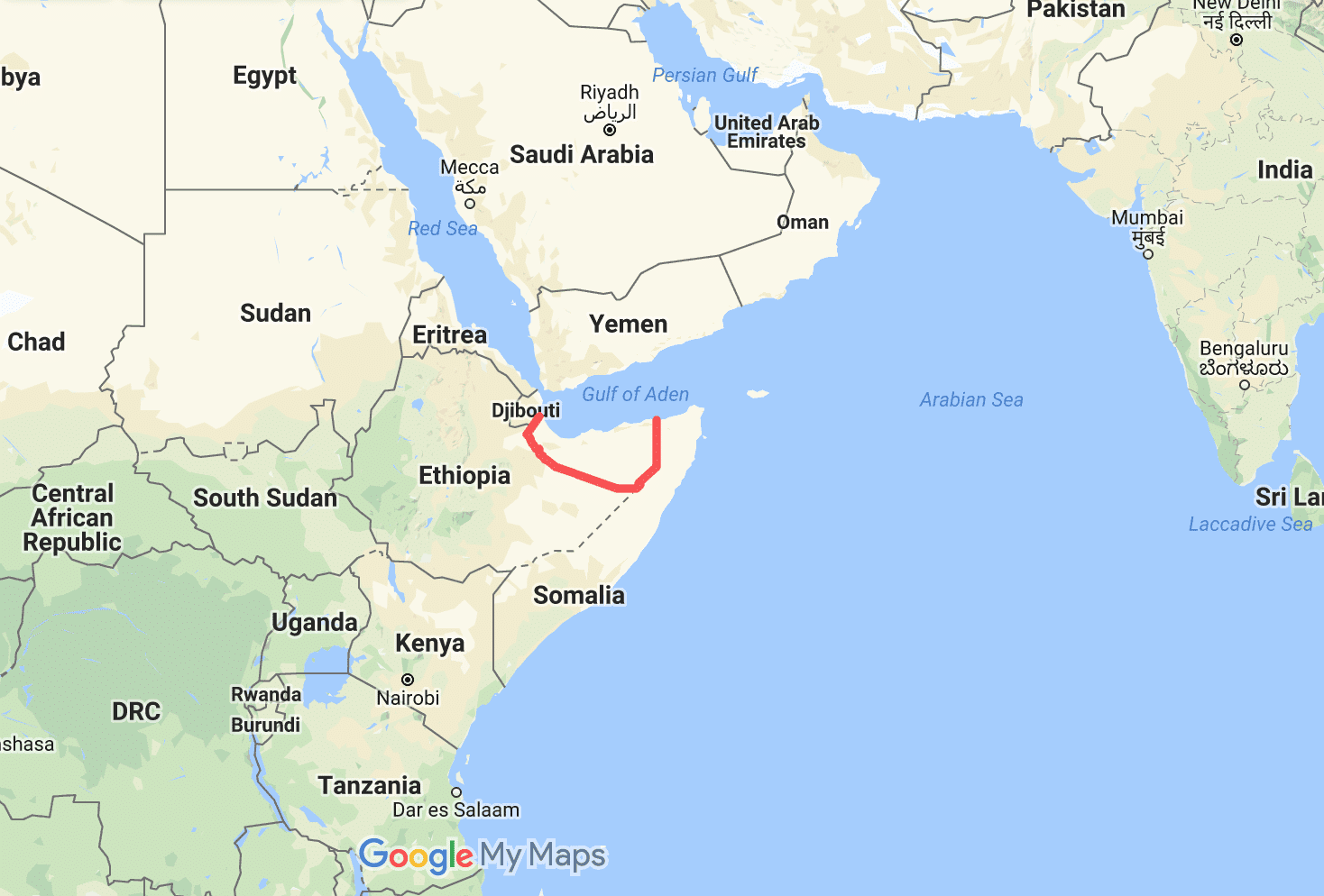
However, this part of Somalia declared independence in 1991 after the country descended into civil war and has maintained stability, relative safety and proper rule of law ever since with elections, a parliament and its own police, passport and visa system. A lot of official countries can claim far less than that today.
So the difference between Somaliland and Somalia is that one is part of the other, like Scotland is part of the UK, or Catalunya part of Spain, but a day may come when Somaliland becomes an independent state.
History of Somaliland
If the above explanation piqued your curiosity, read more to understand the history of Somaliland .
Somaliland was created in 1991 after some of the northern clans in Somalia decided to put an end ot the civil unrest that followed the coup of 1991 by declaring their own country and bringing peace.
This date, in May, is still grandly celebrated in the country as the national day and military parades and commemoration speeches ensue. It is much more important than the date the country took independence from the British or the Italians.
If we go back in time, to the creation of Somalia as a country, the area was previously known as British Somaliland and under British rule. When the British withdrew in 1960, Somaliland declared its independence on the 26th of June and received congratulatory notes from 35 of the UN member states.
However, five days later, Somaliland decided to join the rest of the Somali territories to create a Greater Somalia with a view of a set of common ground rules agreed in the treaty of the union . But Somalia passed a different treaty to parliament than the agreed and Somaliland ended up being in a country with a constitution it did not agree with. That was the beginning of the discontent and the self-declaration of independence.
The situation worsened when a coup in 1969 brought a socialist authoritarian ruler who prosecuted political opponents and attacked the northern areas of Somaliland, laying mines and causing internal refugees. The regime eventually collapsed in 1991 and chaos and violence took over Somalia. Somaliland took that state of chaos to declare its own independence and reclaim its identity.
Somaliland travel and tourism: Places to see and things to do in Somaliland
Travel and tourism in general in Somaliland is admittedly scarce . In the five days I spent in the country I did not see any other visitor and the only foreigner was a businessman in Berbera. At the airport’s departures lounge I saw three Western women who were leaving the country and who I assume were working there in humanitarian, research or charitable missions . My flight into the country did not contain any other visitor and the three foreigners in the plane were there on business.
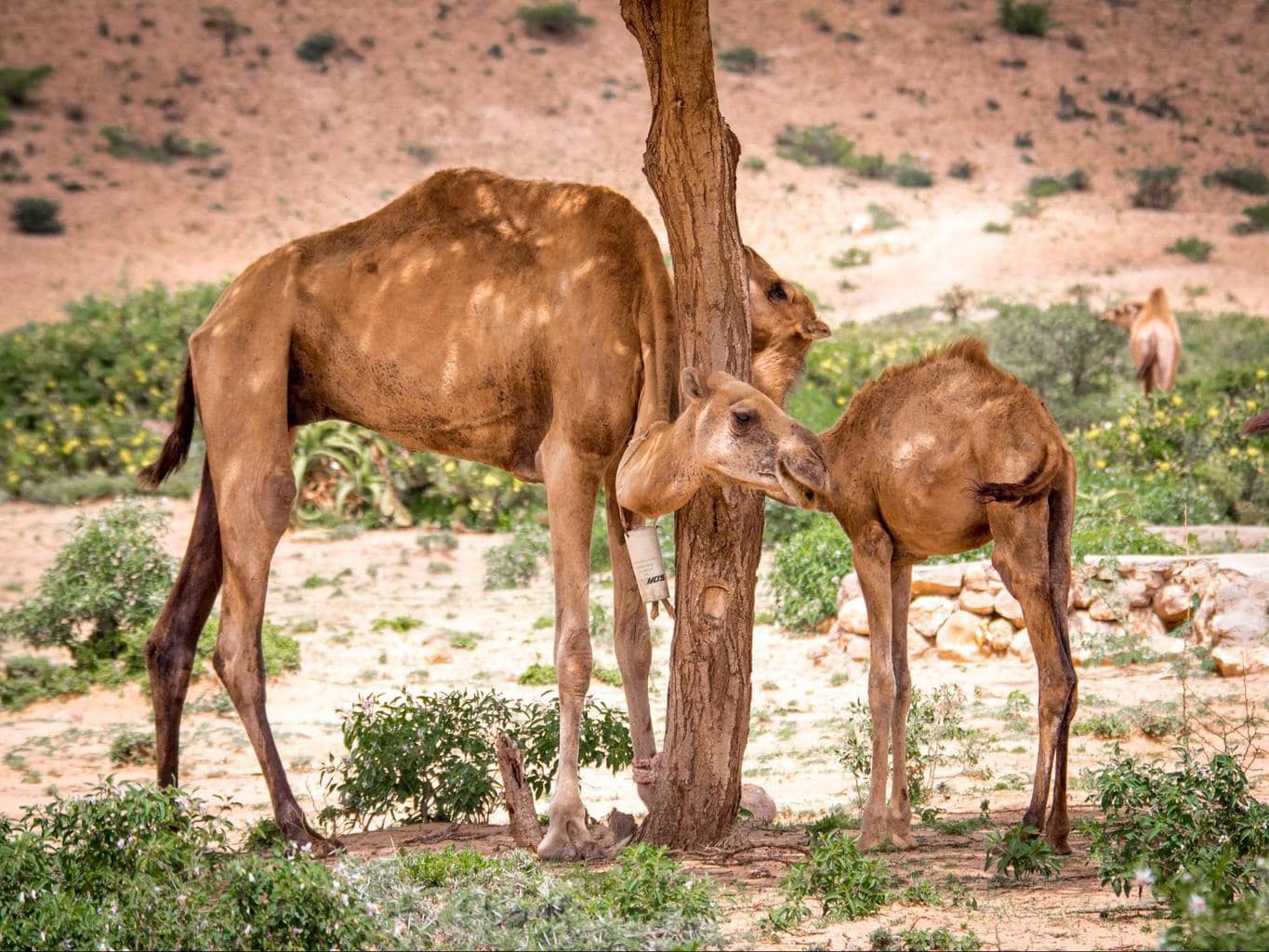
When we went to Laas Geel, the UNESCO-listed cave paintings , we signed the guest book and saw the last entry made two weeks prior. We could only assume that there had been no visitors in that period as they were quite adamant we leave a comment so anybody visiting would have been strongly encouraged to do so too.
Suffice to say that most people traveling to Somaliland are either chasing all the countries in the world or are looking for the least visited countries , as is in me and my friend Edwin’s case.
But don’t despair, Somaliland does have some tourist sights and there are a few things to see and do which should keep you busy for a few days. I am listing all the tourist attractions of Somaliland below.
Laas Geel cave paintings
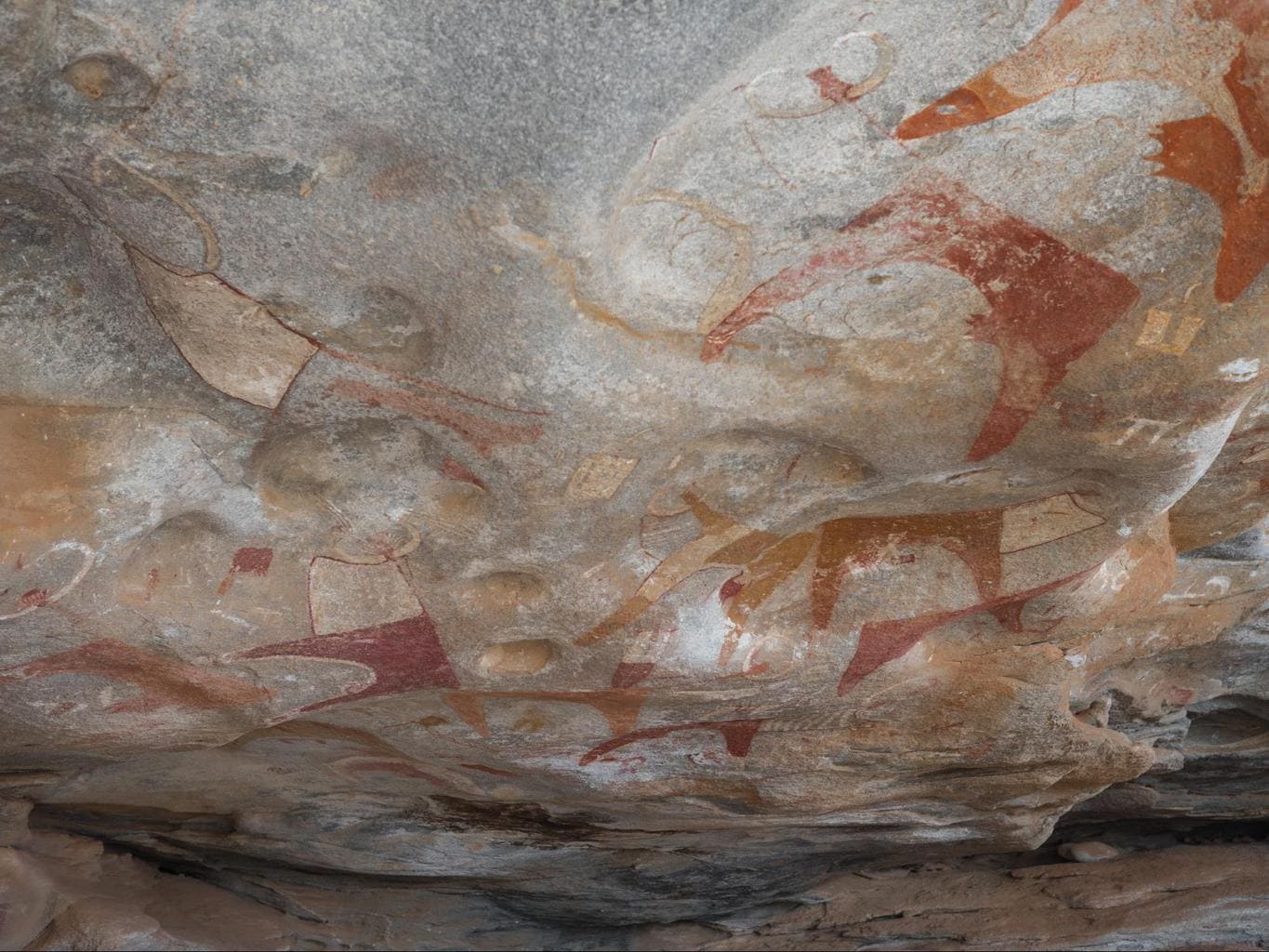
This is by far the most interesting tourist attraction in Somaliland and should feature in anyone’s list of places to visit if you are traveling there.
Laas Geel is a complex of cave paintings that are extremely well-preserved and are considered to be the oldest in the Horn of Africa. The rock art is believed to date back to around 6,000 BC although the international community only discovered them in 2002 when a French team of researchers found them through the directions of the local villagers who thought the place to be haunted.
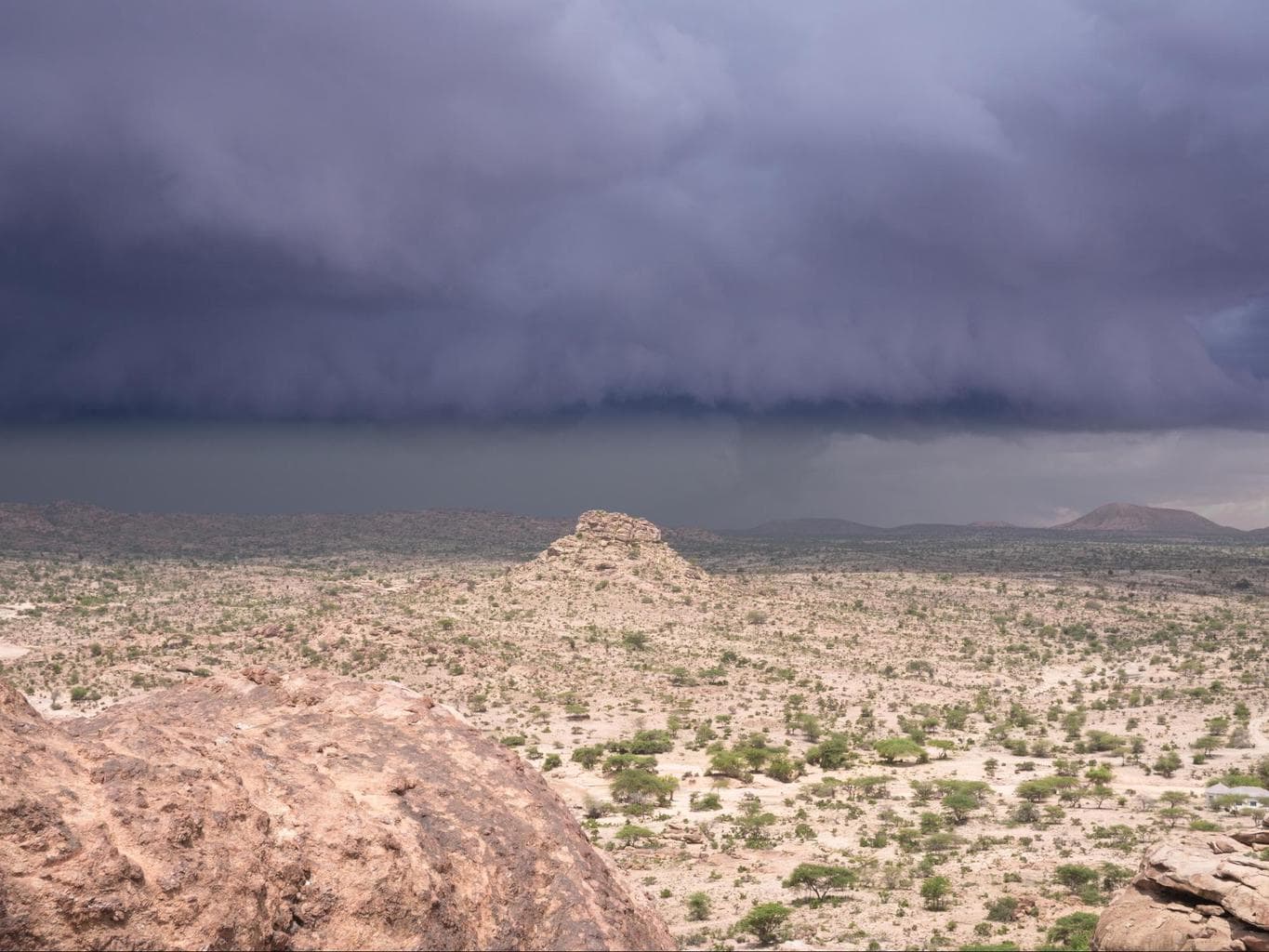
The rock art is drawn on the walls and ceilings of 10 rock shelters and it is incredible to think that they are several thousand years old and still perfectly discernible. Scientists still don’t know what ink was used for it to have survived through the centuries with little erosion. Tests aimed at finding out have all failed with the ink vanishing within years.
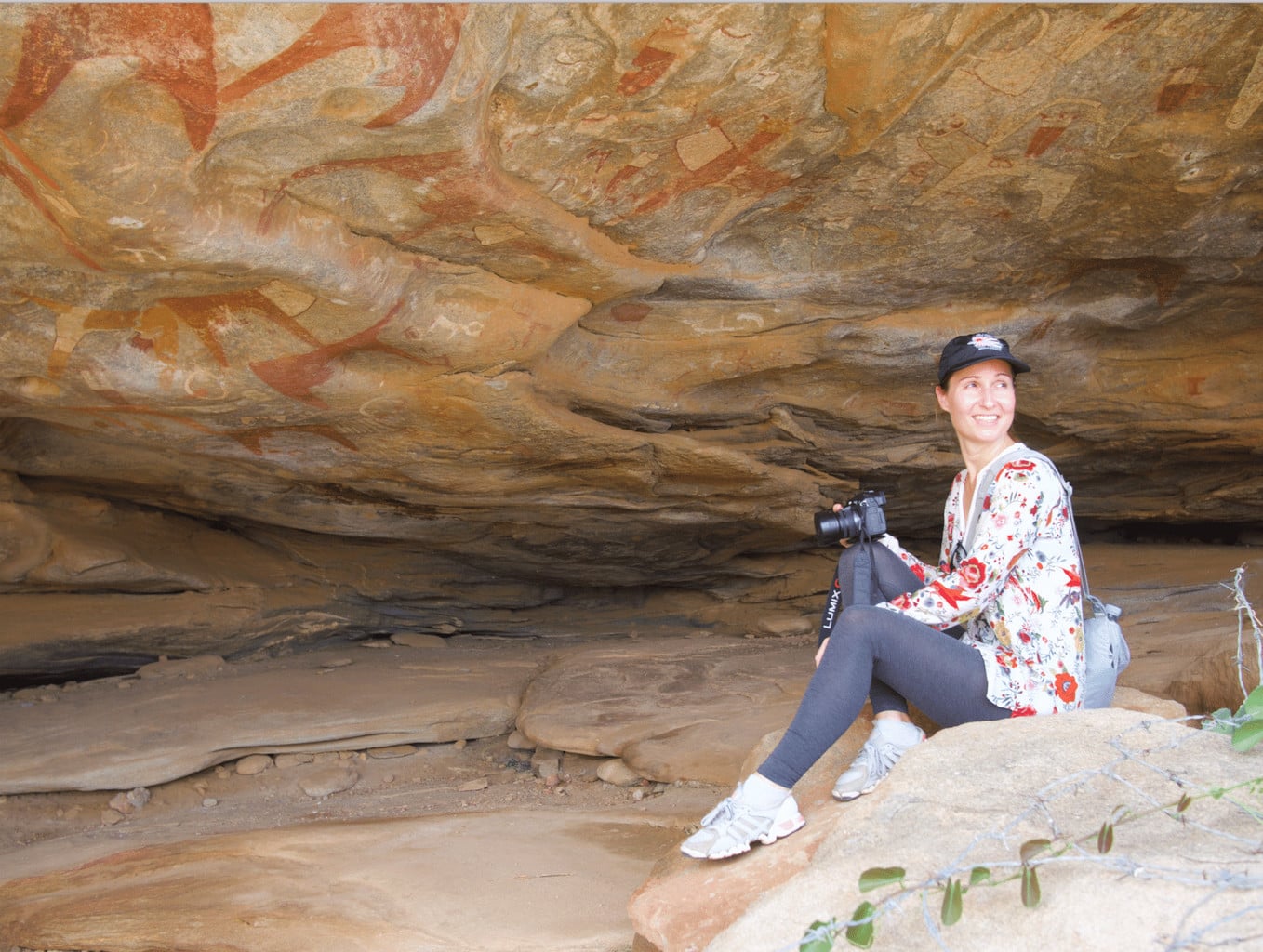
Laas Geel is located about a couple of hours drive from the capital of Hargeisa and you can read more about it in my dedicated post about Laas Geel.
The money market in Hargeisa
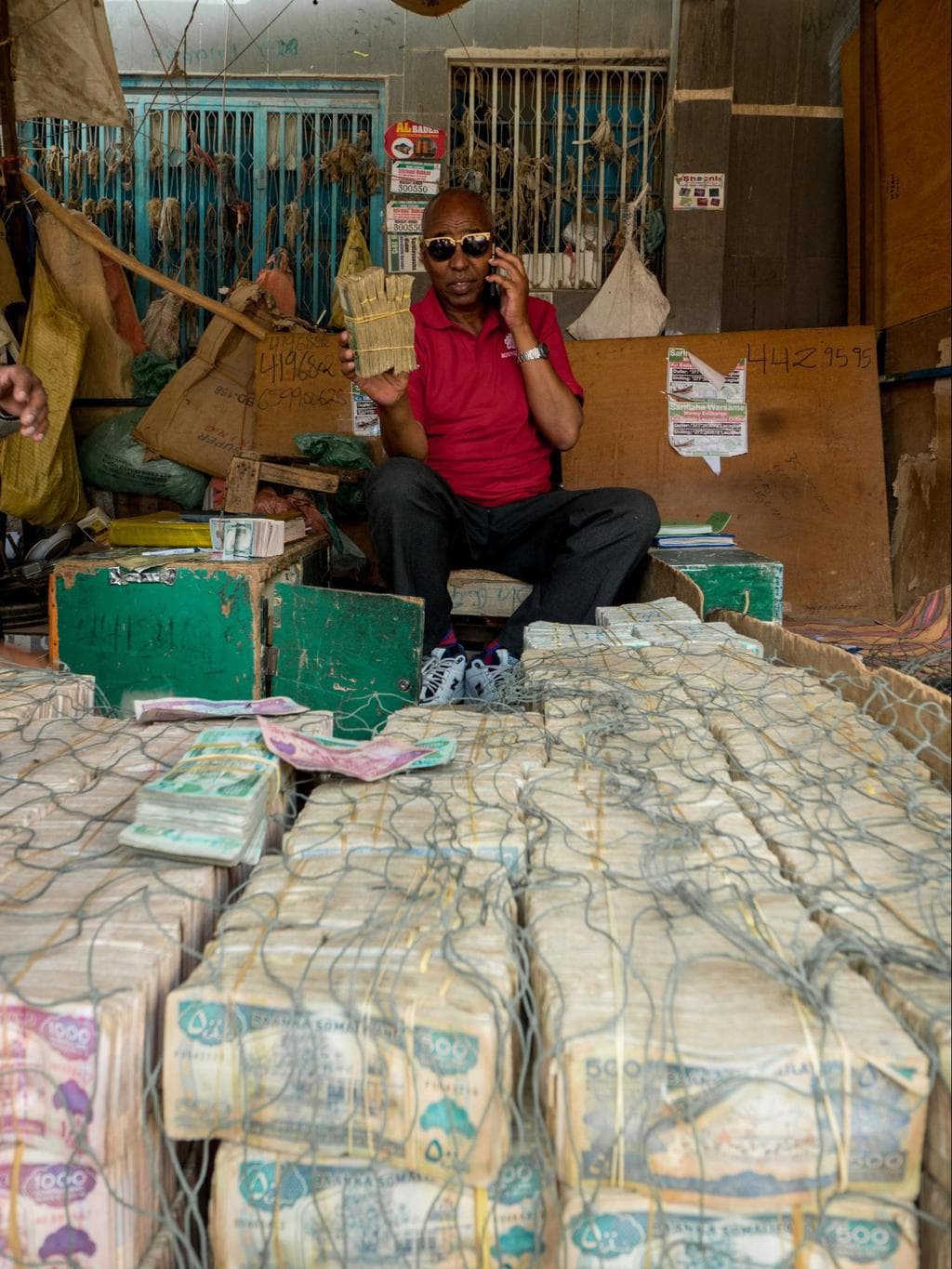
Many visitors who are counting countries may only come to Somaliland to tick off Somalia from their list and hence visiting to Hargeisa is enough. But this is probably one of the world’s capitals with the least amount of tourist attractions I have ever been to, up there with Juba in South Sudan . Half a day suffices to see everything there is to see and have a good feel for the place.
You should not skip it though, as there are some genuinely unique and rare things to be seen in Hargeisa such as the money market.
Not technically a market per se but more of a grouping of stalls exchanging money. The money changers are a Somaliland institution and something that, should the country ever be recognised and develop, will disappear as it is essentially covering for a gap in need.
Look out for the money changers with stacks of Somaliland currency piled up and netted to protect it from the wind and also from prying thieves, lest the draft created by a passing car take the notes away.
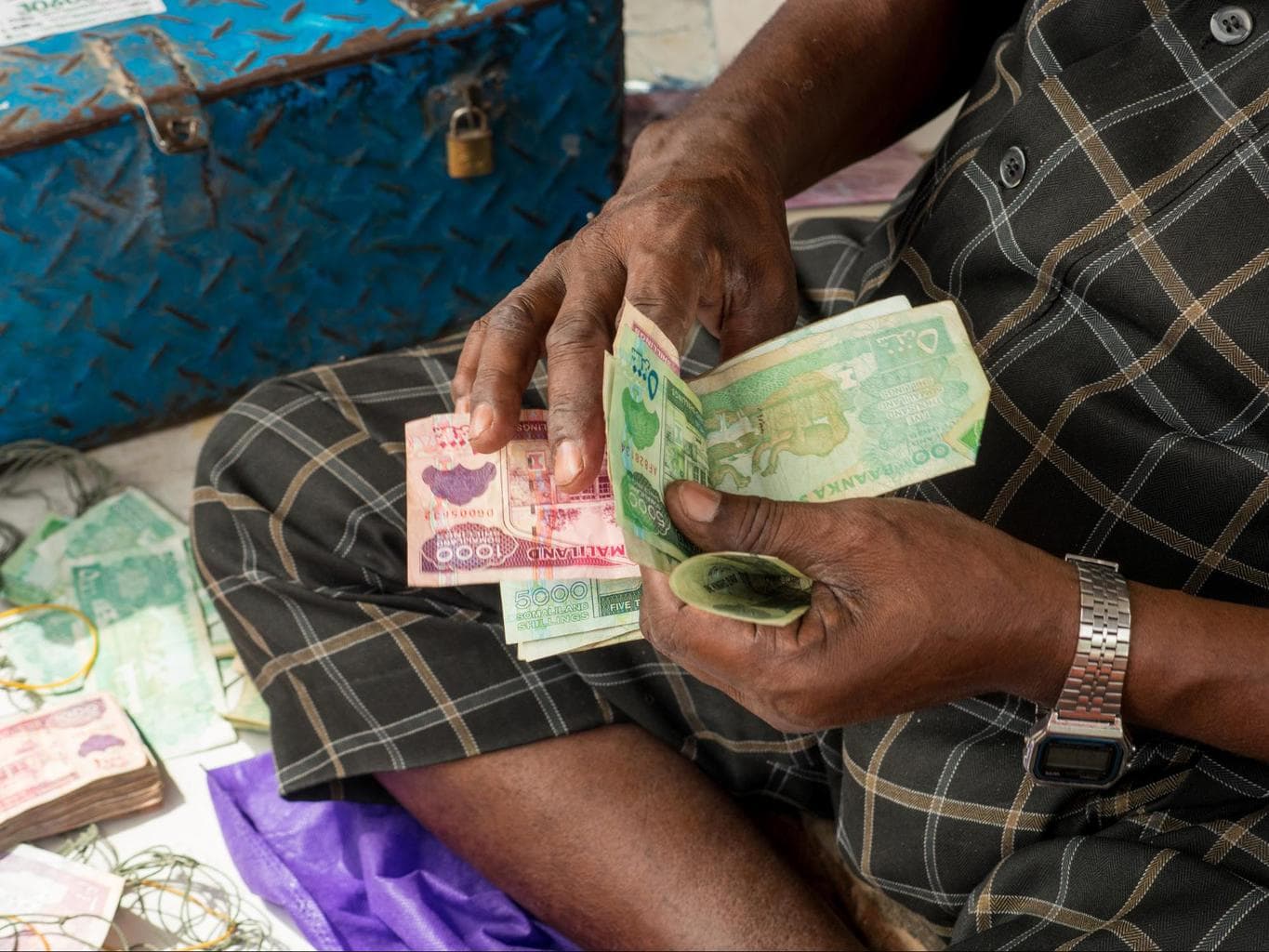
The sighting will impress you. Some of these businessmen can handle over $10,000 a day in transactions be it to cash out the US Dollar denominated balance on the mobile money accounts or to exchange the local currency into US Dollars, Ethiopian Birr or Djibouti Francs or vice versa.
The money market and the money changers appeared as a result of several reasons. Firstly, the Shilling is highly volatile and its value cannot be depended upon for a country that relies on remittances for a quarter of its GDP and on massive but seasonal sales of livestock to the Middle East.
Secondly, the Shilling comes in very few and low denominations . The current exchange rate is around 10,000 Shilling to one US Dollar, similar to the Indonesian Rupee, but the highest denomination is only 5,000 Shilling while the most commonly used one is the 1,000 note worth about 10 cents of a US Dollar.
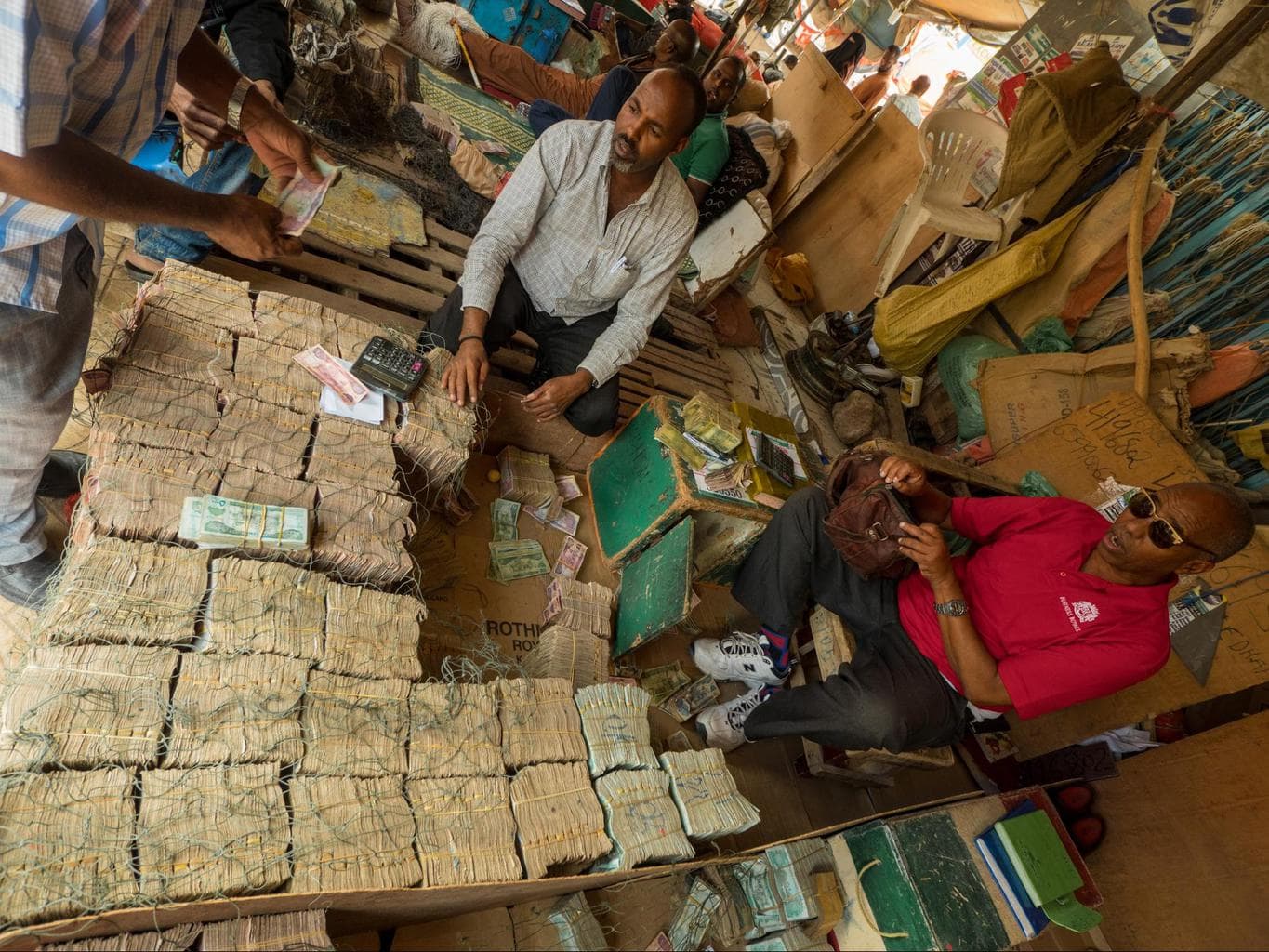
This means that you are an instant millionaire when you exchange $100 but also that you need to carry tons of cash around because one $100 note will convert into two hundred 5,000 notes to carry, if you can find that many 5,000 Shilling notes, as they are uncommon. This is not only ridiculous but also impractical and time consuming as you need to keep counting notes and notes every time you make a transaction.
Conversely, if you want to make a small purchase, there are no coins in circulation and the lowest note is 500 Shilling or about 5 cents. This may not seem like a lot to anyone but in Somaliland, you can buy a few things for this amount and the lack of smaller denominations sets a bottom price for anything at 5 US Dollar cents.
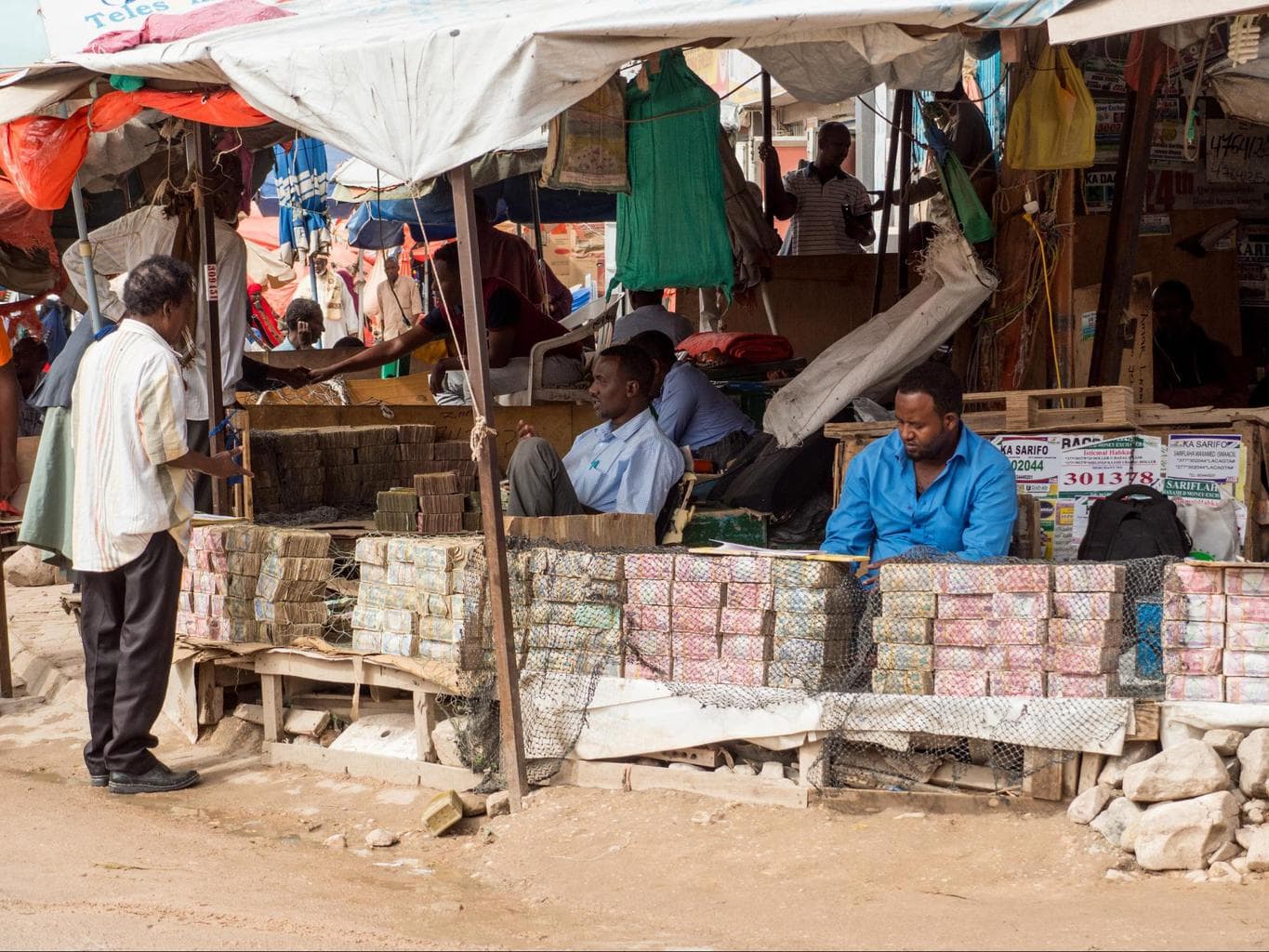
Fourthly, the difficulty and safety concern of carrying so much cash around for medium size transactions and the lack of coins is added to the fact that the Somali Shilling is a highly volatile and inflationary currency locals cannot depend on.
The Financial Times reported in early 2017 that up to 98% of the Somali bank notes are counterfeit as they are easily printed outside the country and reintroduced into the market. The country hasn’t printed any notes since the coup of 1991 when it descended into the chaos that prevails today.
Somali people are resourceful and, faced with all these challenges that couldn’t be solved, the economy came up with an alternative: Mobile money . High mobile phone penetration created the perfect storm for mobile payment and mobile money services to flourish. And they did.
The mobile money service Zaad launched by telecom company Telesom or E-Dahab from Dahabshiil Bank for Somtel users have become the de facto currency used by everyone to pay for everything, from a meal to the groceries. And it is in US Dollars, so it is stable and reliable. Stall vendors and businesses have their Zaad number well marked on their businesses facade to make it easy to transact.
But with all that cash in the electronic format and in US Dollars, locals need a way to cash it out when needed and the money market appeared to fulfill this need.
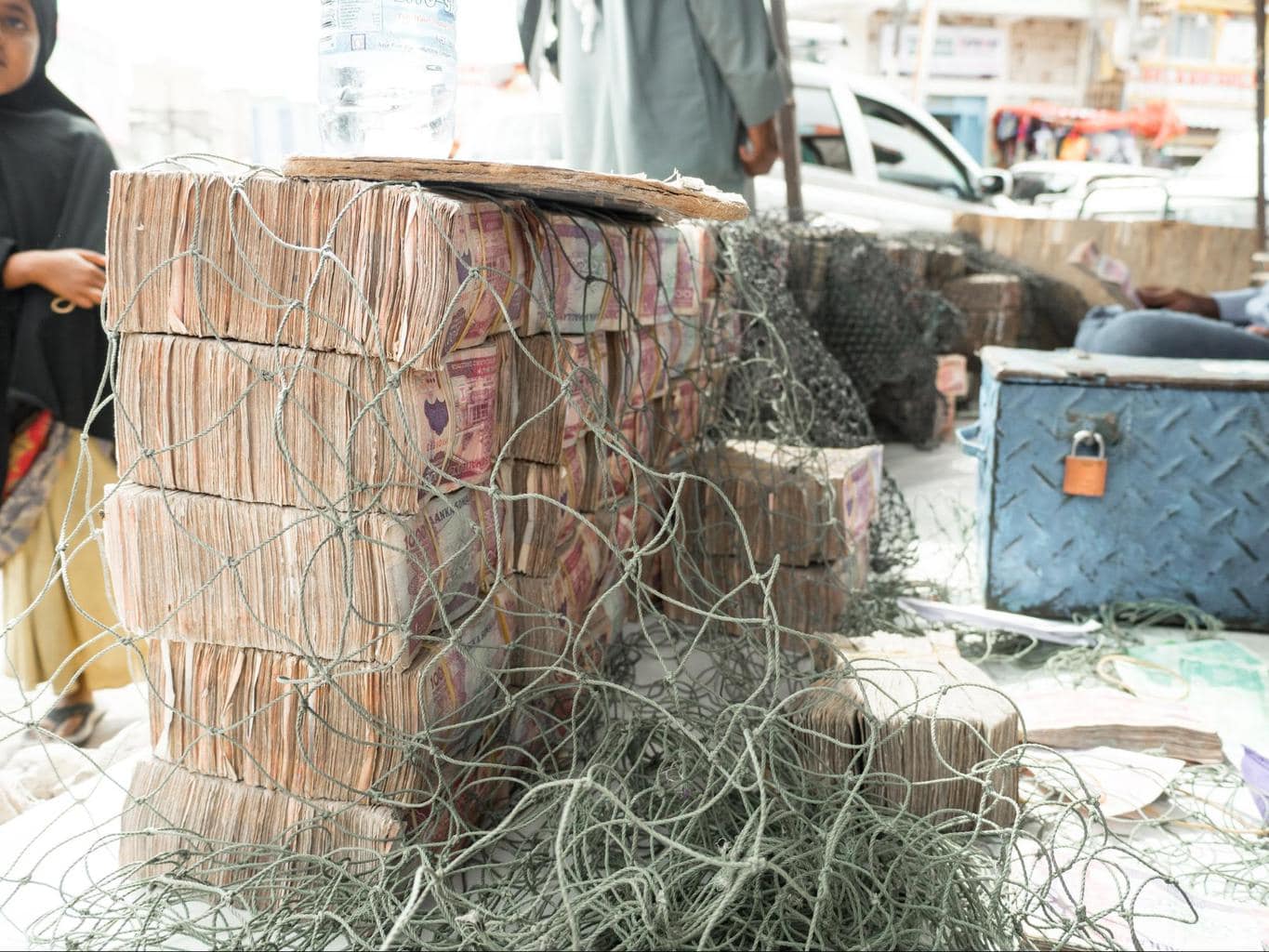
Seeing the traffic and the frequency of transactions in the market is astonishing. I chatted to a couple of the friendlier and more open money market stall owners and one of them with the largest pile of cash, tells me that he exchanges over $20,000 every day . He also shows me every possible currency from the region, from Ethiopian Birr to Djibouti Franc or Kenyan Shilling. He also has Euro and of course US Dollars.
The most impressive part of it all is the fact that these men sit around on the floor, on cardboard seats and maybe a thin cushion, sometimes sipping tea or chewing khat, with their cash neatly piled but without any protection or security . They are not afraid they will be robbed and they could not be more obvious in flaunting their wealth than this.
If you have some foreign currency or Somali Shillings left, this is the time to exchange them and participate in this flamboyant and unique informal banking system .
Somali Air Force MiG jet fighter – Hargeisa War Memorial
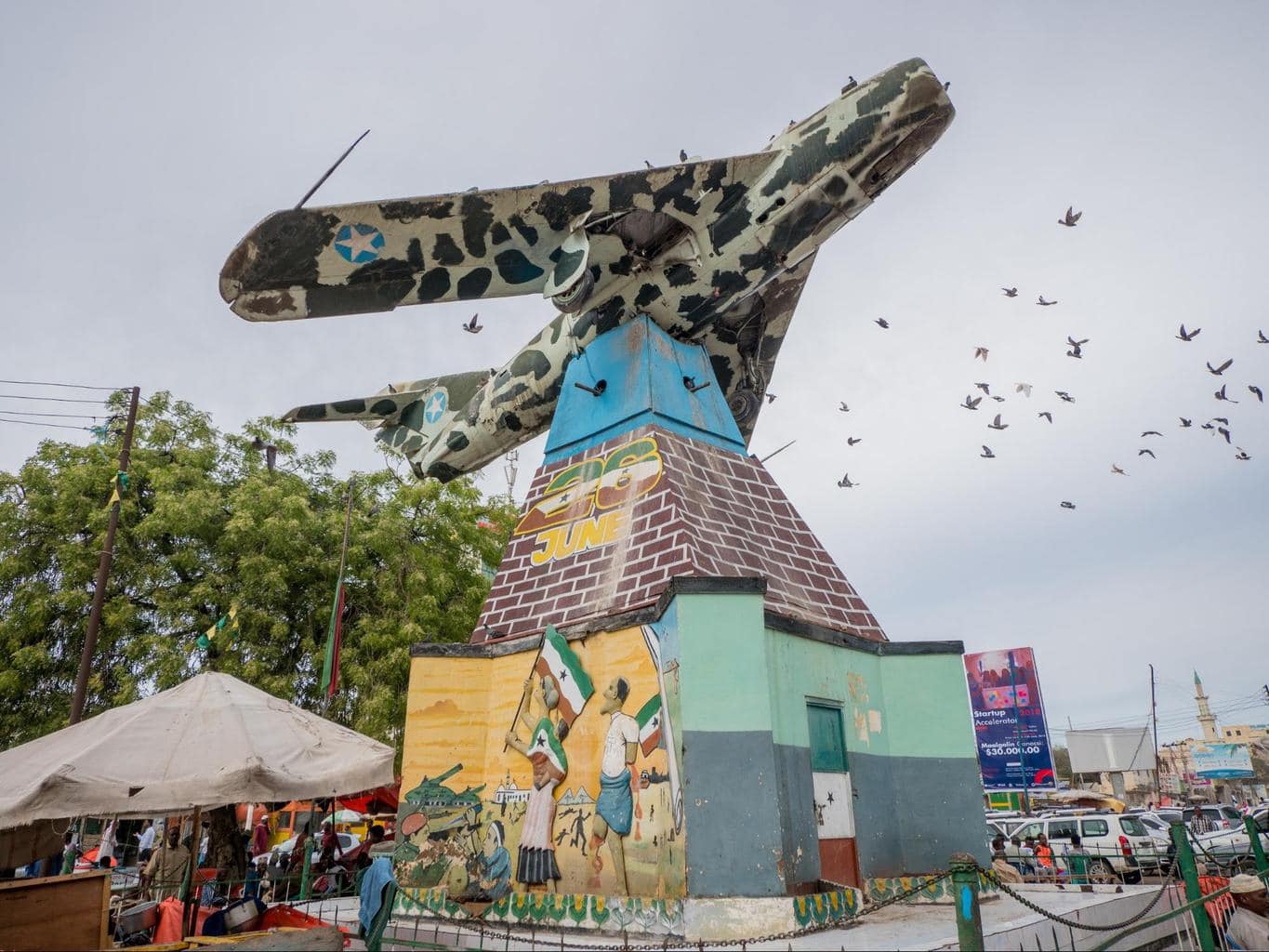
Somaliland is not a place for monuments and landmarks. There is little in the way of this type of sight. Instead, the majority of the things to do in Somaliland are related to experiencing the place .
However, if there is one monument to check out that is the War Memorial in Freedom Square , in Hargeisa which consists of a MiG-17 jet fighter that the locals brought down by throwing rocks and shooting at it.
The plane is an emblem of Somaliland’s independence and struggle with the central Somali government and, although small and usually hidden by vendors peddling anything from shoe polish to clothes, you should stop by and walk around its four faces.
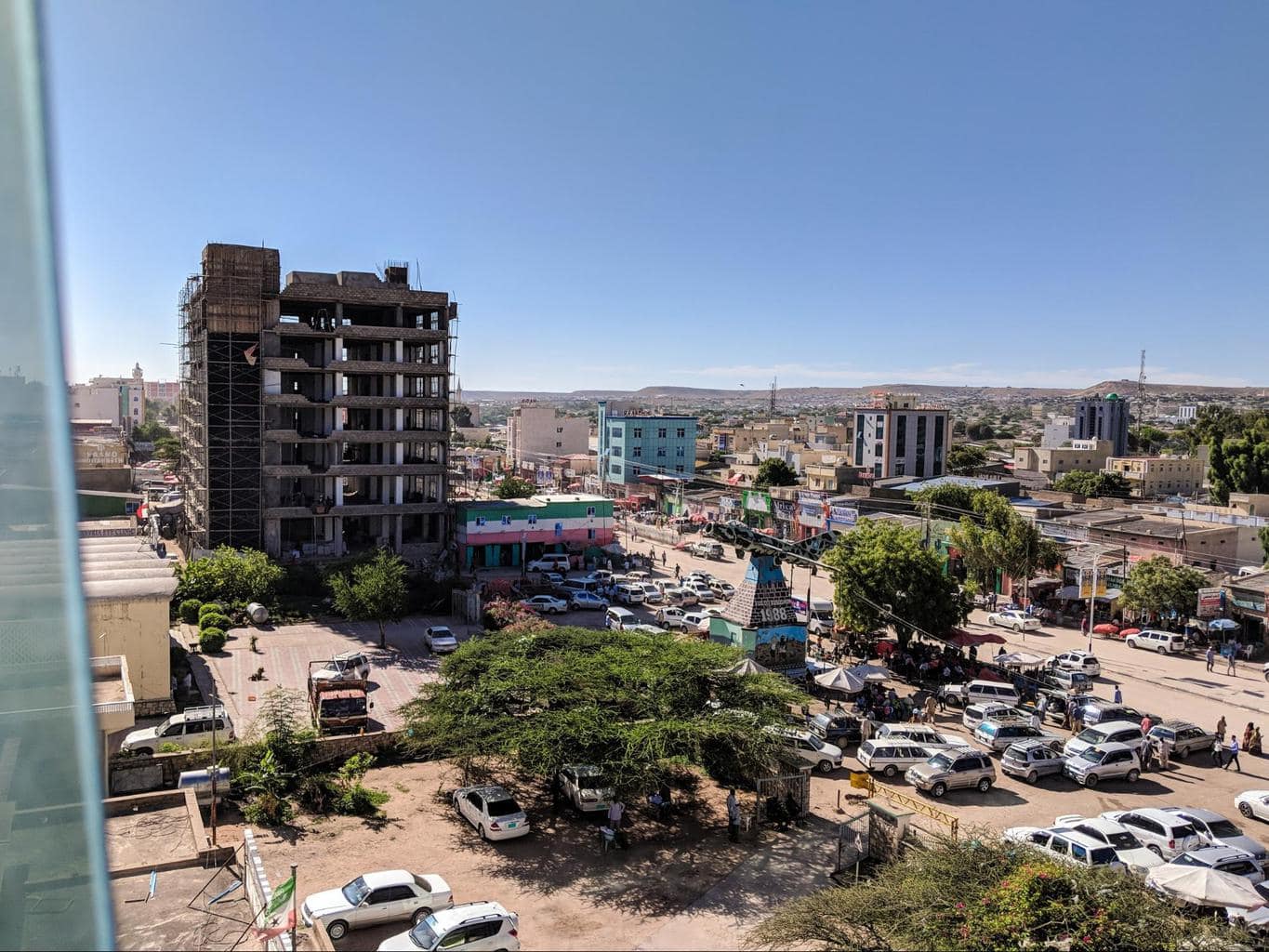
The jet fighter was designed by the Soviet Union in the 70s and used by the totalitarian leader of Somalia, General Siad Barre, to attack and bomb Somaliland in the 80s. At the time, the attacks destroyed between 70% and 90% of the city with shelling and bombings.
This landmark is located almost in front of the Damal Hotel (where I stayed) and you can always pop by the hotel’s top floor restaurant for a meal or a drink and some high-up views of Hargeisa.
Hiddo Dhawr
Hiddo Dhawr is a kind of cultural center and live music venue where Somaliland traditions and music are showcased. If you happen to be in town when there are scheduled performances you can see bands playing on stage. Usually that is on 1 when locals gather to socialise.
This is only one of the few places where you can sample local cuisine in a relatively authentic manner and the setting tries to show visitors how Somalilanders live. Or you can watch it live through their facebook page .
Learn more about Somaliland culture at the Hargeisa Cultural Center
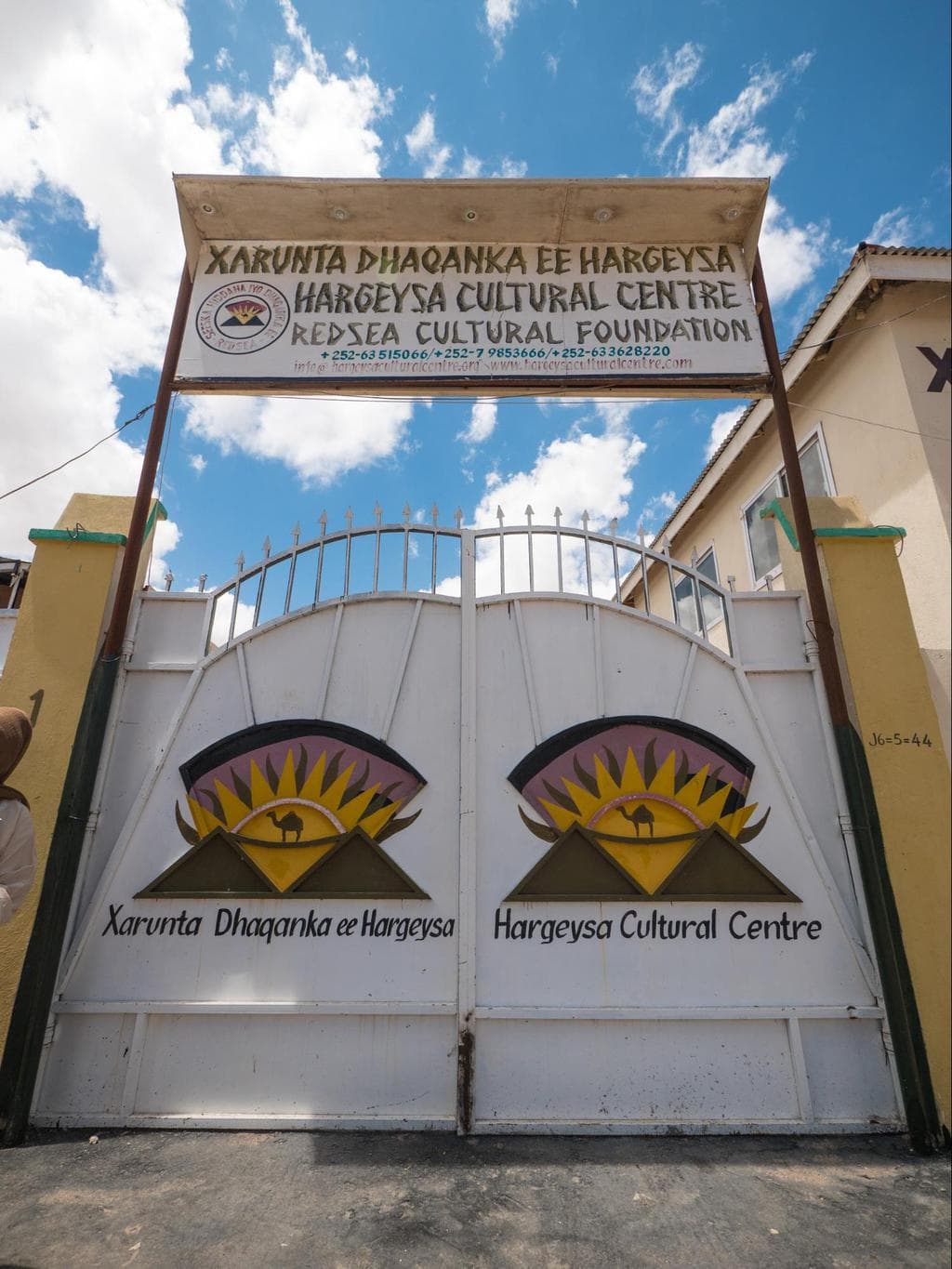
The Hargeisa Cultural Center was opened in 2014 and is a privately owned venue that is a mix between library and an art gallery . The center was created by the Red Sea Foundation , which also runs the annual Hargeisa International Book Fair (also spelt Hargeysa International Book Fair).
Inside the small complex you can find a traditional garden with the plants and fruit trees that grow in the country as well as a two storey library building, with students doing their homework and a few rooms housing artworks, old books and paintings.
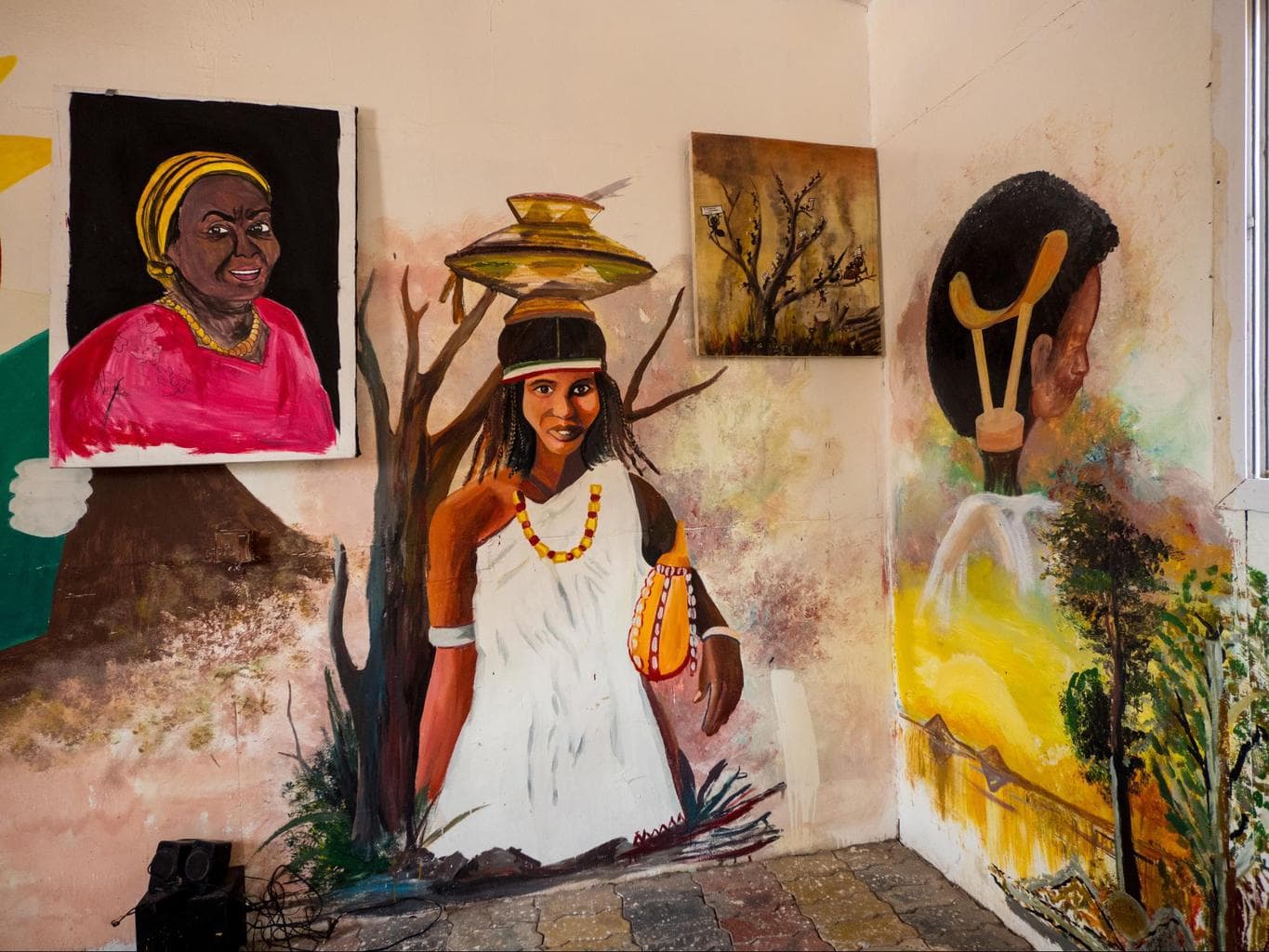
If you visit, the staff will give you a tour of the facilities and explain the stories depicted in the paintings and artworks. The books available at the library are mostly unique and cannot be found elsewhere in the country. These are also a valuable resource for students and professors who come and borrow the titles.
The center also hosts exhibitions, talks and movie screenings.
The Saryan Museum
Although it opened as recently as 2017, the Saryan Museum his is the first museum opened in Somaliland and it intends to promote its heritage and culture.
Inside, you can find a collection of over 2,500 artifacts from prehistoric times to today including maps, stamps, prehistoric items, newspapers, etc. You can also find out about famous Somalilanders .
The museum is a go-to place to learn more about Somaliland’s struggle for independence and was founded by one of the liberation fighters, Saed Shukri Hussein.
The cafe at the museum is also the closest to a western cafe you will find in Hargeisa with clean premises, nice tea and fresh juices and even some cakes. It is best to call ahead and make sure the museum is open and they can receive you for a tour since the low numbers of visitors means unexpected closures are common.
Visit the port town of Berbera
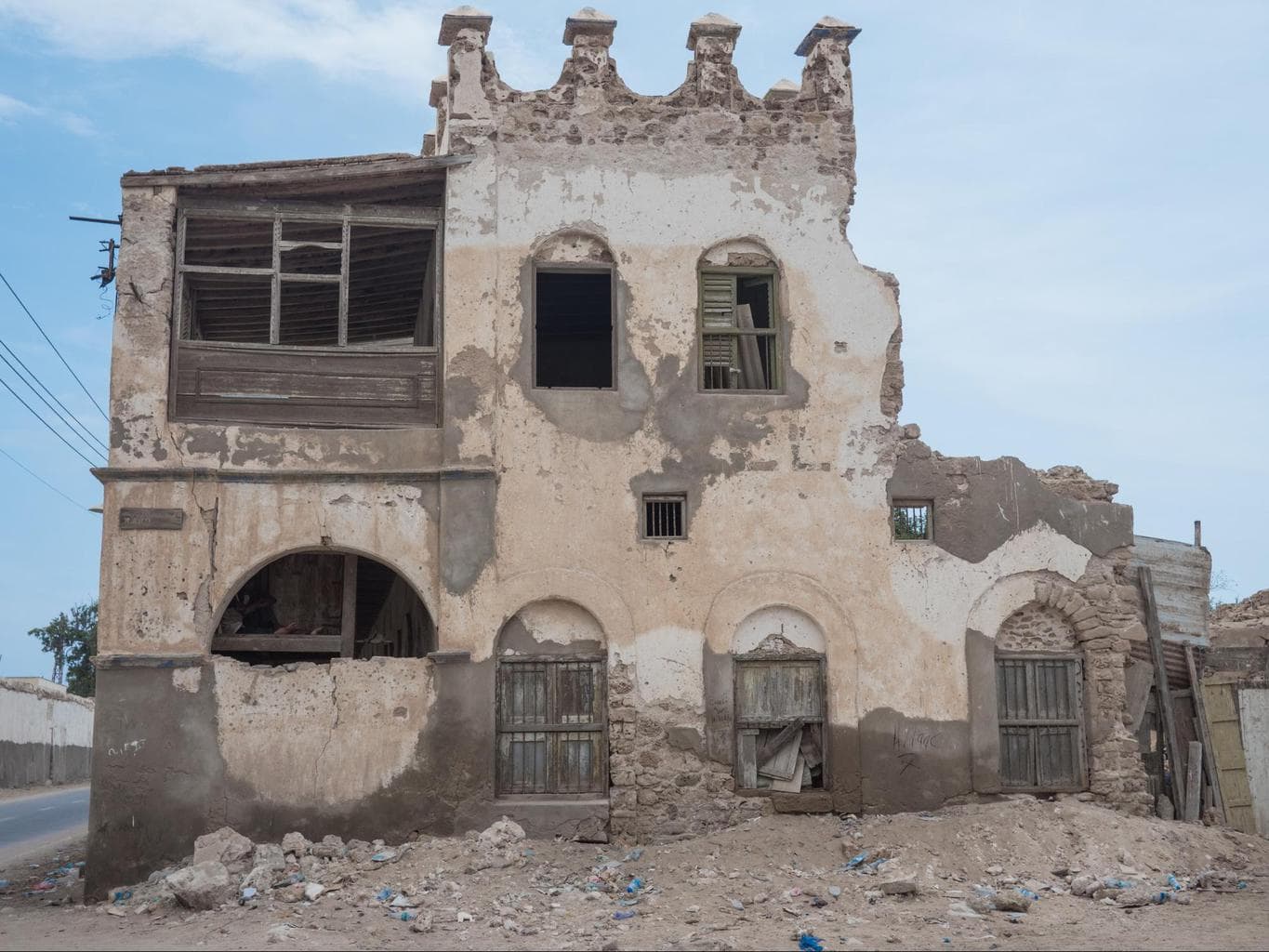
After Hargeisa, Berbera is the city in Somaliland most visited city by tourists , due to its easy access, historical significance and empty beaches. Although none of these features are necessarily so great that they would justify a trip on their own, in combination they make Berbera a reasonably interesting place to spend a day or two.
Driving North East from Hargeisa, you pass the Laas Geel cave paintings after a couple of hours, and then approximately the same distance again will get you to Berbera. So, potentially you could leave Hargeisa after breakfast, stop at Laas Geel on the way, and be in Berbera in time for a late lunch.
In reality, the quality of the road infrastructure is pretty poor , and lots of things can go wrong, so this sort of timing is largely theoretical. For us, it was a flash flood making one of the many wadi crossings impassible. A good excuse to mingle with the crowds of other stranded people, but essentially a five hour pit stop.
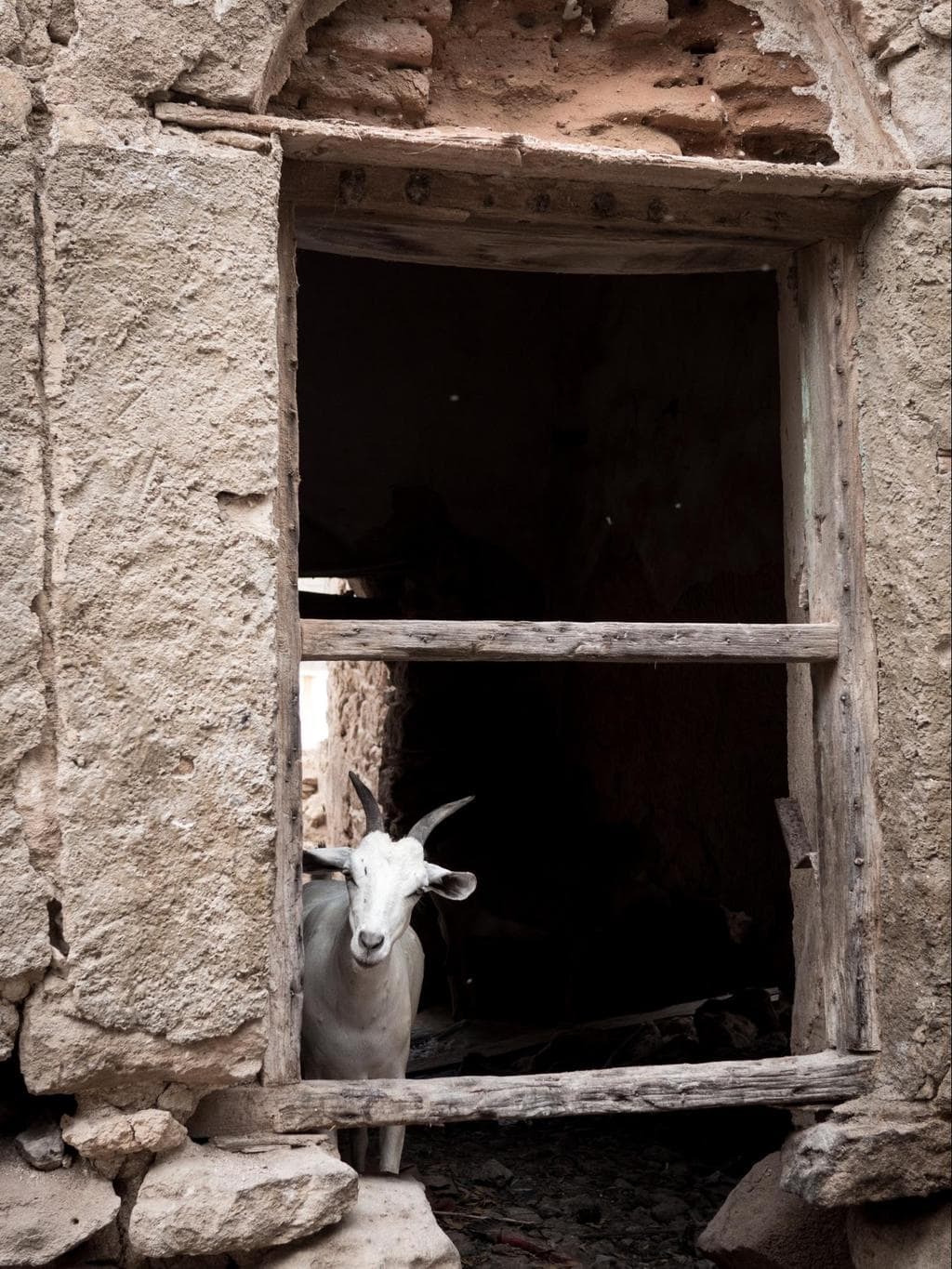
Berbera itself is a relatively sleepy port city . A population of around 50,000 centered around the local fishing industry and the nearby container port, recently constructed by Dubai’s DP World . Berbera has been a significant port for East Africa for at least the last 2,000 years, and indeed was the capital of Somaliland during the Colonial period of the late 19th and first half of the 20th centuries.
Remnants of its historical significance make a walking tour of the old city a worthwhile exercise. The old port and adjacent fish market is the place to start where you can witness some vigorous trading between Yemeni fisherman, local store owners and Djiboutian traders with the mix of Arabic, French and Somali adding to the sense of chaos.
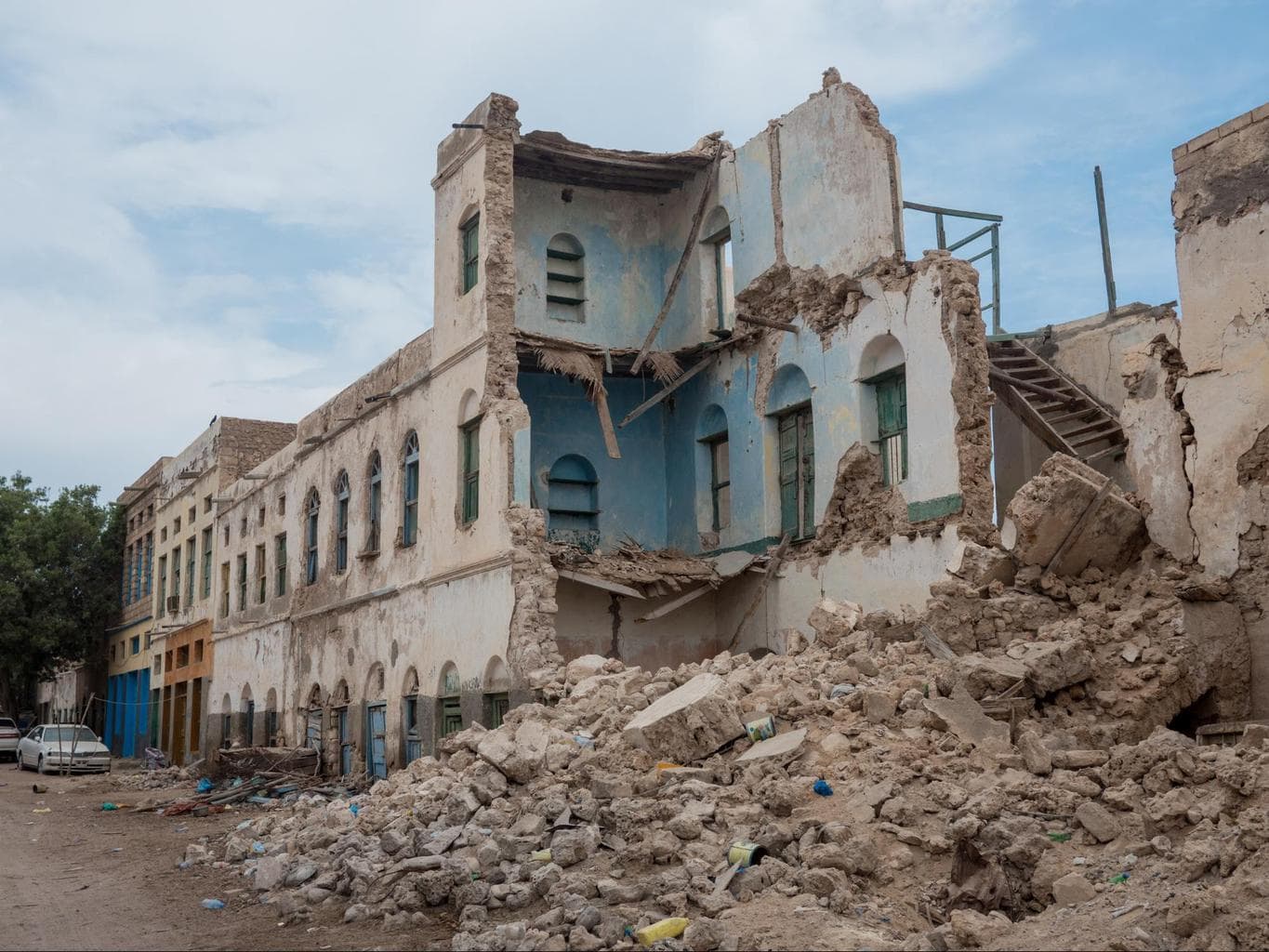
Turning away from the port to the side streets, you find broad unpaved streets flanked by British and Ottoman colonial buildings, most in states of severe disrepair and serving as a source of building supplies, anchoring for shacks and shelter for the many goats. Most people we encounter are friendly and mildly curious, if somewhat camera shy.
There were one or two occasions where the interactions with locals turned a bit frosty, once with an aggressive demand for money , and once with a Yemeni fisherman expressing his strong views on American foreign policy. Neither was too worrying, but I was glad to have our guide to help bridge the language barrier.
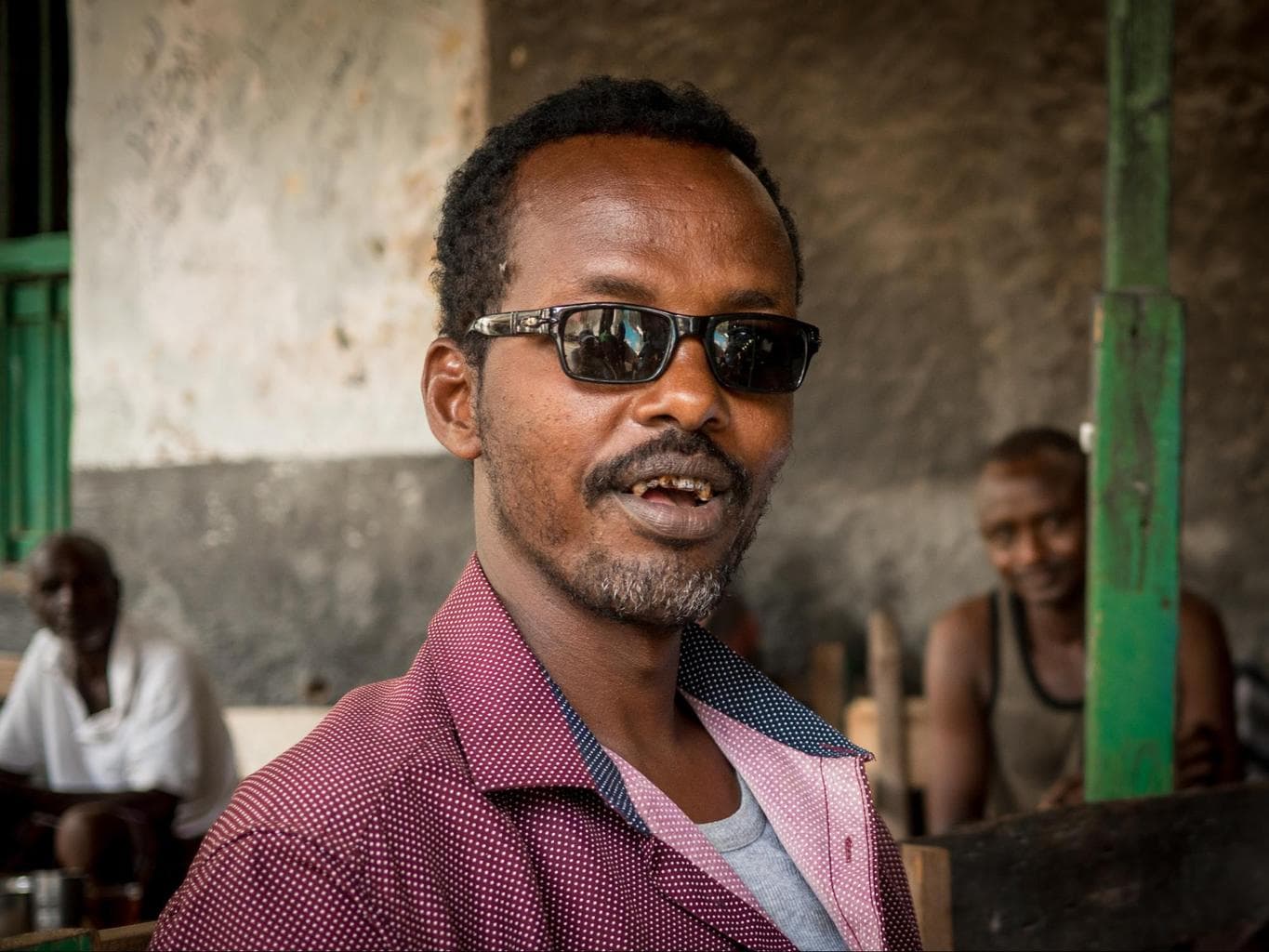
The numerous local cafes on most streets provide some respite from the heat of the day, and the opportunity to chat to some locals. The cafes consist of ramshackle collections of benches and chairs, serving the local sweet chai to the exclusively male clientele. By the early afternoon, the khat chewing had already started, and the people were friendly and courteous, although I wouldn’t say it was an entirely relaxing environment, mostly due to the rather still faces.
A short drive across town gives the chance to wander around some slightly better preserved Ottoman buildings, a modern brutalist area known locally as ‘Little Moscow’ , and a chance to chat to a few other passers-by, curious as to why we were there and what was our marital status and religious persuasion.
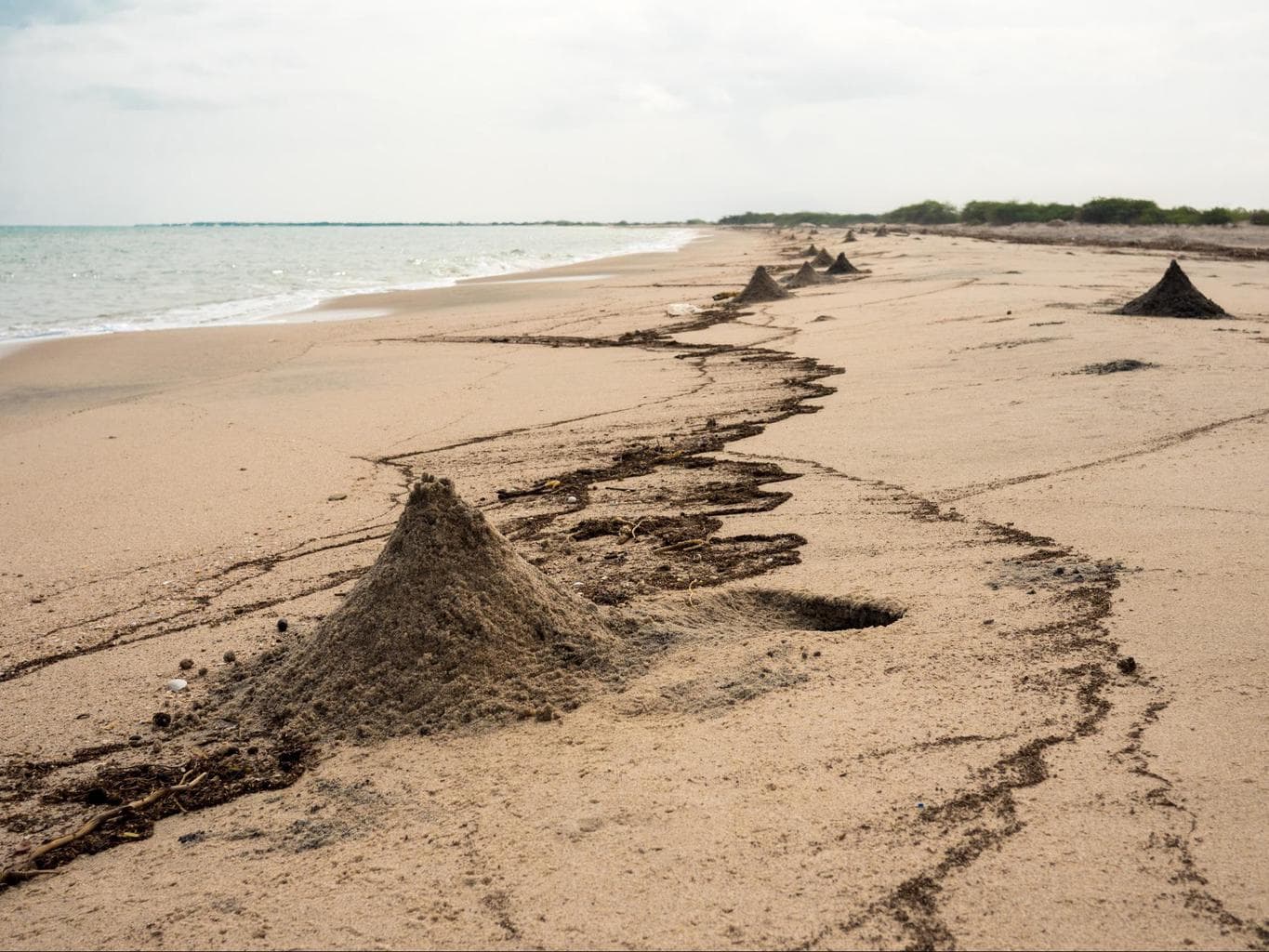
A twenty minute drive from downtown Berbera takes you to the beaches which are part of most tourist itineraries. Currently there is only one fairly rudimentary beachfront hotel , but judging by the number of plots and new developments along the way, it will not remain this way for long.
The beach is long, featureless and largely deserted , save for a large number of pretty sizable crabs. A fine place to relax and take a walk, so long as you’re not expecting white sand, palm trees, sun loungers and women in bikinis.
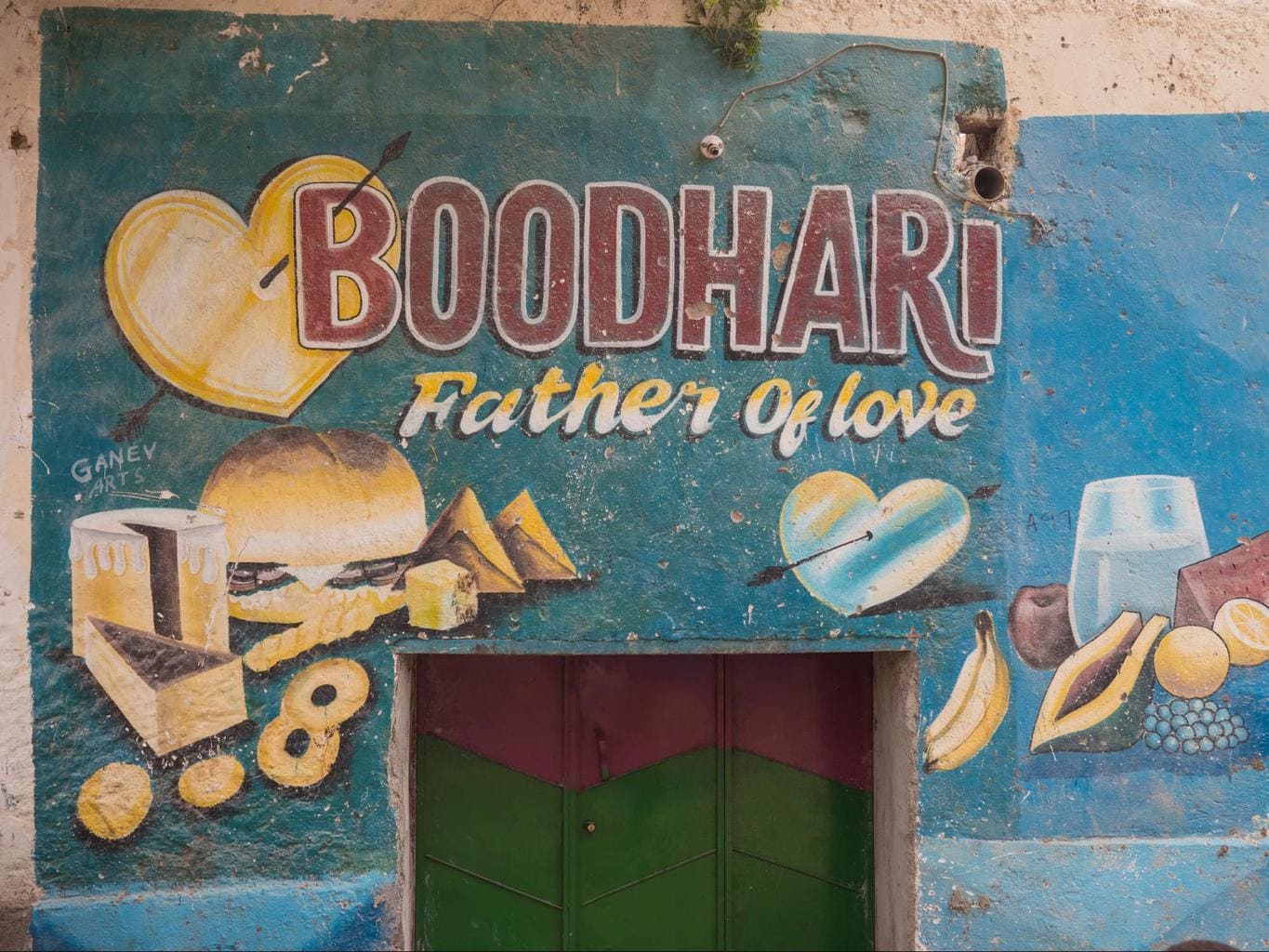
Evenings are quiet and dining options limited to a couple of local joints with the colorful murals displaying the food they are offering. The good thing is that Berbera at least has the option of getting fresh fish , in contrast to the dominance of camel and goat meat in Hargeisa.
Departing from Berbera for most tourists is a drive back along ‘Road Number 1’ to Hargeisa. There is an international airport with the occasional regional flight to Djibouti or Mogadishu, but schedules change frequently so need to be checked in advance.
For the more adventurous, there is a road that runs South East taking you to the mountainous Sanaag region , and ultimately down to Puntland and on to the undisputed parts of Somalia, but those trips require weeks rather than just a few days.
Zeyla (Seylac)
The coastal town of Zeyla (also, Seylac) is believed to be the first entry point of Islam into Africa and is located near the border with Djibouti so if you are visiting the country you might want to add a quick stop in Zeyla because it is rather far from Hargeisa.
This is an ancient port city with several mentions in many historical texts including the Bible and a fascinating past . The city is known to have been used as the main port for the ancient Berber tribes , the original inhabitants of this part of Somalia, to set sail towards Arabia and Egypt and trade their goods, including frankincense.
Through the centuries, the city evolved and grew into a prosperous and multicultural place with peoples from the many empires that dominated the Middle East, Africa and even Europe at the time. By the 19th century, Zeyla had declined in importance and was reduced to a small city with mud walls. It was subsequently controlled by the Ottoman Empire and then the British and when the civil war erupted in 1991 the city was destroyed, although modest reconstruction efforts are ongoing.
Today, visitors will be able to wander its ruined streets and try to imagine what it was like hundreds of years ago although not much is left of this ancient city. Zeyla’s Masjid al-Qiblatayn ruins are unique because they are one of the few ancient mosques with two mihrabs each pointing at Mecca and Jerusalem.
Some of the other things to see there are the coral reefs and the few offshore islands . This is a much unexplored part of the country and it would make sense to add it to your Somaliland itinerary if you are also traveling to Djibouti by road.
Look out for the leopard tortoise, one of the Small 5
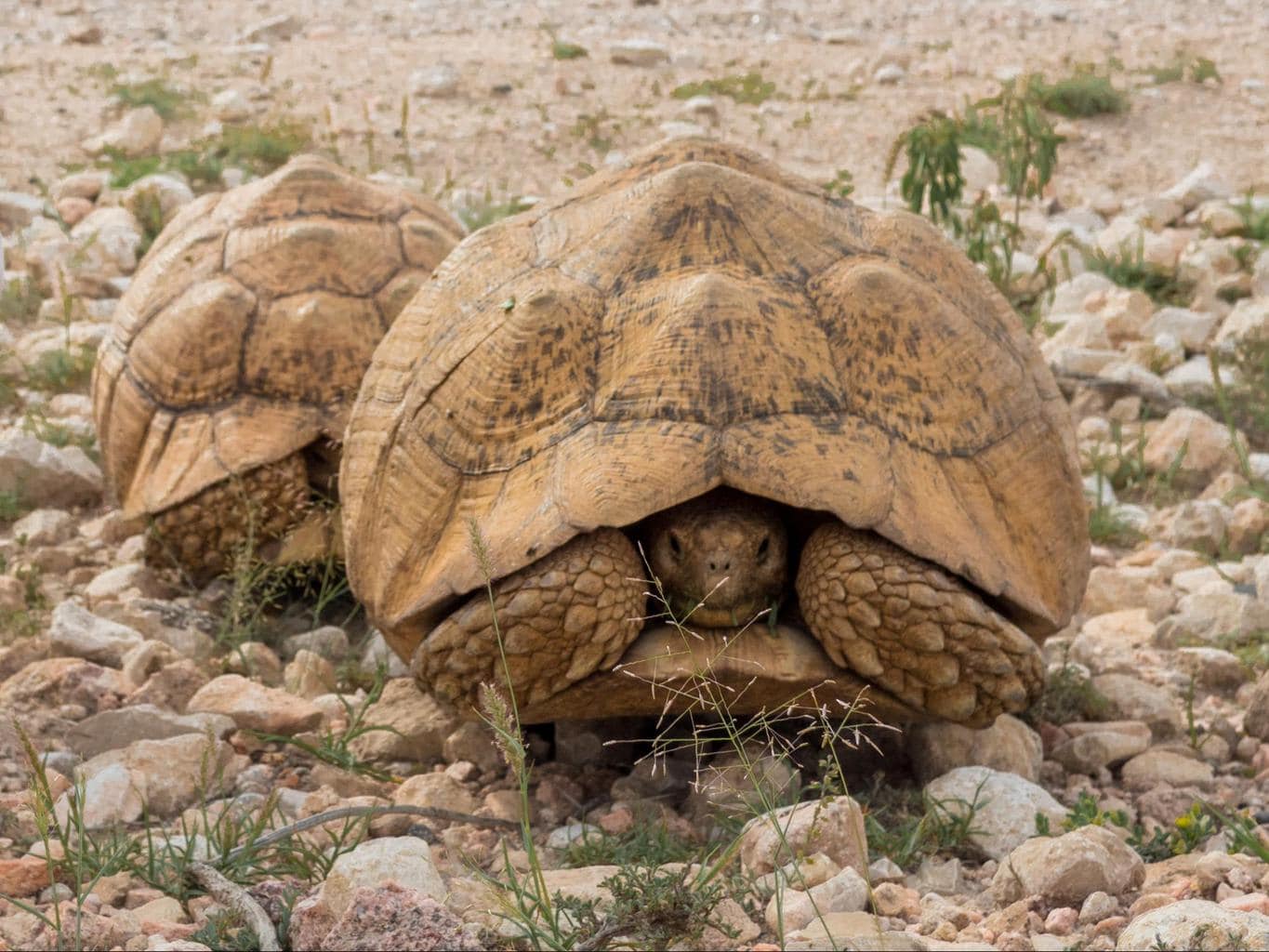
This endemic animal to Eastern and Southern Africa is easily spotted by the side of the road. As it is remarkably slow (as it would be expected), if you look out as you are driving and you spot one you can probably stop, jump off the car and take a selfie with them, albeit you may have to wait for a bit for their shy faces to come out of the shell.
The leopard tortoise is part of the Small 5 along with the rhino beetle, the red-billed buffalo weaver, the elephant shrew (also inhabiting Somaliland) and the antlion, a grouping that takes off from the famous Big 5 (lion, leopard, rhino, buffalo and elephant) and is the only tortoise that can swim and raise its head .
The livestock market in Hargeisa
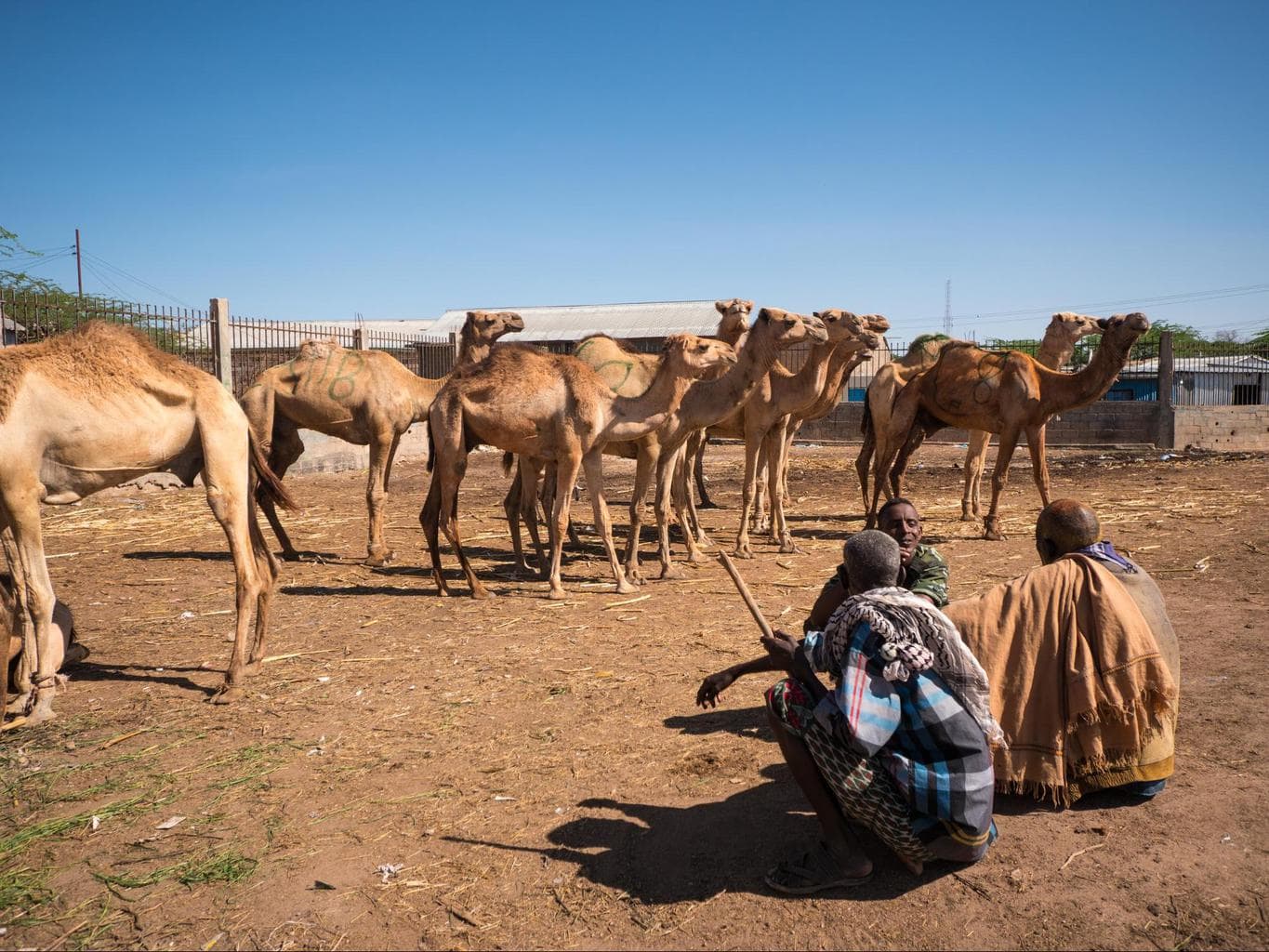
Livestock markets in agricultural and pastoral countries are a great way to understand what fuels their economy . The livestock market in Hargeisa is a pretty good example and it is one of the most fascinating tourist attractions in Somaliland. No visit to Somaliland or Hargeisa is complete without a quick trip to the livestock market.
What can you see there? Don’t expect this to be an organised meet-up or permanent structure. The market is simply an agreed place to come and sell the animals. Sellers come with their best ones and buyers know they will find the right animals there.
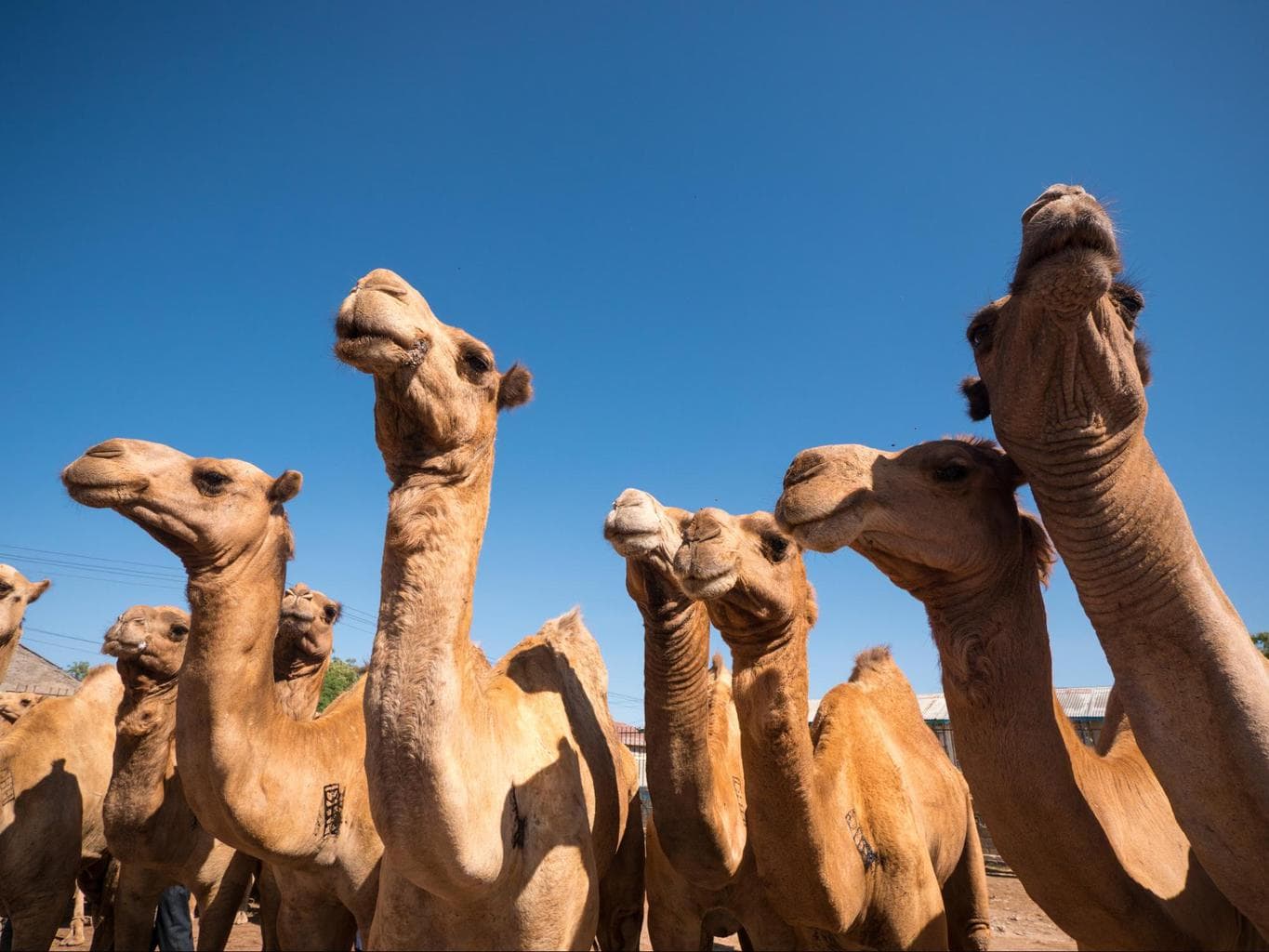
The market caters mostly to camels and goats , the animals who provide essential livelihood to most Somali people. Having around 7 million camels means that Somalia accounts for half of the world’s camel population and these animals can be found roaming the land everywhere in the country.
As a tourist in Somalia, it is quite amusing to see these funny animals everywhere and they often make for the best pictures, like this image of a wet camel trying to hide from the pouring rain I took by the side of the road on our trip back from Laas Geel.
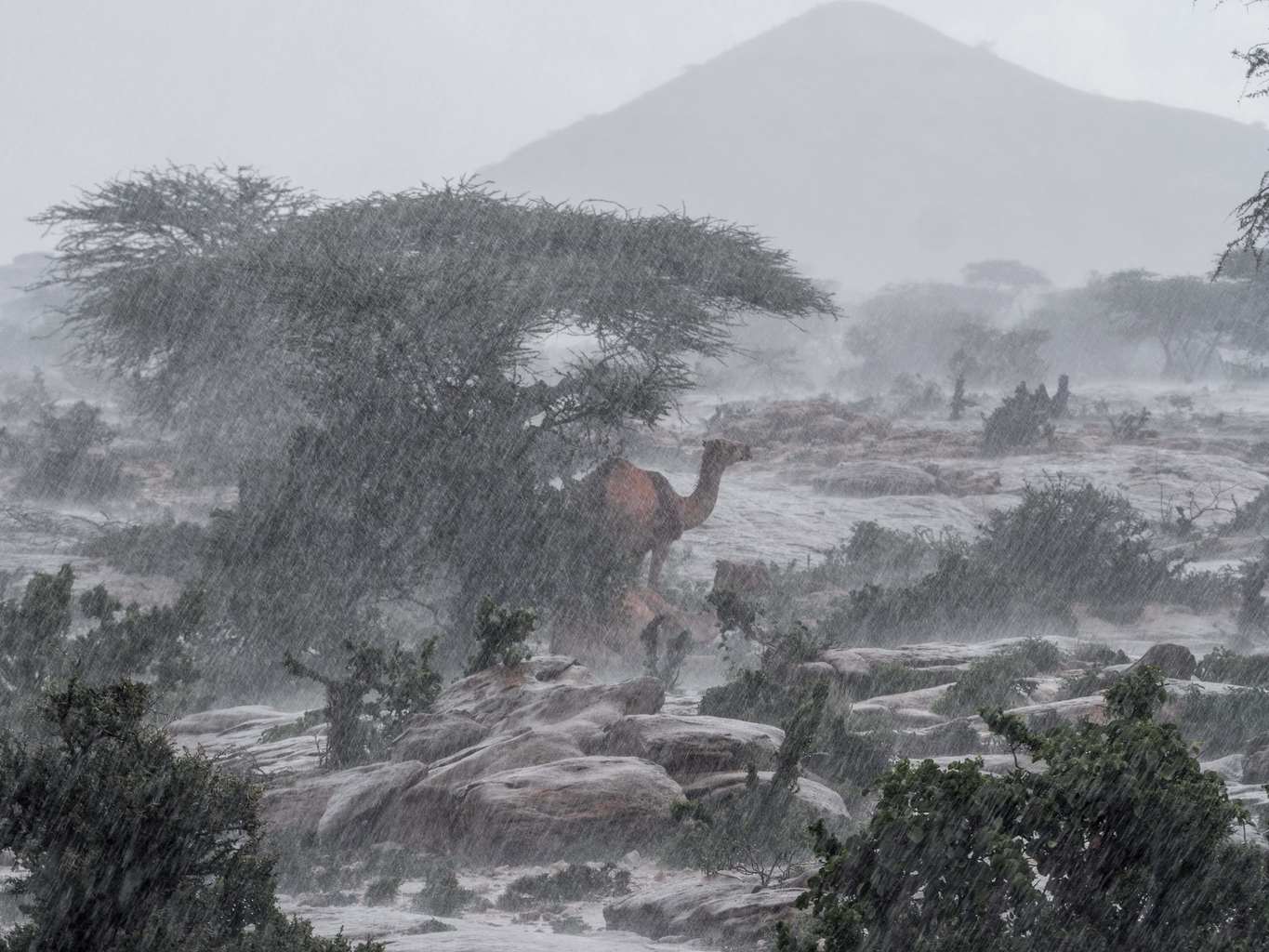
At the livestock market prepare to find all sizes of camels. The camels are marked with the name of the buyer once they have been sold and are otherwise tied together with ropes. Sellers and buyers engage in heated bargaining on price. Goats are also available, especially the funny looking Somali goats which have a thick amount of fat at the end of their spine and under the tail and are easily recognised by their black head and white bodies.
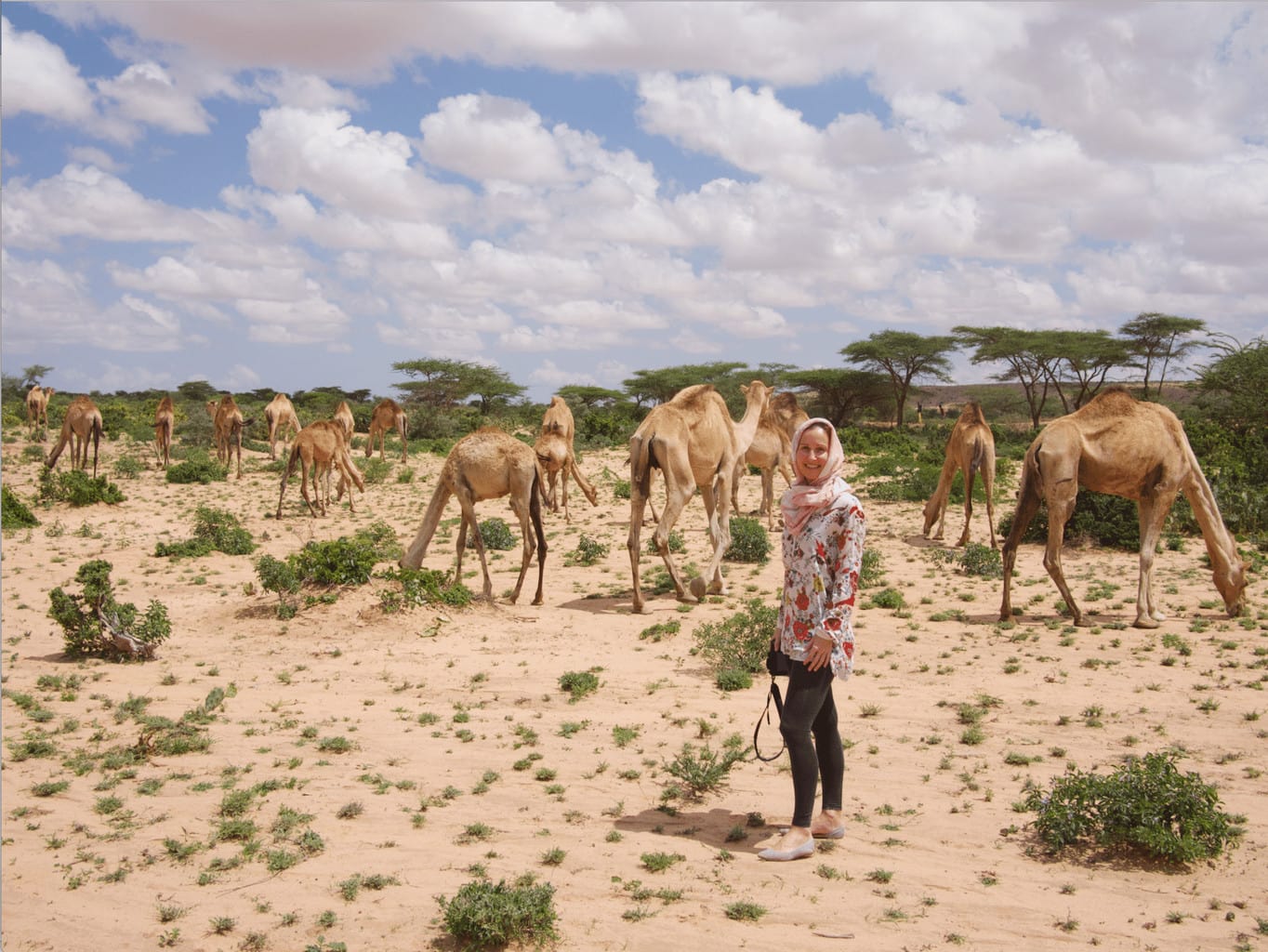
Both camels and goats are exported to the Middle East and not just used for internal consumption and camels can fetch really high prices in the markets overseas. In Somaliland, camel and goat meat is practically the only food on offer, often served with spaghetti or rice.
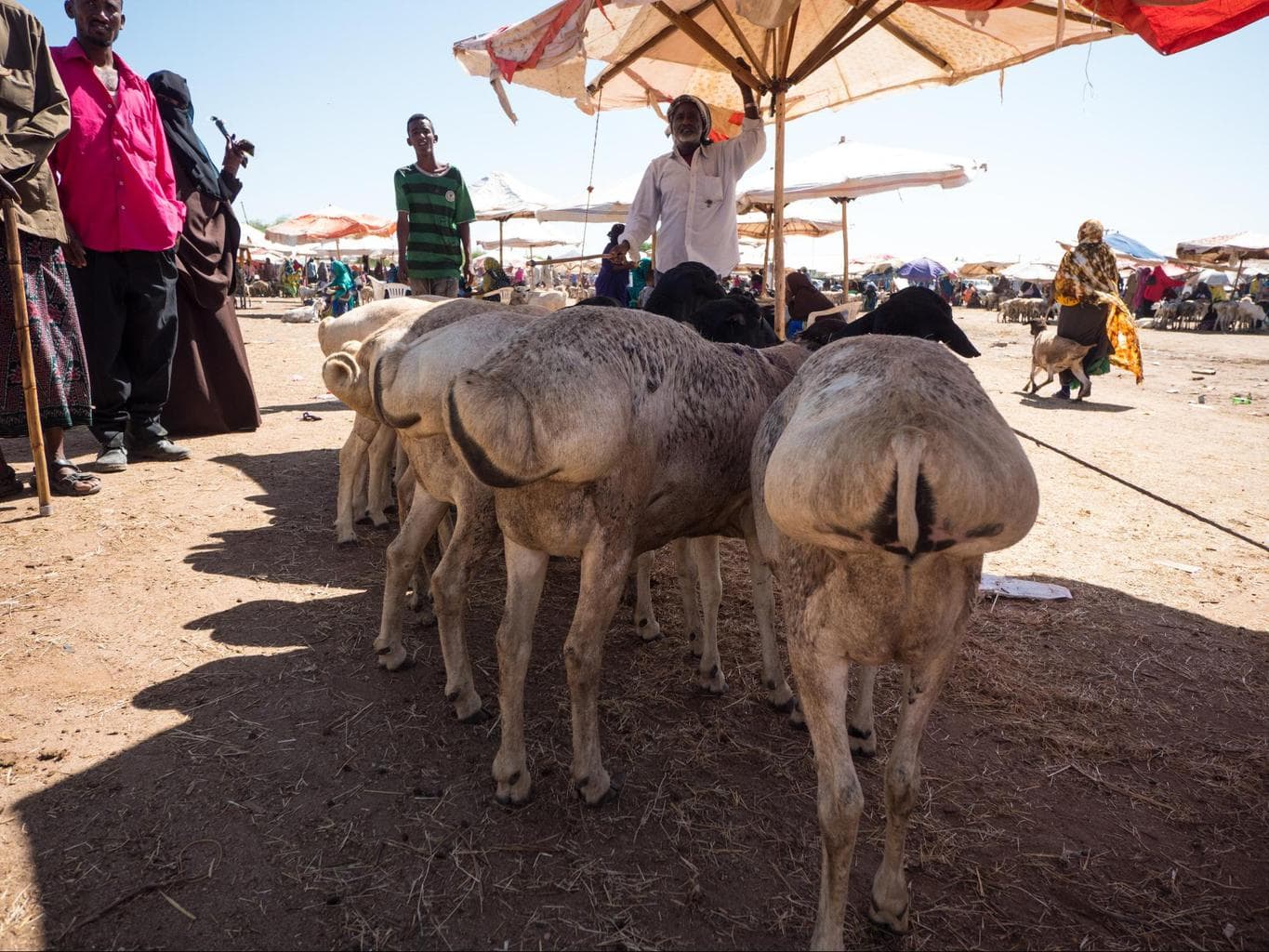
Come to the market to observe the merchant dealings and chat to the people with the help of your guide. You can go there alone but our guide recommended we use the Special Police Unit staff , which we did as a staff member was provided to accompany us. People are not always open to visitors and their reaction can be volatile and unexpected at times.
I found the opposite in my visit and aside from being told by a few women that I should be wearing a dress, I had no issues and mostly felt that people were curious and happy to engage in conversations and let me take their picture. Do not take any photo without asking for permission as things can get really ugly if you do.
Explore the market in Hargeisa and get a dress made
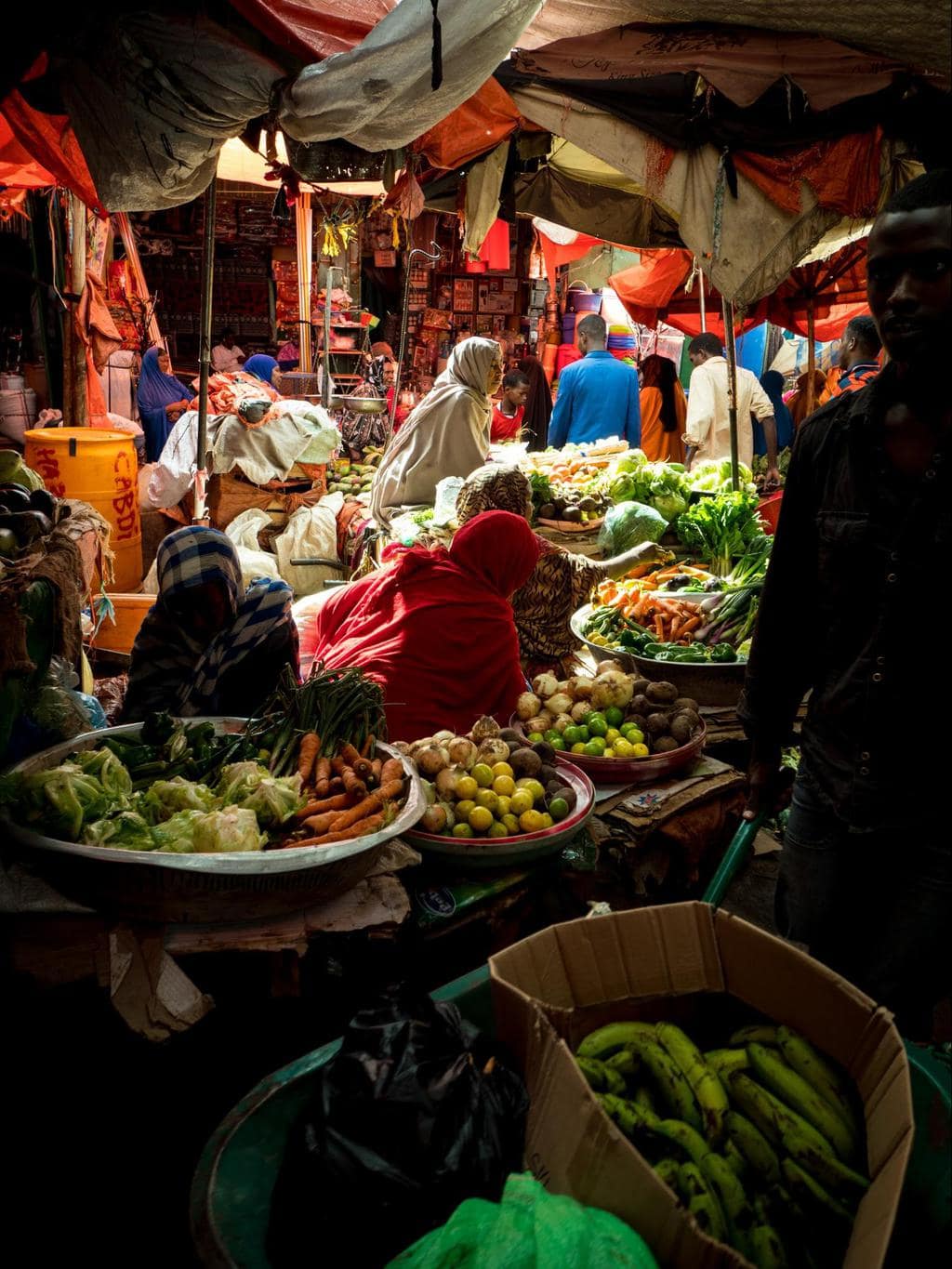
I love markets. Wandering around buzzing streets is one of my most favorite things to do anywhere. Hargeisa’s downtown area , near the Damal and the Oriental Hotel, is filled with street vendors selling everything, from fruit and vegetables to clothing.
Do not miss the chance to find the souq , hidden behind the main streets, where you can join the chaotic and busy endeavours of porters and market vendors. It is hard to tell you where the souq entrance is, but, as you walk around the streets, look out for people going into buildings or follow the porters with their wheelbarrows.
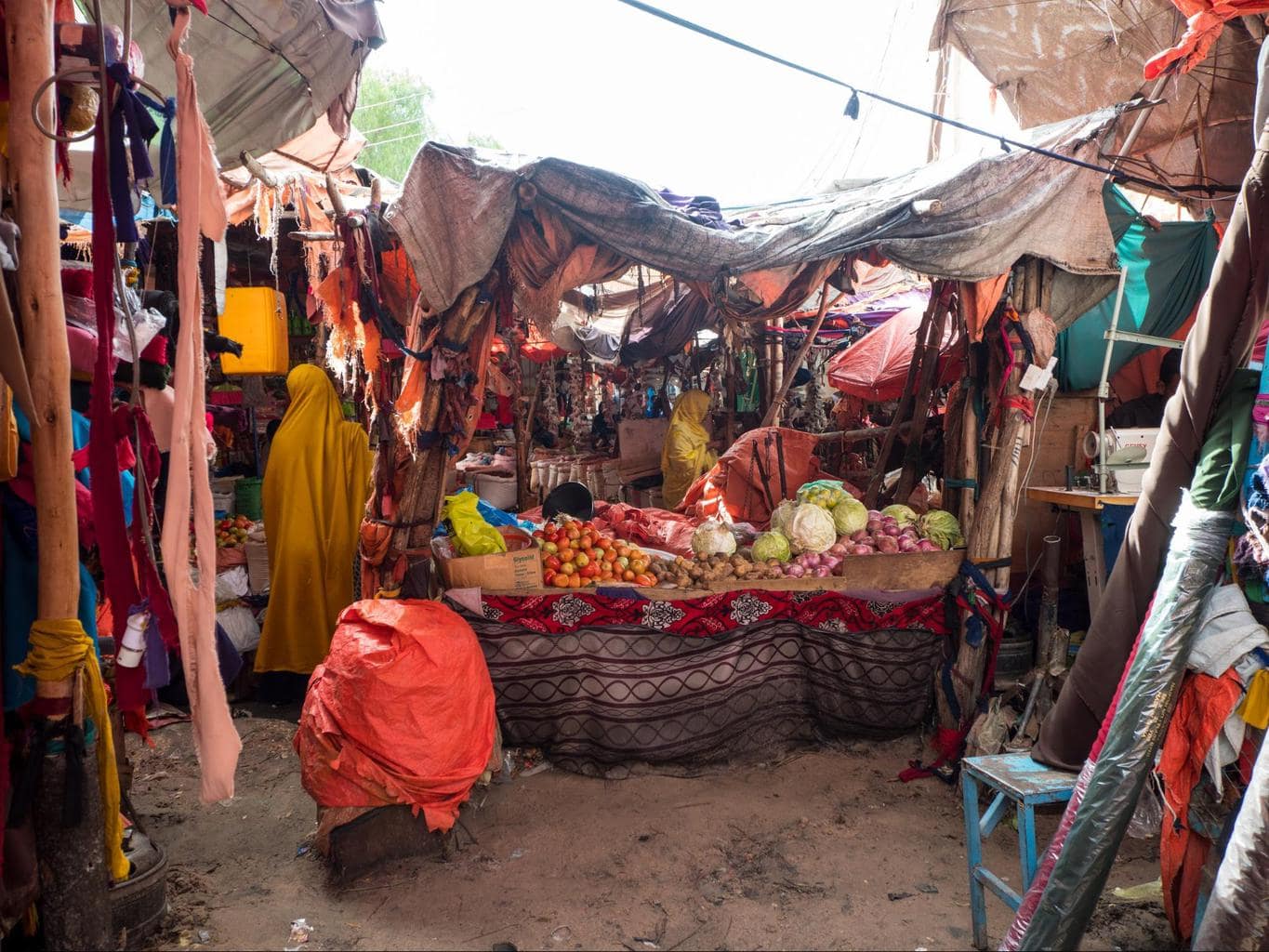
In the souq, you will find fabric for sale and there are sewing men around ready to make a dress out of your chosen pattern. I got one made in about 10 minutes. This is highly recommended if, like me, you came with the expectation of wearing trousers and realised that is a big no-no.
You can also find spices and herbs, vegetables, fruits and even gold sold in the streets as if it was something of no value.
Make sure to ask people for photos before taking them. Some will be averse to it, others will pose and want to see the photo you took.
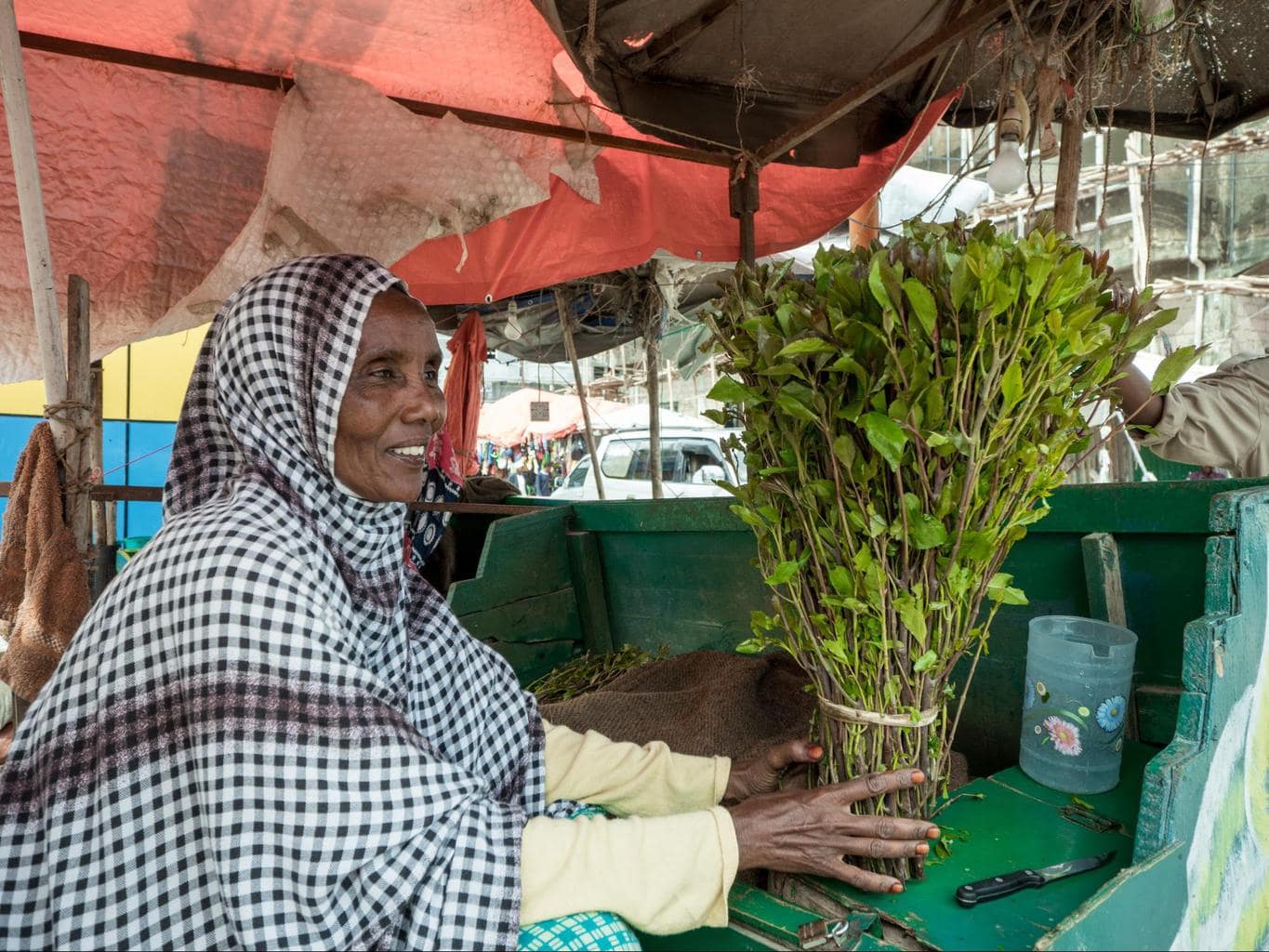
Khat is a green leafy branch consumed across the Red Sea countries of Yemen, Ethiopia, Djibouti and Somalia as part of social settings and age old traditions.
I saw it in Yemen as well as in Djibouti and I was not surprised to see it in Somaliland where khat sellers are everywhere and the plant is grown in the higher and more verdant areas. Khat is also known as qat, chaat or gat.
Khat contains an amphetamine-like stimulant and is considered a mild hallucinogen and pretty much every single man in these countries chews it from early afternoon until late night. Khat is considered a controlled substance by the World Health Organisation that does not produce strong dependency and is not believed to cause death. As a result it is illegal in several western countries like Canada, the US, the UK and Germany while legal in others.
If you are curious to see how it tastes, chewing khat is one of the most unique things to do in Somaliland . Beware, it is quite gross, or at least that is what I think every time I try it. It does indeed taste like you would expect chewing leaves to: like eating green grass.
Eat camel meat or drink camel milk
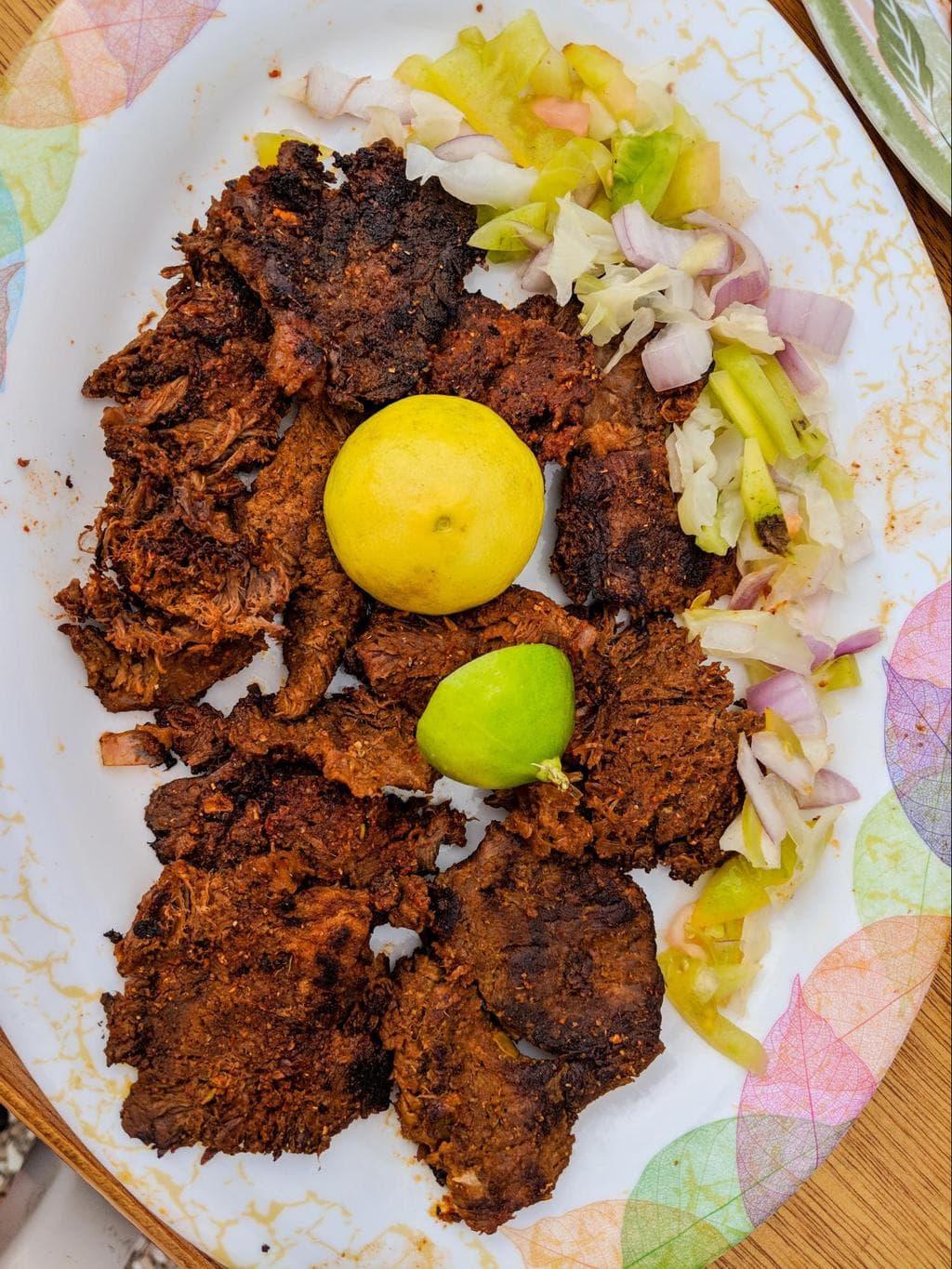
On the subject of food, Somaliland has some of the most consistently repetitive cuisine I have ever seen and it consists entirely on camel meat and spaghetti . If you are lucky, you can also find some tender goat meat, but it is far less common, and for a change, you can probably get rice instead of spaghetti but this is the staple dish that is served and eaten across the country.
Naturally, after a few days you will be utterly bored and tired of the camel meat in which case try to head to some of the larger hotels for a bit of a change in food.
If you are brave, try the camel milk as well, but not from the side of the road where you are sure to end up with food poisoning (even the salads at the top hotels will send you to the emergency services at the hospital, as I discovered). It is believed to have great nutritional value and be better than cow’s milk.
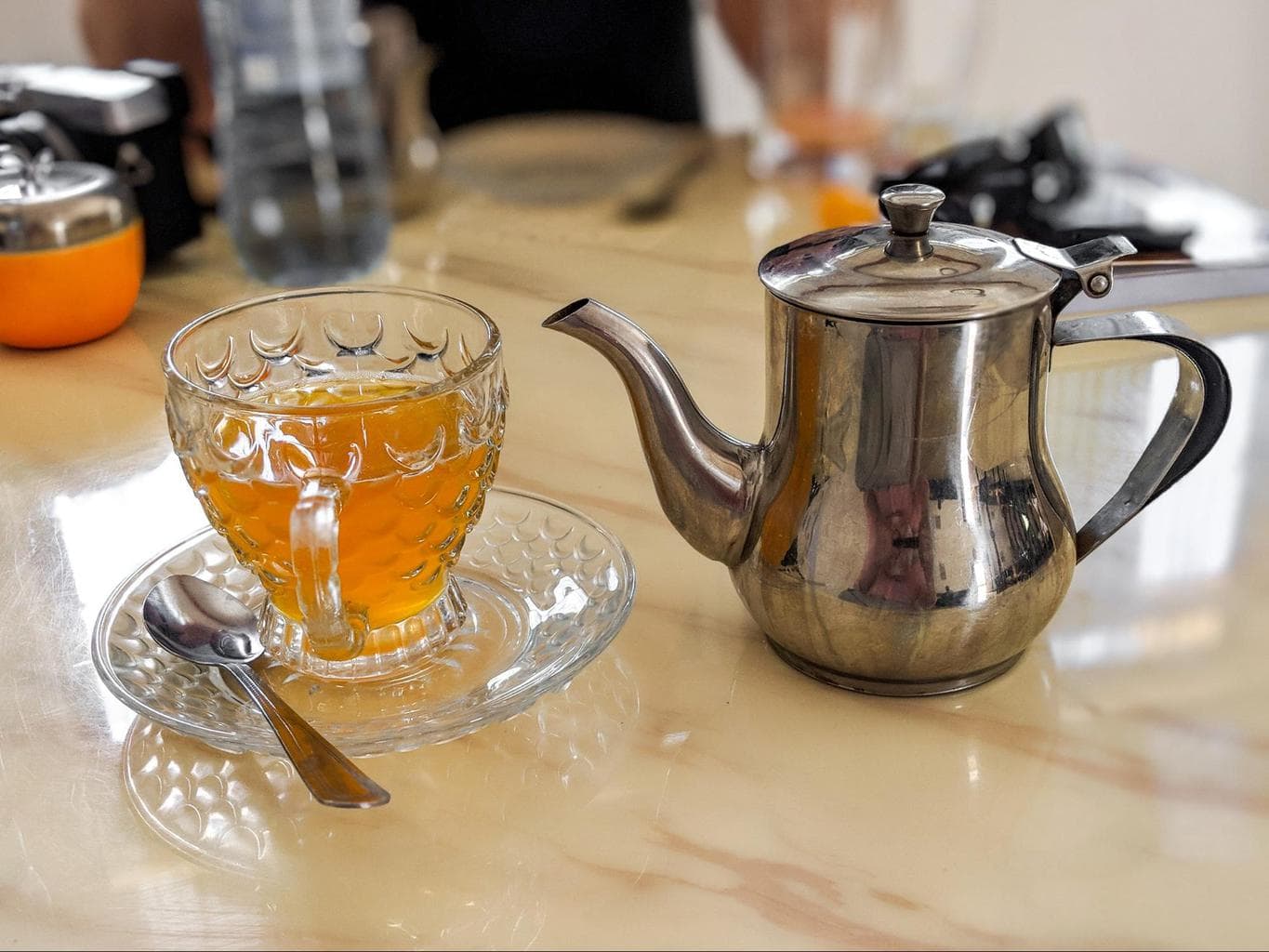
Alcohol is forbidden in Somalia and there is little in the way of party or clubbing. Somalis spend their time drinking tea and chewing khat. If you are traveling outside of Hargeisa and to Laas Geel or Berbera, you will not doubt need to stop for toilet breaks or a drink. Tea houses , where camel meat and spaghetti/rice are served, abound and you will have no issues finding one with a toilet nearby, or simply use nature.
Our guide certainly thought tea stops were part of the itinerary and we stopped a few times for one. This is perhaps one of the most local things you can do in Somaliland. If the setting allows, feel free to strike a conversation with anyone who speaks English or who is keen to talk you up.
Somaliland has been attracting locals that emigrated and wanted to return home and help rebuild the country for years so it is not hard to find someone whose relatives are still abroad or who have lived where you come from, especially if you are British.
Weather in Somaliland
The best time to visit Somaliland is from December to March when it is not too hot in the coast and there are no rains. From April to September flash floods can make roads impassable and strand you for hours when a previously dry wadi suddenly fills with torrential rains and cuts a main road, like it happened to us.
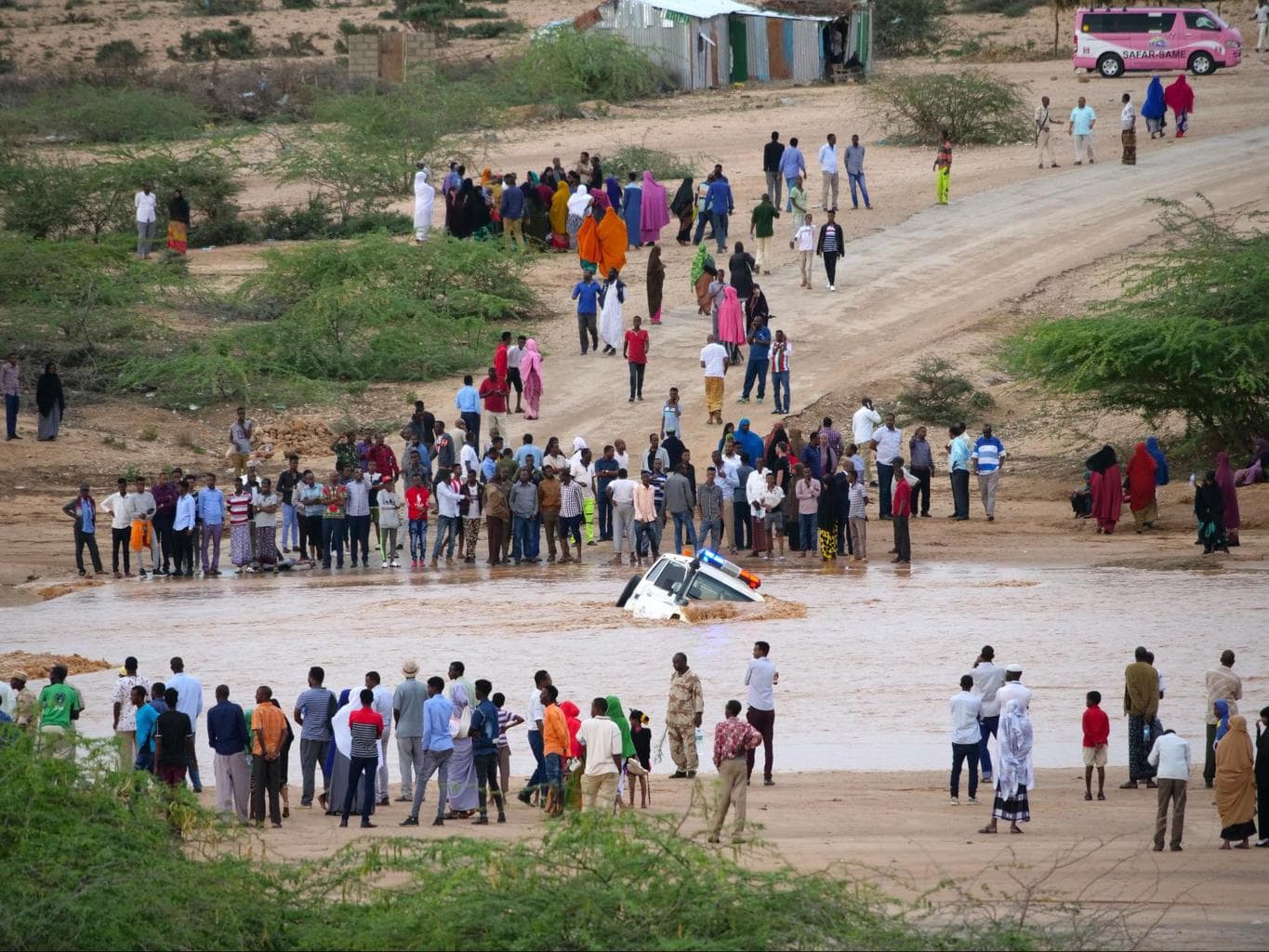
Although these rains pass quickly , they give you a very different perspective on the country. The interruption is short too as the wadies dry in just a few hours, but they can dampen your holiday quite a bit (no pun intended) and walking in the muddy streets of Hargeisa is not pleasant by any means (I had to throw away my flat shoes after that). July and August are very hot months while October and November are good shoulder months.
Best Hotels in Somaliland
Reading online about Somaliland and the few accounts from other travelers you may think that there is only one hotel in Hargeisa: The Oriental Hotel. However, there are a few other better options of you are not interested in rugging it out.
Best hotels for business travelers to Somaliland
Most government officials, foreign businessmen and other international visitors prefer to stay at either the Ambassador Hotel or the Mansoor Hotel both of which are far from town and near the airport.
The choice is usually based on the fact that both have stronger security and safety measures than all other places in town. They have guards, double walls and other safety precautions in place. That makes them the preferred option for all international travelers, especially those on business as Somalia continues to be under the threat of terrorism attacks. Hotels and other places where officials and international visitors concentrate are of special interest.
Here you can find modern facilities and a relatively international feel . Bear in mind neither of the two hotels have AC in the rooms, despite billing themselves as the business hotels of choice.
The preferred budget hotel in Hargeisa
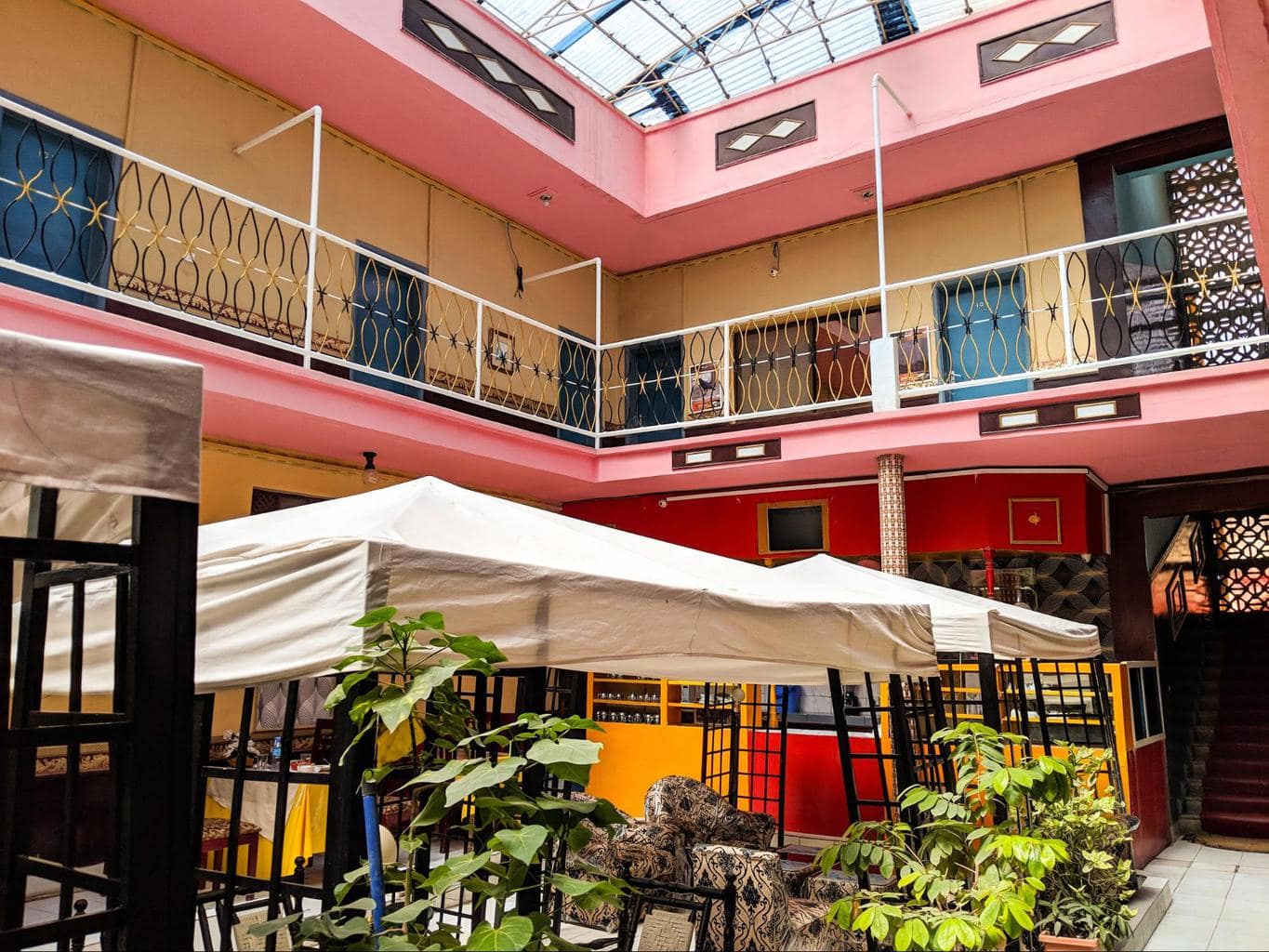
The majority of travelers, especially those on a budget , prefer to stay at the legendary Oriental Hotel in Hargeisa , the oldest and most charismatic hotel in town. This is because it is the best hotel for those who prefer to limit the amount of money they spend (you can book a room for $15-$20 a night) or are looking for an authentic experience. It is also very central so you can walk anywhere that is of interest in the city, except for the livestock market.
The Oriental Hotel is also known for being great at organising tours to Laas Geel or Berbera , and finding you a travel companion to share the cost of a car and driver, even if you are not staying there. They are well known in the frequent travelers circuits for being the go-to de facto “tour company”. It is indeed the meet-up place for intrepid travelers who make their way to Somaliland and for the price, it can’t be beat if you just want a bed and shower. It is likely that any other traveler in Hargeisa at the time will also stay there so you can probably mingle at the restaurant.
The best modern hotels in Somaliland
I am not so much the budget traveler type and if I can spend a bit more and sleep in a comfortable bed with hot water and even AC, I prefer to do so.
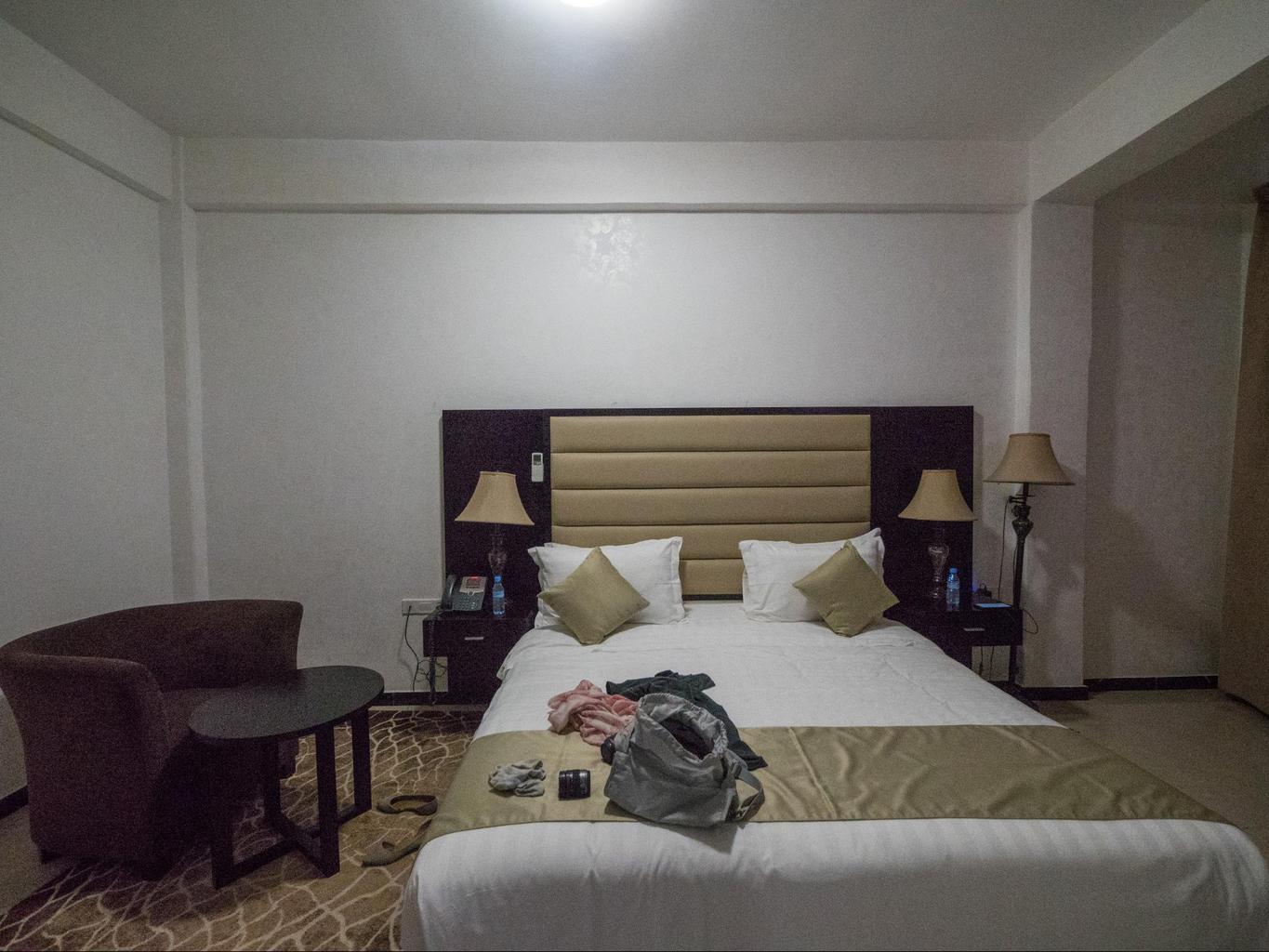
So I stayed at the Damal Hotel in Hargeisa and the Damal Hotel in Berbera where I spent a night. They are both new hotels owned by the main bank in Somaliland and they are more expensive than the Oriental but in exchange you get a new place and rooms with the only AC in the country . In the summer months, especially in Berbera, you will be grateful for that feature.
The Damal Hotels also have free (and relatively fast) WiFi across the hotel including the rooms. The rooms and common areas are clean and the staff friendly. When I got really sick with food poisoning and spent the night in the bathroom in Berbera the staff was quite nice.
Back in Hargeisa, the lady at reception organised drinks for me and called the hospital to get me checked out. The food is also quite decent and with more variety than the usual for Somaliland standards.
For example, you can get steak, fish and even chicken. Breakfast has pancakes, laxoox and eggs to order. Even the coffee is better than at most places. However, I am pretty sure I caught food poisoning from the salad at the Damal Berbera. My fault really, as you shouldn’t have salad or other uncooked vegetables anywhere in the country.
Safety in Somaliland
How safe Somaliland is will depend very much to your level of comfort with uncertainty , with countries which are at risk of terrorism attacks and where situations change constantly.
I wrote a really detailed post on safety in Somaliland touching on the crime level, the threats, the terrorism rate in Somaliland and the steps you can take to ensure you protect yourself as much as possible.
But at the end of the day, your decision to travel should be a personal one based on the facts and the experiences from other people. It is important to check the latest news and status on the ground before going because things can change at any moment. A local guide is the best way to know as they are knowledgeable on what the reality is and can advise if they feel certain areas are off limits.
The practicalities of traveling to Somaliland – What you need to know
Somaliland’s political situation and the overall country instability make this a relatively hard to explore place, so it pays to be well-prepared so everything goes smoothly. Here are a few things you need to know before going to Somaliland.
Money in Somaliland
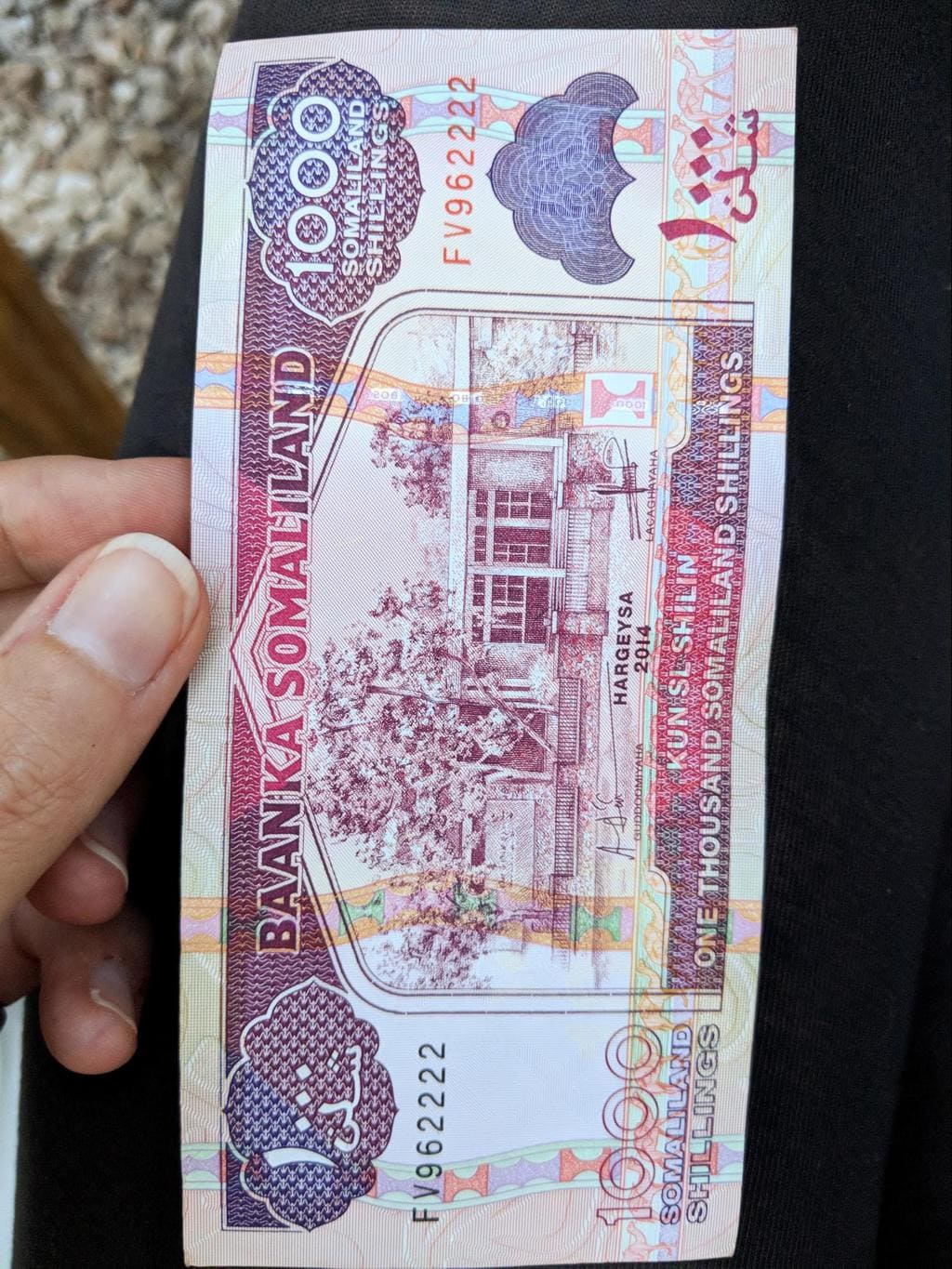
You should assume that credit cards do not work in Somaliland so you should make sure to bring cash , US Dollars ideally, and have enough for your trip. If you travel with an agency that organised your trip, they will have paid for everything in advance, so your need for cash will be limited.
The visa on arrival is $60 and buying a SIM card with 4GB of internet was $50 so before we left the airport we were $170 down. We spent little after that.
Somaliland is extremely cheap . A bottle of water is less than half a dollar, food is cheap (especially if bought at local restaurants) and you will not be using any for alcohol as it is banned because the country follows Sharia Law (like Sudan , Saudi Arabia, Brunei and Iran among others). Souvenirs are nonexistent .
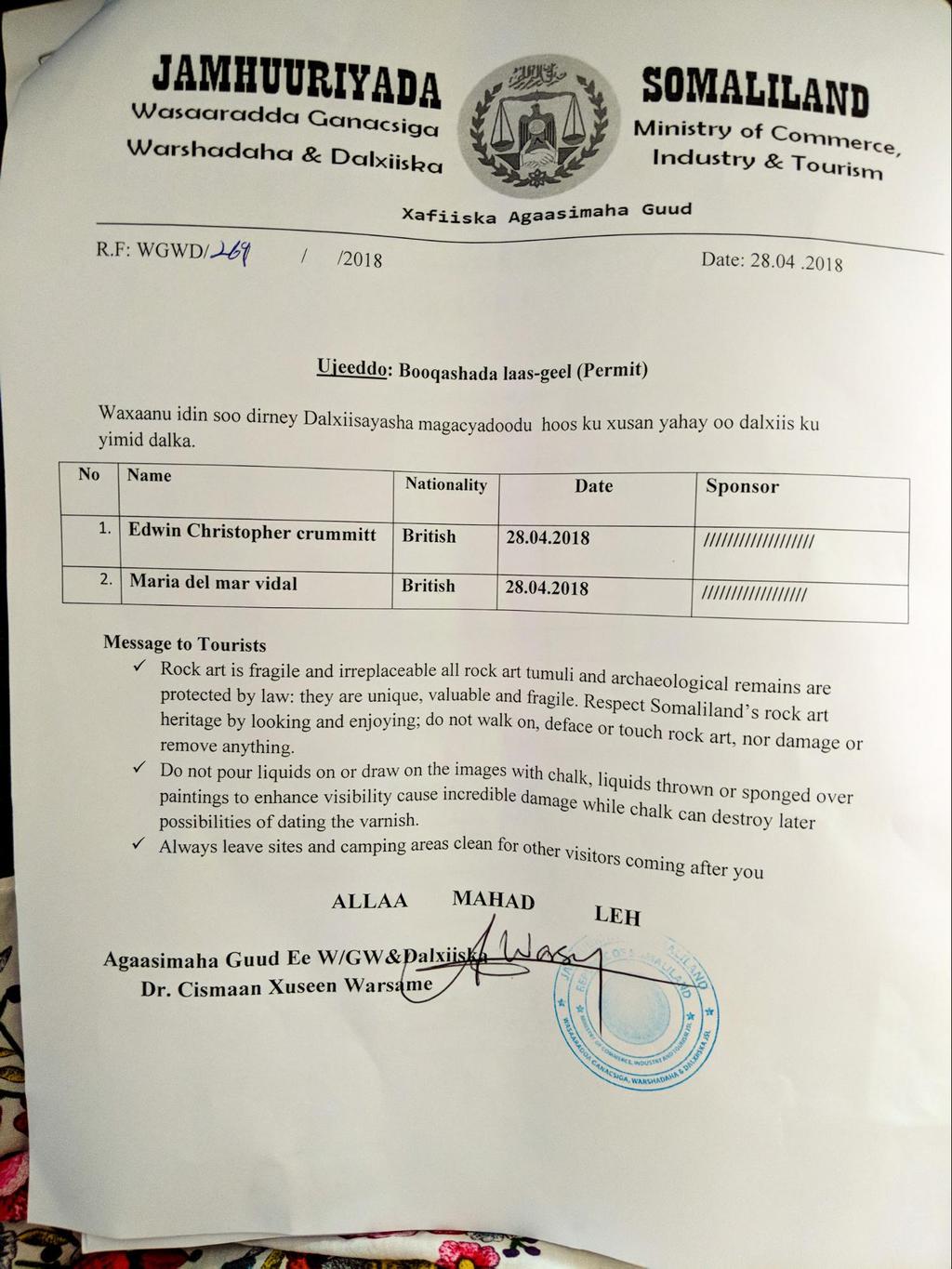
If you are traveling independently and need to organise your tours to Laas Geel or to Berbera, then bring enough cash to pay for the police escort . You should account for around $150 for a day trip to Laas Geel and most travelers report the Oriental Hotel as the best place to organise this, and even the chance of finding another traveler to share the costs with.
Things to pack and what to wear in Somaliland
This was probably the biggest faux-pas I made. I brought a scarf to cover my head and long tunic-style shirts that went well below my butt. However, as female traveler, I was not dressed appropriately for the country and this posed a mild issue with the locals, particularly women who did not understand why I was wearing trousers.
I have traveled and worked full time across the Middle East and Africa and I had never had this problem, but in Somaliland I did. My advice for any women traveling to Somaliland is to wear long skirts, long shirts, long sleeves and a scarf . Or just do like what I did and go to a local market and get a sac-type of dress made on the spot to comply. It will not make you stand out any less, but it will give the locals one less reason to object your presence. I got a few smiles from the locals when dressed like that, even if I looked a bit like an idiot and kept stepping on the dress in the muddy streets of Hargeisa.
For men, long trousers and shirts are also preferable. You will most likely stand out anyway, but you will be less obvious than if you wear shorts and short-sleeve t-shirts.
For Laas Geel , I recommend wearing proper trainers or hiking boots as it is rocky and slippery. A hat, sunglasses and sunscreen are a must and you can probably do well with insect repellent. I removed my scarf for Laas Geel and wore a cap instead as it was just us and the guide plus the minder and it was really really hot to be covering up with a scarf.
Water is essential due to the high temperatures and the heat that you may encounter, especially if you travel to Berbera and dehydration is a real risk . Hargeisa is less hot than other places in the region like Djibouti because of its altitude, and flash floods are common during the rainy months.
In 5 minutes the entire place can be totally flooded and the roads impassable, as we discovered when we tried to get to Berbera and were stuck at a wadi crossing where the water was flowing down as if a massive storm had dropped water for days even if it had not even been half an hour.
Other precautions against yellow fever, typhoid and malaria may be advisable and you should consult your doctor. I ended up with food poisoning from a salad at my premium hotel. It was probably not a wise decision even for someone with a stomach of steel, but after three days without any vegetables I was desperate.
This gave me the unique opportunity to check the local hospital which was not terrible. As they are used to these types of issues, I was given miraculous tablets and rehydration powder and I was well the next day but probably best to avoid this experience if you can. You’ll eat vegetables when you leave the country!
- Check if you need a visa, get help processing it at iVisa .
- Never ever leave without travel insurance. Get affordable coverage from World Nomads or long term insurance from Safety Wing .
- I find all of my flights on KAYAK . Check their Deals section too.
- Search for all your transportation between destinations on the trusted travel booking platform Bookaway .
- I book all my day trips and tours via GetYourGuide , they are the best and their tours are refundable up to 24h in advance.
- Get USD35 off your first booking with Airbnb .
- Compare hotels EVERYWHERE at HotelsCombined and book with Booking.com .
- Compare car rental prices at Rentalcars.com
You may also like
Why you should visit djibouti – the country..., who are the big five animals of africa, where to stay in barcelona – best areas..., where to stay in bali – the ultimate..., what to pack for a safari – expert..., what to do in yap, the complete guide..., what to do in chuuk, the complete guide..., what to do if you only have 1..., tuvalu: all you need to know, travel to tibet – everything you need to....
Somaliland is memorable not so much for any individual sightseeing opportunities, but for its capacity, by turns rewarding and frustrating, to make visitors experience it entirely on its own terms. Philip Briggs , author of Somaliland: the Bradt Guide
Somaliland is one of the world’s least-charted travel destinations. A peaceful self-governing democracy in the otherwise tempestuous Horn of Africa, it seceded from the rest of Somalia more than 20 years ago. And yet so far as the United Nations and African Union are concerned, it simply doesn’t exist – indeed, when Somaliland celebrated its 20th anniversary in May 2011, it did so alone and unrecognised by the outside world.
Yet this ancient arid land has much to offer the intrepid traveller. Lapped by the turquoise waters of the Gulf of Aden, its timeworn ports evoke an obscure history of maritime trade stretching back to Pharaonic times. Above the coast stands the remote and unexpectedly chilly Daallo Escarpment, where glades of aromatic junipers, other worldly dragon’s blood succulents, and frankincense-bearing Boswellia trees overlook the shimmering shoreline 2,000 metres below.
Inland are vast empty badlands populated by a thin scattering of desert nomads, domestic camels and wild antelope, and studded with mediaeval Islamic ruins, mysterious stone tumuli, and ancient rock art sites. The most spectacular of these is Las Geel, whose multi-coloured panels depict the cattle-herding lifestyle of artists who trod these desert sands more than 5,000 years ago
Somaliland is not, as yet, a normally functional tourist destination. Facilities fall somewhere between low-key and non-existent, and several key attractions are difficult to reach affordably, or at all. But for flexible travellers imbued with a spirit of adventure, it offers the sort of non-prescribed travel experience one might expect of a breakaway state that remain unrecognised outside its own borders!
Food and drink in Somaliland
Eating out in Somaliland tends to be an unceremonious activity, and the food is seldom anything to write home about. Local restaurants generally serve a limited selection of pre-cooked dishes, typically pasta and/or rice with vegetable or meat stew, with the most common meats being mutton, goat and camel. The choice is slightly greater at those moderate and upmarket hotels which have their own restaurant (for information on tipping etiquette, see Tips on Tipping ) .
In addition, Hargeisa and Berbera have a few adequate standalone restaurants catering to Western palates, with Berbera being a good place to break the regime of red meat with some fresh fish. Eating out in Somaliland may be problematic for vegetarians, since there is no guarantee that the vegetable sauce offered at most local restaurants will be strictly vegetarian (it often seems to contain small bits of meat, and even where it doesn’t, it may well use some sort of meat stock). Outside of Hargeisa, strict vegetarians will most likely have to stick to bread, fresh market produce and whatever tinned items they can locate.
One distinctly Somali dish worth trying is laxoox , a filling pancake-like flatbread traditionally baked on a metallic circular stove called a daawo . It is usually eaten at breakfast with sweet Somali tea, or sometimes eggs, or sugar and lime, or even ghee. Laxoox is clearly a relation of Ethiopian injera , and has a similarly spongy texture, but it is made from wheat rather than tef, is less sour, and much smaller and floppier (you would normally eat three or four individual pancakes in one sitting). Fresh bread, known as roodhi , is also widely available in the mornings, either as a crusty roti-like flatbread mofaa, or more conventional rolls. Also popular are the greasy fried dough balls known as khamiir .There are also several Ethiopian restaurants in Somaliland, especially in Hargeisa, usually serving far spicier fare than is conventional for the Somali.
If you are shopping for a trip into remote areas, supermarkets in Hargeisa stock a fair range of imported goodies such as crisps, biscuits, chocolates and sweets. Elsewhere in the country, the selection is very limited. Fresh fruit and vegetables are widely available at markets.
Now with its own bottling factory in Hargeisa, Coca-Cola is widely available in Somaliland, as are various other sweet carbonated drinks. You can buy packaged fruit juices in some supermarkets, but a more attractive (and very budget-friendly) option is the delicious freshly pureed or squeezed fruit juices made at stalls and restaurants in the larger towns. Another local favourite is Somali tea, which is often spiced and usually brewed with milk and a generous dose of sugar. If you prefer your tea free of milk and/or sugar, ask for Lipton. Bottled water is available, but make sure it’s sealed. No alcoholic drinks are sold anywhere in Somaliland, although a few smarter restaurants and hotels stock alcohol-free beer.
Health and safety in Somaliland
Like most of sub-Saharan Africa, Somaliland harbours an array of tropical diseases of varying degrees of severity and inconvenience. Although there’s a fair possibility that you will become ill at some point on your trip, the cause is most likely to be either straightforward travellers’ diarrhoea or a cold, and provided you receive the necessary immunisations before you travel, the only major cause for concern once you are in the country is malaria, which can be combated to a large extent by taking sensible precautions.
Within Somaliland, there are private clinics and/or hospitals in all the larger towns, but they tend to be under-equipped and overcrowded, the main exception being the private Edna Adan Maternity Hospital in Hargeisa. Pharmacies are also present in all the larger towns, and they are usually quite well stocked and staffed by an English-speaking pharmacist. You should be able to buy such commonly required medicines as broad-spectrum antibiotics and Flagyl in any sizeable town. If you are wandering off the beaten track, it might be worth carrying the obvious with you. As for malaria tablets, whether for prophylaxis or treatment you would be wise to get them before you go as not all tablets are readily available.
Immunisations
Preparations to ensure a healthy trip to Somaliland require checks on your immunisation status: it is wise to be up to date on tetanus, polio and diphtheria (now given as an all-in-one vaccine, Revaxis, that lasts for ten years), and hepatitis A. Yellow fever is not considered a risk in Somaliland, and therefore vaccination would only be suggested if the traveller is entering Somaliland from another yellow fever country such as Ethiopia.
Make sure all your immunisations are up to date, including tetanus, polio and diphtheria (now given as an all-in-one vaccine, Revaxis, that lasts for ten years), and hepatitis A. Yellow fever is not considered a risk in Somaliland, and therefore vaccination would only be suggested if the traveller is entering Somaliland from another yellow fever country such as Ethiopia. Immunisation against cholera, typhoid, rabies, meningitis and tuberculosis might also be advisable.
The biggest health threat at lower altitudes is malaria. There is no vaccine against this mosquito-borne disease, but a variety of preventative drugs is available, including mefloquine, malarone and the antibiotic doxycycline. If you are visiting a malarial area, it is normal to start taking these at least two weeks before your trip and to continue for at least a month after you get home. The most suitable choice of drug varies depending on the individual and the country they are visiting, so visit your GP or a travel clinic for medical advice. If you will be spending a long time in Africa, and expect to visit remote areas, be aware that no preventative drug is 100% effective, so carry a cure too. It is also worth noting that no homeopathic prophylactic for malaria exists, nor can any traveller acquire effective resistance to malaria. Those who don’t make use of preventative drugs risk their life in a manner that is both foolish and unnecessary.
Though advised for everyone, a pre-exposure rabies vaccination, involving three doses taken over a minimum of 21 days, is particularly important if you intend to have contact with animals, or are likely to be 24 hours away from medical help.
Take a small medical kit with you. This should contain malaria tablets and a thermometer, soluble aspirin or paracetamol (good for gargling when you have a sore throat and for reducing fever and pains), plasters (band-aids), potassium permanganate crystals or another favoured antiseptic, iodine for sterilising water and cleaning wounds and sunblock. As restaurant meals in Somaliland tend to be based around meat and carbohydrate, some people may like to carry vitamin pills.
Prolonged immobility on long-haul flights can result in deep-vein thrombosis (DVT), which can be dangerous if the clot travels to the lungs to cause pulmonary embolus. The risk increases with age, and is higher in obese or pregnant travellers, heavy smokers, those taller than 6ft/1.8m or shorter than 5ft/1.5m, and anybody with a history of clots, recent major operation or varicose veins surgery, cancer, a stroke or heart disease.
Travel clinics and health information A full list of current travel clinic websites worldwide is available on w istm.org. For other journey preparation information, consult travelhealthpro.org.uk (UK) or wwwnc.cdc.gov/travel (US). Information about various medications may be found on https://www.netdoctor.co.uk/health-services/a28163609/travel-vaccinations/ . All advice found online should be used in conjunction with expert advice received prior to or during travel.
The first question to pass through the mind of many prospective visitors to Somaliland will be: ‘Is it safe?’. To be honest, this question has no definitive answer. Officially, Somaliland is part of Somalia, undoubtedly one of the most lawless and dangerous countries in the world. As of early 2018, the US Department of State website and the British Foreign Office warns against travel in Somalia and Somaliland, citing bombings, kidnappings, illegal roadblocks and potential terrorist attacks as reasons to avoid all but essential travel.
In practice, however, Somaliland functions as a completely separate country to Somalia or Puntland, and it is universally regarded to be far safer than either of these fractious neighbours. Within Somaliland itself, there have been infrequent instances of foreign aid workers being killed or kidnapped since independence in 1991, acts perpetrated by Al-Shabaab and other external groups hoping to destabilise their peaceful neighbour, but such incidents are evidently on the decrease.
Indeed, the last such incident occurred in 2008, when Hargeisa and Bosaso were hit by six co-ordinated suicide bombings. Since then, Somaliland has attracted a significant trickle of travellers from across the Ethiopian border, and the impression of every foreigner we met travelling or working in Somaliland is that the visitors have little to worry about in terms of security, provided that they stick to regularly visited sites such as Hargeisa, Berbera and Las Geel, and ask local advice before heading further off the beaten track. That said, the enduring instability of the entire Somali region precludes too many glib reassurances.
Also bearing on the issue of safety is the official requirement that all foreigners moving outside Hargeisa must be accompanied by an armed member of the Special Protection Unit. The official line seems to be that this is an ultra-conservative precaution against the devastating effect the killing of a foreigner would have on Somaliland’s petition for international recognition. But it wouldn’t be necessary, surely, unless there was a genuine risk associated with travel outside the capital?
Perhaps, or is it simply misplaced paranoia? It has even been suggested that the SPU policy exists at the instigation of foreign UN and NGO workers with a vested interest in maintaining Somaliland’s official high-risk status (it means that salaries are higher than in a more stable country). What can be said with confidence is that it is increasingly common for the Chief of Police in Hargeisa to issue a written waiver of SPU protection to backpackers upon request – an anomaly from which you can draw your own conclusions!
Whatever the actual risks associated with travel in Somaliland, the reality is that if you get into any sort of trouble there you’ll be a lot more isolated than would normally be the case. There will be no embassy to help bail you out, since Ethiopia is the only country in the world with formal diplomatic representation in Hargeisa. Furthermore, most travel insurance policies explicitly exclude cover for countries subject to the FCO or US State Department travel warnings quoted above, in which case you will also be uninsured.
Security issues aside, Somaliland is largely free of more conventional crime, such as pickpocketing, mugging and theft from hotel rooms. Indeed, we have heard of no such incident involving a traveller anywhere in Somaliland, and would regard the country to be as safe as anywhere we have visited in that respect. All the same, there is a significant disparity in wealth between most locals and visitors, so it might be viewed as tempting fate to wander along unlit streets alone at night or to carry large sums of money or valuables publicly. And on the basis that it is preferable to err on the side of caution, below are a few tips that apply to travelling anywhere in Africa.
- Most casual thieves operate in busy markets and taxi parks. Keep a close watch on your possessions in such places, and avoid having valuables or large amounts of money loose in your daypack or pocket.
- Keep all your valuables and the bulk of your money in a hidden money belt. Never show this money belt in public. Keep any spare cash you might need elsewhere on your person.
- A buttoned-up pocket on the front of the shirt is one of the most secure places, as money cannot be snatched from it without the thief coming into view.
- Where the choice exists between carrying valuables on your person or leaving them in a locked room, we believe that the latter option is generally safer, assuming that the room is absolutely secure. However, some travellers’ cheque companies will not refund cheques stolen from a room, or might reject the claim on a technicality, for instance if the door wasn’t damaged during the robbery.
- Leave any jewellery of financial or sentimental value at home.
Female travellers
Women travellers generally regard sub-equatorial Africa as one of the safest places to travel alone anywhere in the world, and Somaliland is probably no exception when it comes to gender-specific risks. That said, single women are advised to avoid hotels listed in the budget or shoestring category, in particular those with shared showers and toilets, which are highly unlikely to be frequented by local women. Likewise, it is unusual for local women to eat alone in restaurants, and female travellers who do so might become targets of unwanted curiosity or flirtation. Many female travellers to relatively conservative countries consider it to be a good idea to pretend you have a husband at home or in another town – and, ideally, a wedding ring as ‘proof’ of your status.
The biggest restriction on women travellers to Somaliland is the need to adhere to smothering local dress codes in all public places. For local women, the standard items of clothing are a loose-fitting all-enveloping ankle-length dress called a direh , and a bonnet-like headscarf called a hijab that covers every last hair on their head. Some women also wear the more severe abaya , a long black or multi-coloured garment, reminiscent of a nun’s habit, that leaves only the eyes, hands and feet exposed. Female travellers should dress similarly, at the very minimum wearing a loose ankle-length skirt, a top that is sufficiently baggy to mask the shape of their breasts, and a loose headscarf. Aside from being offensive to local sensibilities, any attire tighter or more revealing than this might, in a Somali context, create an unwanted impression of availability.
LGBTQ+ travellers
Any act of male or female homosexuality is a criminal offence. Offenders risk imprisonment or, in extreme cases, capital punishment. That doesn’t mean that homosexuality doesn’t exist, but out of necessity it is very clandestine. Setting aside the rights and wrongs of the matter, Somaliland clearly isn’t a destination suited to single travellers in search of anything approximating a gay scene (or, for that matter, any other form of secular nightlife), and at risk of stating the blindingly obvious, gay couples who do visit the country should exercise maximum discretion.
Travel and visas in Somaliland
All visitors to Somaliland require a valid passport, the expiry date of which should be at least six months after you intend to end your travels. A Somaliland visa (emphatically not the same thing as a Somali visa) must also be arranged in advance by all visitors. This is a requirement that is complicated by the fact Somaliland is not yet formally recognised as a country and thus lacks proper diplomatic representation in most parts of the world. A viable option for those flying to Hargeisa is to arrange a visa through a local operator or at the hotel where you will be staying.
Getting there and away
A handful of major international carriers now fly to Hargeisa Egal International Airport (HGA). FlyDubai and Air Arabia are the best options for connecting flights coming from Europe or North America, while Ethiopian Airlines is a useful option from elsewhere in Africa. Other smaller regional airlines offering direct flights to Hargeisa and/or Berbera (BBO) from the likes of Mogadishu (Somalia), Nairobi (Kenya) and Djibouti City (Djibouti) include African Express , Daallo Airlines , Jubba Airways and the recently relaunched Air Djibouti.
Getting around
Although occasional flights do connect Hargeisa to other towns in Somaliland, the more normal mode of transport is by road. Conditions are variable. The main road from Borama via Hargeisa, Berbera, Sheikh, Burao and Oog (the Garoowe border post with Somalia) is surfaced and can easily be covered in any sedan car. All other roads, including the ones from Borama to Zeila, and Oog to Maydh via Erigavo, are unsurfaced and too rough to risk without a 4×4. There are no buses in Somaliland, but foreigners are usually permitted to use the inexpensive but jam-packed shared taxis that run along the stretch of road from Borama to Burao, via Hargeisa and Berbera, and also to travel in the 4x4s that connect Hargeisa and Burao to Zeila and the Djibouti border. Other parts of the country may only be visited in a 4×4 with a local driver, which can be rented through one of the agencies listed under Hargeisa.
From what we know, self-drive car rental is not an option in Somaliland. It could be that overlanders with their own vehicle are permitted to drive themselves with SPU protection, but we have never heard from anybody who has done this.
When to visit Somaliland
The most pleasant time to travel is over the northern hemisphere winter, from November to March, when it is relatively cool, with maximum temperatures of around 25°C typical on the plateau around Hargeisa, rising to around 30°C along the coast. By contrast, the summer months can be oppressively hot, especially along the coast, where temperatures in excess of 45°C are frequently recorded.
Winter is also the dry season, which is an advantage for those who plan to venture beyond the few asphalt roads – rainfall figures for Somaliland are low, but when the rain does come, seasonal watercourses and muddy depressions might double the travel times along routes such as Borama to Zeila and Burao to Erigavo, or worse still render them temporarily impassable.
There are, however, some advantages to travelling in the summer, among them that the countryside is much greener, and bird and mammal breeding activity reaches a peak.
Somaliland generally has a hot, dry climate, and four main seasons are recognised. Jiilaal, from December to March, though technically winter, is hot and dry, with the main wind blowing from the northeast. Gu, from April to June, is the main rainy season, and hotter than the previous season, with occasional violent storms. The drier Xagaa, over July and August, is the hottest time of year, with a low chance of rain, characterised by winds blowing from the southeast. Dayr, from September to November, is cooler with occasional light rains. The climate charts below, for Hargeisa, Erigavo and Berbera, are respectively representative of conditions along the inner plateau, the high escarpment and the coast.
What to see and do in Somaliland
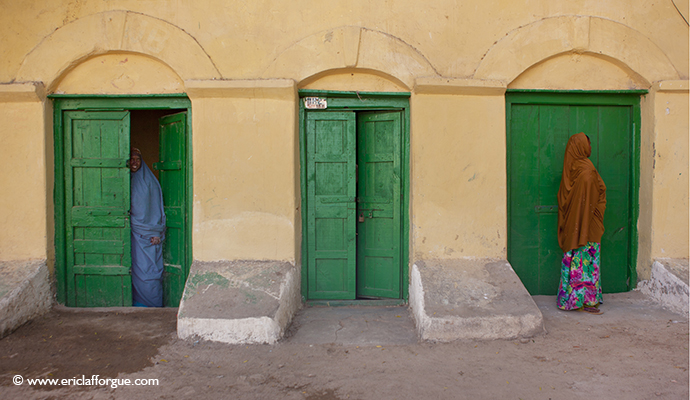
The historic town of Berbera has been a centre of maritime trade since ancient times. It stands on the Gulf of Aden opposite Yemen, a strategic location along the ancient trade route between the Red Sea and India, and of similar importance during the more recent Cold War. Indeed, in the 1970s, Berbera was an important base for the USSR, which built the 4km runway (one of the longest anywhere in Africa) that somewhat redundantly graces the international airport a few kilometres south of town. Today, Berbera is the main commercial seaport in Somaliland, serving not only the capital Hargeisa, about 150km to the south, but also bordering parts of eastern Ethiopia.
Boasting an idyllic swimming beach and access to innumerable well-preserved coral reefs, Berbera has enormous potential for tourist development, although this remains largely unrealised at the time of writing, with just one rather unconvincing resort hotel and dive centre in place. Also of great interest is the old quarter of town, where the wealth of crumbling pre-20th century architectural gems – most in urgent need of restoration work – would make it a shoo-in candidate as a UNESCO World Heritage Site were Somaliland ever to gain UN recognition. It doesn’t seem wildly fanciful to see a rehabilitated incarnation of the old town one day forming a Somali counterpart to such iconic cultural tourist hubs as Ilha do Moçambique, Gorée Island or Lamu.
As things stand, Berbera tends to make a less-than-favourable first impression, particularly when you arrive in the harsh light of early afternoon via an extensive and unsightly litter belt of scrubby thorn trees, draped with thin plastic bags. It doesn’t help that the only beachfront hotel, the out-of-town Maan-soor, has the stark and unfinished appearance of a construction site. Or that the town can be intolerably hot in the summer (May to September), when daytime temperatures routinely nudge above 45°C, with typical nocturnal minimums of 30–35°C, all but necessitating a room with air conditioning.
Once settled in, however, Berbera is thoroughly appealing, at least during the relatively cool winter months, when average temperatures, although not exactly arctic, are almost 10°C lower. The compact old town, its alleys lined with attractive mosques and other relicts of the Ottoman occupation, is great fun to explore, and the sandy out-of-town beach is genuinely refreshing. Further afield, the surrounding reefs offer superb diving and snorkelling, while the ancient waterworks at the Dubaar Springs – overlooked by old Ottoman fortifications – make for a worthwhile day out. Berbera could also be used as a base for exploring the likes of Mount Wagar and Ga’an Libah.
Daallo Escarpment
Somaliland’s foremost natural attraction, the Daallo (or Daloh) Forest lies in the spectacular Calmadow (or Al Mado) Range, a tall limestone and gypsum escarpment that rises dramatically from the low-lying coastal plain between Maydh and Bosaso. Little known to outsiders and as yet undeveloped for tourism, Daallo is less than an hour’s drive north of Erigavo, close to the base of Mount Shimbiris, the highest point anywhere in Somalia. The main attractions of Daallo are the stupendous clifftop views from the top of the escarpment to the distant Gulf of Aden more than 2,000m below, and a rich biodiversity that includes at least 200 endemic plant species, along with many woodland birds and other animals whose range is confined to the Somali region.
Biologically, Daallo represents the most accessible and largest semi-pristine relict of Somali Montane Xeric Woodland, an eco-region confined to the 300km-long escarpment running inland from the northern Somali coast. Isolated from other similar habitats by the vast swathes of desert that cover the Somali interior and the far east of Ethiopia, this important centre of endemism supports a unique combination of plant species, with links to the Afromontane, Mediterranean and Micronesian regions, and much of it remains unexplored in scientific terms. Plans to set aside the forest as a national park have been in the pipeline for years but, as things stand, it is not accorded any formal protection and large stands of woodland have been chopped down in recent years by charcoal burners.
Daallo is the wettest part of Somaliland, receiving a mean annual rainfall of around 750mm, most of which falls between April and October, when the wellwatered lower slopes form the country’s main centre of agriculture. During the drier winter months, sea fogs and mist are an important supplementary source of water for common high-altitude trees such as Juniperus procera, Buxus hildebrantii, Olea chrysophylla and Sideroxylon buxifolium. A striking plant associated with Daallo is the endangered Gabel Elba dragon’s blood tree (Dracaena ombet), a thick-stemmed, spike-leaved succulent that manages to grow in the most unlikely crags and is known locally as mooli. The lower slopes of the escarpment also support large stands of Boswellia frereana, whose resin is used to make frankincense.
Daallo supports the densest and perhaps the richest fauna of the Somali region. It is of particular interest to birdwatchers as the best place to see a host of endemics and other localised specials, including Archer’s buzzard, Archer’s francolin, Somali thrush, Warsangli linnet and Somali golden-winged grosbeak, as well as more typical African highland and forest species, ranging from the busy Abyssinian white-eye to the stunning Narina trogon. Mammals are more elusive but include Hamadryas baboon, two species of hyrax and the endearing Speke’s pectinator. The endemic beira antelope was once resident in the region, but we know of no recent sightings. The forest also supports a varied selection of secretive predators – locals claim that leopard and spotted hyena are quite common – and we had a magnificent view of a striped hyena lying in the middle of the road shortly after dusk.
Somaliland’s largest town has a dusty low-rise feel more in line with a provincial administrative centre than a national capital. There’s just one embassy in Hargeisa, few familiar airlines are represented, and other well-known international brands – be it McDonald’s, Barclays or Hilton – are conspicuous by their collective absence. There are no trendy nightspots or sushi bars in Somaliland’s capital, no neon lights or overhead passes, no five-star hotels or flash tour operators, nor any cinemas or theatres. Suffice to say that if cosmopolitan airs and transatlantic comforts feature highly on your list of travel priorities, humble little Hargeisa is bound to disappoint.
Therein lies much of Hargeisa’s low-key charm. Rebuilt and resurrected from the ashes of recent war, Hargeisa is a city whose down-to-earth character and lack of architectural pomposity is epitomised by the use of a crashed MiG fighter jet as the centrepiece of its most important Civil War Memorial. Similarly, government offices in Hargeisa tend to be plainly decorated and informally signposted, and in most cases they effectively close shop at noon, after which the obligatory midday siesta morphs into an afternoon khat-chewing session. Indeed, the ubiquitous obsession with chewing this mildly narcotic leaf – every street corner seemingly has its own khat stall – gives Hargeisa a mild and rather likeable aura of decadence, one at odds with the stuffy images that many outsiders associate with Islamic Africa.
Overwhelmingly friendly and practically free of crime, Hargeisa in many respects feels more like an extension of the surrounding countryside than a proper urban conglomeration. Goats and sheep wander through the suburbs, resting up wherever they find a sliver of shade, donkey carts jostle for road space with taxis and minibuses, and most men and practically all women dress traditionally in colourful flowing cloths. As is so often the case in small-town Africa, locals regularly stop you to ask your nationality and make small talk. Seldom, however, do such approaches appear to be motivated by anything other than plain curiosity – and, perhaps, the pleasurable implicit affirmation of nationhood associated with the presence of foreigners (who are often, and favourably, assumed to be journalists rather than tourists).
As national capitals go, Hargeisa is on the small side (though the estimated population has doubled from 560,000 in 2005 to more than 1.1 million today) and is unusually manageable. Most activity takes place within a block or two of Independence Avenue, the strip of asphalt that snakes for several kilometres from the western outskirts of town to the east. The town centre, a tight grid of narrow roads studded with mosques and centred upon the venerable Oriental Hotel, is one vast sprawling market, with all the energy that implies. And while suburban Hargeisa is lacking in must-see attractions, it is always rewarding to explore the back roads on foot, drifting towards the fabulous camel market south of town, the green compound of the Maan-soor Hotel in the burgeoning suburb of Jijiga Yar, or one of the city’s many handsome mosques.
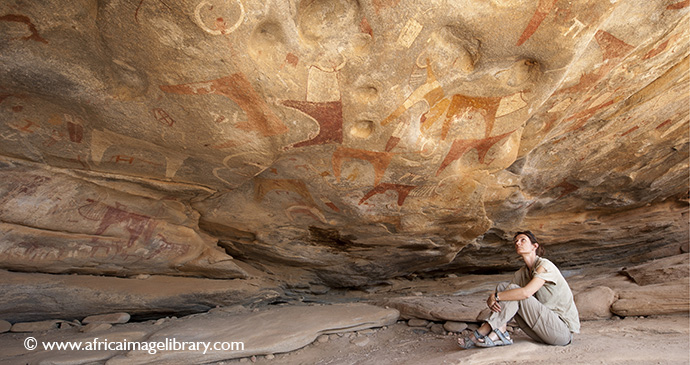
Estimated to be at least 5,000 years old, and quite possibly twice as ancient, the superb rock art at Las Geel ranks among the oldest and best preserved of its type anywhere in Africa. It comprises about a dozen individual painted shelters scattered on a granitic outcrop that rises from the confluence of two wadis, a spot where the high water is reflected in the name Las Geel meaning ‘Camel’s Waterhole’. Their presence provides incontrovertible evidence that the pastoralist lifestyle was well established in the region thousands of years before it reached western Europe.
Easily visited as a day trip from Hargeisa or en route to Berbera, Las Geel is the most compelling tourist attraction in Somaliland, topping the Department of Tourism & Architecture’s list of potential UNESCO World Heritage Sites. The site was also visited by the broadcaster Simon Reeve for the BBC programme Places That Don’t Exist, broadcast in 2005. And yet, incredibly, the existence of this fantastic rock art remained unknown to the outside world until three years before that. Although locals had long held the site sacred, it was first documented in December 2002, when a team of French archaeologists under Professor Xavier Gutherz was led here by villagers from nearby Dhubato.
Maduna ruins
The most important feature of the Maduna ruins is a large rectangular mosque, the 3m-high walls of which are still intact and contain a mihrab along with perhaps a dozen smaller arched niches. This central building is surrounded by several dozen old houses, most of which still have partially intact walls, and the baobab on the slope immediately below is sufficiently large to suggest it was planted when the city was still inhabited.
An aura of mystery overhangs Maduna – unsurprisingly, perhaps, when so little is known about its history. The dry-stone architectural style suggests that the ruined city was a contemporary of Amoud and Abasa, so presumably it once formed part of the Adal Sultanate. As far as we know, however, the site has never been excavated and no historical records pertaining to it survive. Also perplexing, according to archaeologist Sada Mire’s article in World Archaeology, are several ‘dome-shaped structures without doors or windows’ whose ‘only entrance was via a small opening at the top’. Mire suggests these rooms may have been prison cells of some type, but we can only speculate.
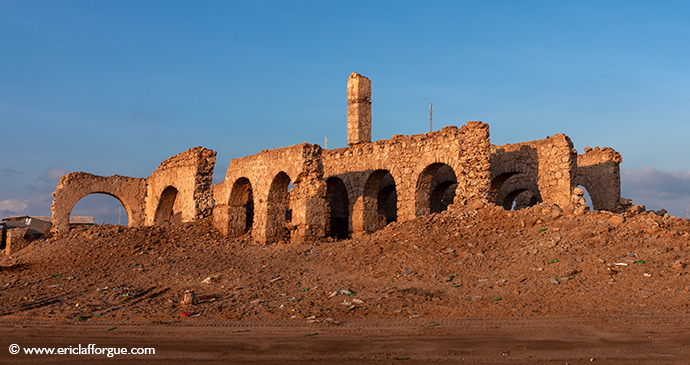
Zeila is studded with ruins that date to its medieval heyday as an Islamic mercantile port © Eric Lafforgue
One of the oldest ports on the east African coast, Zeila (also known as Zayla or Seylac) is set on a narrow sandy mangrove-lined peninsula that protrudes into the shallow island-studded waters of the Gulf of Aden, some 25km southeast of the Djibouti border.
Small and rundown it may be, but the present-day town of Zeila is studded with ruins that date to its medieval heyday as an Islamic mercantile port, including one of the world’s oldest mosques. Zeila is also the gateway for boat trips to an offshore archipelago of six small islands, including Sa’ad ad-Din and Aibat, noted for their historic and avian significance. Recently designated as one of Somaliland’s two marine national parks, the pristine reefs and islands off Zeila also boast immense potential for snorkelling and diving, and while no suitable facilities for submarine exploration are currently in place, diving trips can be arranged through the dive operation in Berbera.
Related books
For more information, see our guide to Somaliland :
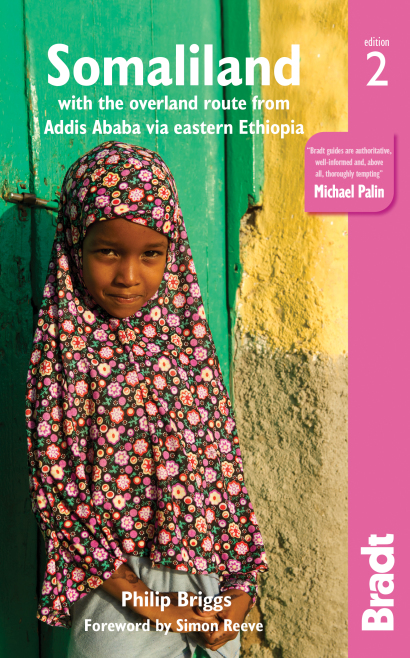
Related articles
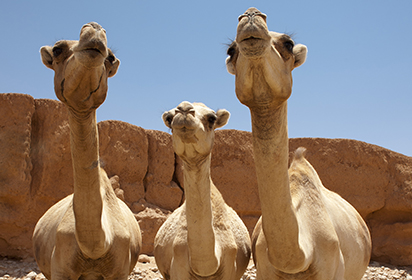
Five reasons to visit Somaliland
Somaliland is a unique, strange and intriguing place that is seemingly worlds away from its Somali neighbours.
Rock on: Africa’s most impressive rock art
Africa has some magnificent centuries-old rock art — how many have you visited?
Coronavirus Disease 2019 - learn more about COVID-19

- Welcome Message
- Fact Sheets
- Case for Recognition
- About Somaliland
- Business & Investment
- Somaliland and the U.S.
- Latest News
Travel & Tourism

1. Places to Visit
Somaliland, with marvellous beaches, breathtaking diving opportunities, scenic mountains, rich culture, and hospitable is the definitive frontier of tourism. With little tourism industry, you will feel like you are the first visitor.
It has enchanting offshore islands, a pristine coast with snorkeling and diving opportunities and some of the finest beaches in east Africa, beautiful mountain and desert land scapes perfect for adventurous trekkers.
The country has a rich cultural and archaeological heritage, including the millennia-old Laas Geel Cave and rock paintings , and the historical towns of Zeila and Berbera.
Somaliland has two international airports, at Hargeisa and Berbera, with flight connections available to many countries including Ethiopia, United Arab Emirates, Kenya, and Djibouti. International airline carriers include Ethiopian Airlines, Fly Dubai and Air Arabia with more set to arrive shortly. Berbera airport has one of the longest runways in Africa. Somaliland has an extensive road network linking its towns and cities. The Imminent development of the Addis-Berbera corridor is set to give a further boost to road links.
It is important, however, to underline that due to the name many people confuse Somaliland with Somalia. Somaliland is an independent, peaceful, stable, democratic and tourism-ready country.
As Somaliland is not internationally recognized, most maps may show it in the same map as that of Somalia. Although Somaliland, a de facto independent state since 1991, has managed to build the most robust democracy in the entire region and takes great pride in it, lack of international funding has so far prevented the development of a full fletched tourist industry including the construction of tourist resorts along its magnificient coast.
Therefore, Somaliland is the perfect destination for investors and tourists alike who desire to “discover” virgin lands.
There is little travel planning information available in books and on the internet. But Lonely Planet’s Africa guide includes a few pages on Somaliland worth reading, listing the following as one of the highlights of the country: “Enjoy the smug feeling of impressing your fellow travellers: ‘Yes, I’ve been to Somaliland!’.” By the way, the Lonely Planet representative visiting Somaliland was unable to hide he immediately fell in love with the country.
2. Visa Requirements
· Complete the application form below including attaching a color picture in the designated area for the picture.
· There is a processing fee of $80 dollars per adult person.
· Mail your passport, completed application form including picture, check or money order for $80 to this address:
Somaliland Mission USA
6019 Tower Ct
Alexandria, VA 22304
We will mail the stamped passport back to you within 5 business days. We use standard USPS priority mail. You can send email
to [email protected] or call us at 703-370-1423.
3. Visa application - Download Form
- Ministry of Trade and Tourism
- Thu , August 29 2024
- Visit Somaliland Government Portal

Message from the Minister
Minister of Trade, Industries and Tourism
Dear Guests, Media Representatives Asalam-u-alikumwaramatullahwabarakatahu.
The Somaliland Ministry of Trade, Industry and Tourism is the lead economic sector which provides policy guide to the government on Trade, Industrial, Tourism and private sector development with responsibility for the formulation and implementation of policies for the promotion, growth and development of domestic and international trade ,industry and provide protection and development for the archeological tourism infrastructure with the implementation of sound marketing strategies for the tourism sector.
The Ministry is also the supporter for the private sector within government and is the principal agency responsible for monitoring and implementing the Government’s private sector development programs and activities. The Ministry also ensures that Somaliland derives maximum benefit from international trade relations and that domestic trade is conducted in a smooth and orderly manner.

The Vision for the Ministry of Trade and Tourism is to have a nation whose citizens enjoy dynamic and sustained economic growth, leading with world-class Manufacture, enterprises, innovative and productive Small and Micro Enterprises, and the best tourism destination.
The Mission of the Ministry of Trade and Tourism is to facilitate the creation of business enabling environment and infrastructure for accelerated growth of local and international trade, stimulate job creation, and enhance Somaliland’s international competitiveness and enhancement of the tourism sector as the key engine of social-economic growth in Somaliland.
Featured Videos
Daahfurka Barnaamijka Xogsiiye
Wasaarada Ganacsiga Iyo Warshadaha JSL Oo Mamnuucday Gabi Ahaanba Ka Ganacsiga Bacda
Wasiirka ganacsiga iyo warshadaha Somaliland oo faah faahin ka bixiyay markab sida 14kun oo tan
Latest updates.

Agaasimaha Guud ee Wasaaradda Ganacsiga iyo Dalxiiska JSL Mudane Abdirashiid Ibrahim oo uu weheliyo Agaasimaha Waaxda Qorshaynta iyo Horumarinta...

Madaxweynaha Jamhuuriyadda Somaliland, Mudane Muuse Biixi Cabdi, ayaa si rasmi ah u furay Madxafkii ugu horeeyay ee uu yeesho qaranka Jamhuuriyadda Somaliland..

Productive meeting today with professors from Girona University, Spain, and the Youthmakers Hub...

Wasiirka Wasaaradda Ganacsiga iyo Dalxiiska JSL mudane Maxamed Xasan Sacad oo uu wehelinayo Agaasimaha Guud ayaa maanta xafiiskiisa ku qaabilay Safiirka Kenya..
Our partners.
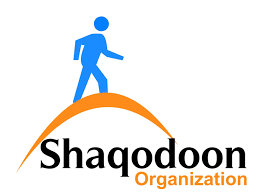
Like Us on Facebook
Follow Us on Twitter
Subscribe on YouYube
Follow Us on Instagram
Things to do in Somaliland: 1 week itinerary
By Joan Torres 2 Comments Last updated on April 29, 2024

Wanna travel to Somaliland with Against the Compass?

Join a group of like-minded travelers in our next scheduled tour in Somaliland on:
November 14th to 18th, 2024
A former British colony that unilaterally declared independence from Somalia in 1991, Somaliland is an unrecognized country in the Horn of Africa which, according to the rest of the world, still legally belongs to Somalia, considered today one of the most dangerous countries in the world.
Somaliland, however, is a self-administered territory that controls its own borders and has managed to stay away from all the issues that cause Somalia to be a failed state, hence allowing some great independent – and very safe – backpacking, and offering one of the ultimate adventures in East Africa.
There is so much to say about Somaliland and, for that, I urge you to read:
Everything you need to know to travel to Somaliland
In the above article, you will learn both political and travel information but in this guide, I will take you through all the places I visited, summarized in a 1-week itinerary for Somaliland .
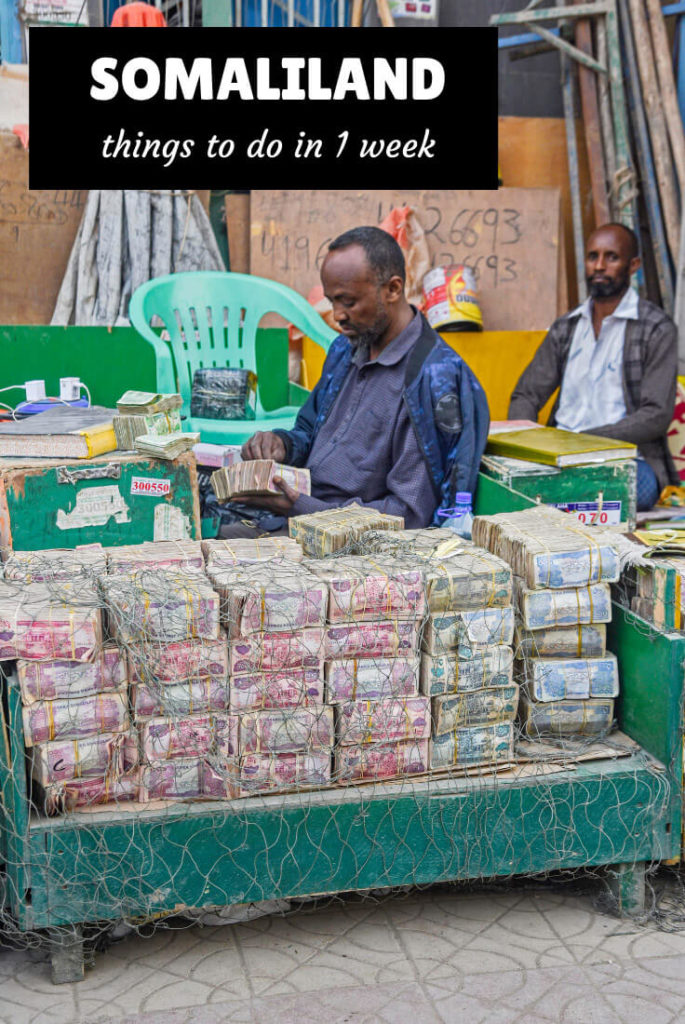
In this itinerary for Somaliland you will find:
Table of Contents
- Where to start from?
- How many days are needed?
- Useful books
- 7-day Itinerary
- Desert trip to Hargeisa
- More information
our recommended travel insurance for Somaliland
IATI Insurance is one of the very few that covers travel in Somaliland.
Where to start your Somaliland itinerary?
There are two main ways of getting into Somaliland:
- Overland from Djibouti, hence you would start your trip in Zeyla
- Overland from Ethiopia or flying in, hence you would start your trip in Hargeisa
Personally, I think the best way is entering from Djibouti and the reason is that Zeyla, a tiny settlement located right across the border, is the best place to visit in Somaliland, the one I enjoyed the most.
If you are in Hargeisa, getting to Zeyla is a long 2-day journey (round-trip), plus getting there is expensive, as you need to hire a 4×4. Therefore, in that case, I don’t know if Zeyla would be worth your time and money.
In my travel guide to Somaliland , you can learn more about the different ways to get into the country.

How many days are needed for Somaliland?
Traveling is remarkably subjective, so this is a question I always struggle with.
I personally spent 10 days backpacking in Somaliland and, in my humble opinion, it was a bit too much, especially because there isn’t much to do.
I mean, there are some really awesome things to do in Somaliland, but there isn’t enough stuff to keep you busy for 10 full days.
Well, sorry to say that, I am sure there is, but time is always limited and the Horn of Africa has too much to offer, so I would have preferred to invest those extra days in spending more time in Eritrea and Ethiopia .
Therefore, based on what I told you in the previous section, if you visited Zeyla, I would recommend 7 days and, if you skipped it, I would recommend 4-5 days.
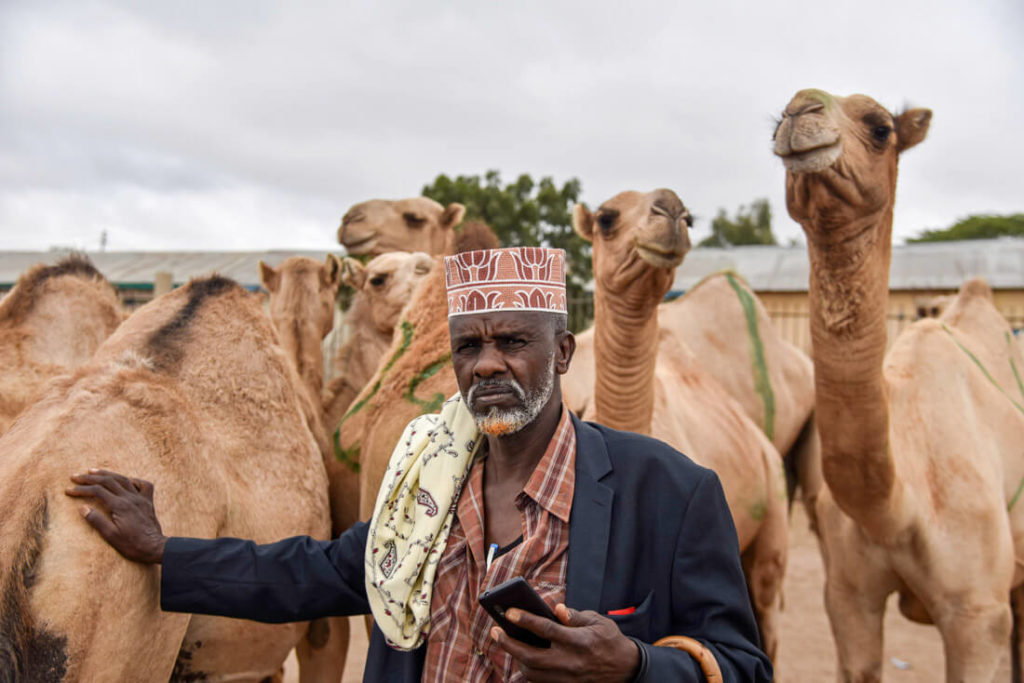
Useful books to help you plan your Somaliland itinerary
Somaliland travel guide by Bradt – The only guidebook to Somaliland is the one from Bradt and it gives you a great overview of the country.

Becoming Somaliland by Mark Bradbury – The story of Somaliland: from declaring independence to becoming a democracy in one of the most turbulent regions on Earth. A great, easy-to-read analysis.
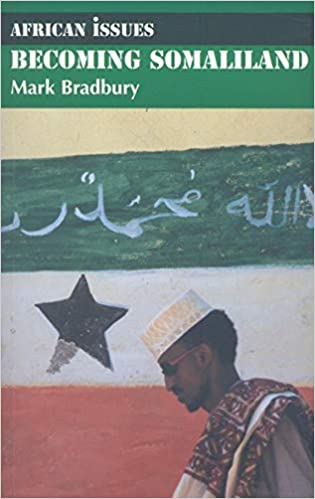
Things to do in Somaliland in a 1-week itinerary
Since I entered Somaliland from Djibouti, I will start the following itinerary from here.
Places to visit in Somaliland on day 1, 2 – Zeyla, home to one of the oldest mosques in Africa
Ibn Batuta said it already.
One of the most desolated towns in the world.
Zeyla is indeed a very remote settlement, one of the remotest I have ever visited.
It consists of a bunch of houses, if you can call them houses, located in a vast, flat deserted peninsula that bulges into the Gulf of Aden.
There is nothing around, only desert and the empty ocean.
Yet, it was precisely this remoteness what made me love visiting Zeyla and I recommend you watch the below video to understand why:
Today, Zeyla is nothing more than a tiny Somali settlement but over the centuries, its port – one of the oldest in East Africa and whose importance was mentioned in Greek documents 2,000 years ago – has played a key role in the Red Sea trading routes.
There is a 7th century mosque as well, one of the most ancient in all Africa.
Here you can read more about Zeyla’s history .
Furthermore, the people were lovely and, given that this is actual off the beaten track Somalia, expect plenty of kind greetings and pleasant conversations.


Things to do in Zeyla
The most awesome thing you can do is checking out the desolated mosque located in the middle of the empty peninsula and from there, you can also walk to the beach.
Do expect many kids to follow you.
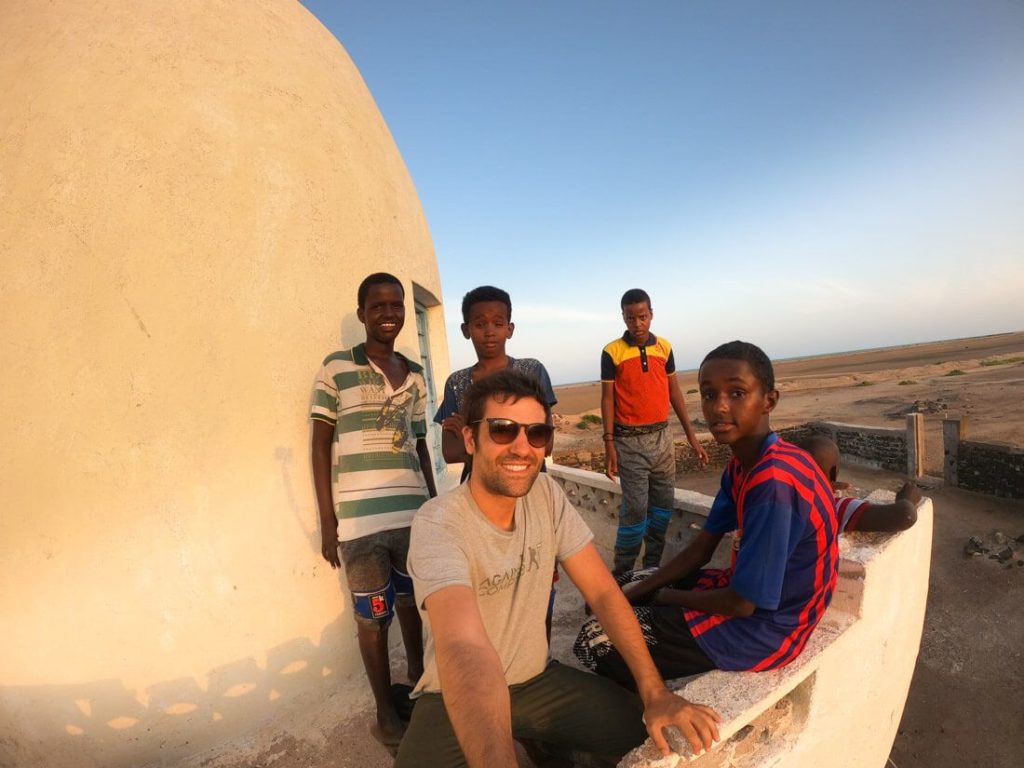
Then, you can visit the 7th century mosque named Masjid al-Qiblatayn and, other than that, just enjoy the local people and relax.
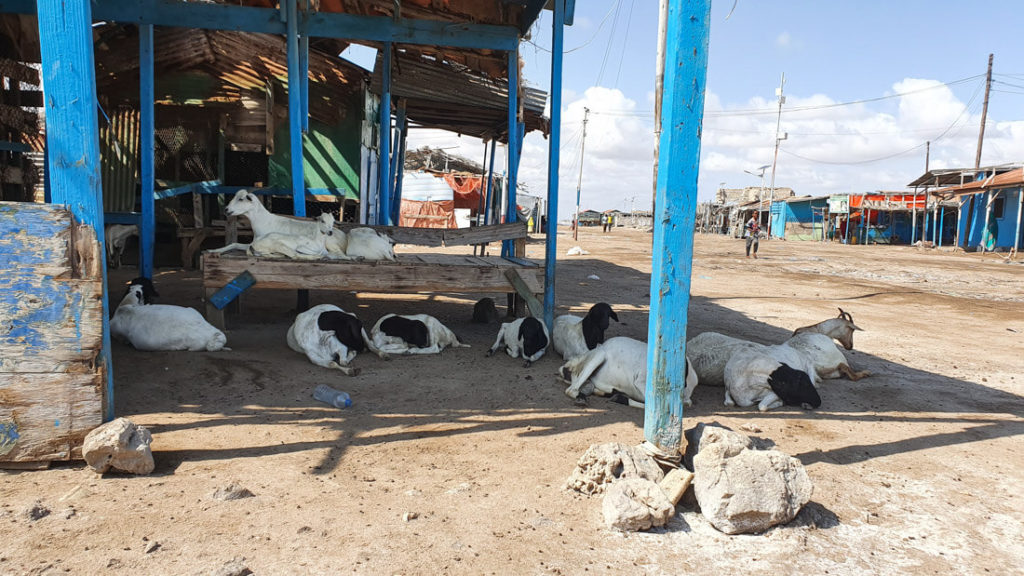
How to get to Zeyla
There aren’t any roads connecting to Zeyla, so getting there isn’t easy.
From Djibouti – First, you will have to cross the border. For that, you need to go to Avenue 26 (Djibouti City) and find the shared 4×4 that go across the border.
Most of them go straight to Hargeisa but you need to take the one with Loyadda as final destination, the border town. I paid 1,000DFJ, around $5.
Once you cross the border, you have to find a car that goes to Zeyla, but the problem is that most cars go straight to Hargeisa, and finding one to Zeyla may take a while.
From the border to Zeyla is a 25km journey but you drive over the sand, so it takes a few hours. In the end, I did find a car and, for one back seat, I paid $10. If you don’t find a shared 4×4, a few locals offered to take me there for $100.
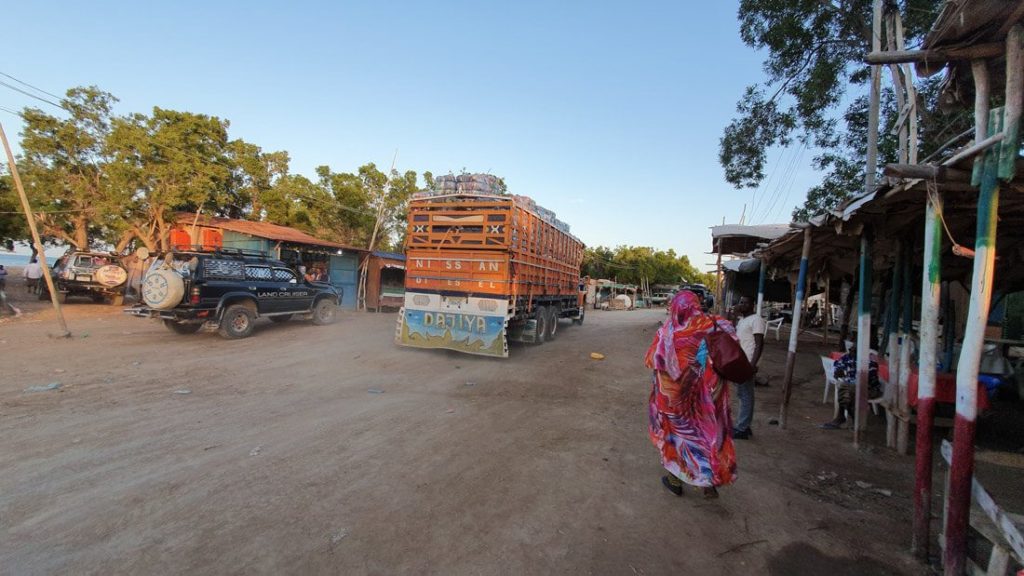
From Hargeisa – First, you need to take a bus to the town of Borama, located 120km away. That’s easy. From Borama. however, things get trickier because the tarmac road disappears and for most of the 240km to Zeyla, you drive across a sandy, bumpy desert. It’s quite an adventure, but a long 8-hour drive.
In Borama, there is a station where shared 4x4s to Djibouti depart. You may want to get in one of those and just say you will get off in Zeyla. The price of a back seat should be around $50, but your reports are welcome in the comments section 🙂
Where to stay in Zeyla
There is only one guest house, named Kaboode Guest House , which is extremely overpriced for what you get. It’s nothing more than a rudimentary shack but it costs $20 a night, even though the owner agreed to $15 if I stayed 2 nights.
Still, the owner is pretty cool and I had a great time with him eating khat. Surprisingly, there was Wi-Fi.
You can learn more about him by reading my article: Fear & loathing in Somaliland
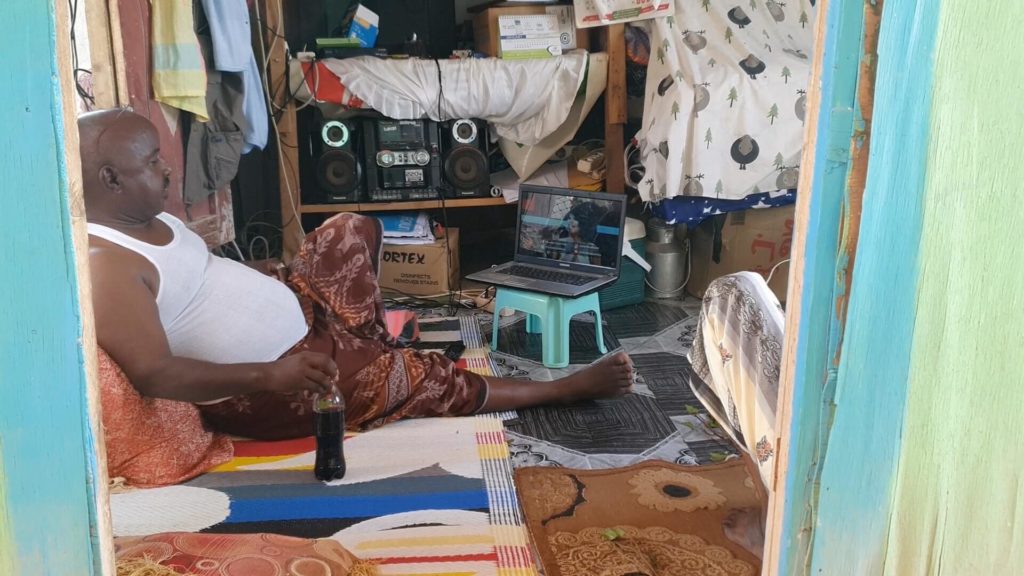
What to do in Somaliland on day 3 – Borama and way to Hargeisa
Borama is the largest city between Zeyla and Hargeisa
It is an unattractive town, like most cities in Somalia, but the locals will make your visit a charming one and, in any case, Borama is an unavoidable stop for getting to Hargeisa.
For some reason, 4x4s from Zeyla to Borama only depart in the evening, around 7pm, so we crossed the bumpy desert in the dark, drove for 8 hours until they dropped me in the middle of the city at 3am, a moment at which I was approached by some particularly dodgy locals.
I mean, the kind of people that hang out in the empty streets at 3am – but they actually helped me find a relatively good hotel and all they wanted was a small tip.
How to arrange your transportation from Zeyla to Borama
The owner of Kaboode Guest House can arrange everything for you. I paid $50 for the back seat. The front seat was $70.
Where to stay in Borama
I stayed in Oslo Hotel . Decent, basic accommodation with a very nice garden. Since I was the only foreigner staying in the hotel, I had the chance to meet the owner, a New Zealander Somali. Pretty cool guy.
How to get from Borama to Hargeisa
On the next day, you can easily find a cheap, local bus to Hargeisa. Price was 27,000Sh, around 3$.
Day 4, 5 – Hargeisa, the capital of Somaliland
How can I put this?
Hargeisa is the most low-key capital I have ever been to.
The city center is composed of unappealing architecture, unpaved streets, there is trash everywhere, and you even find goats and donkeys in downtown.
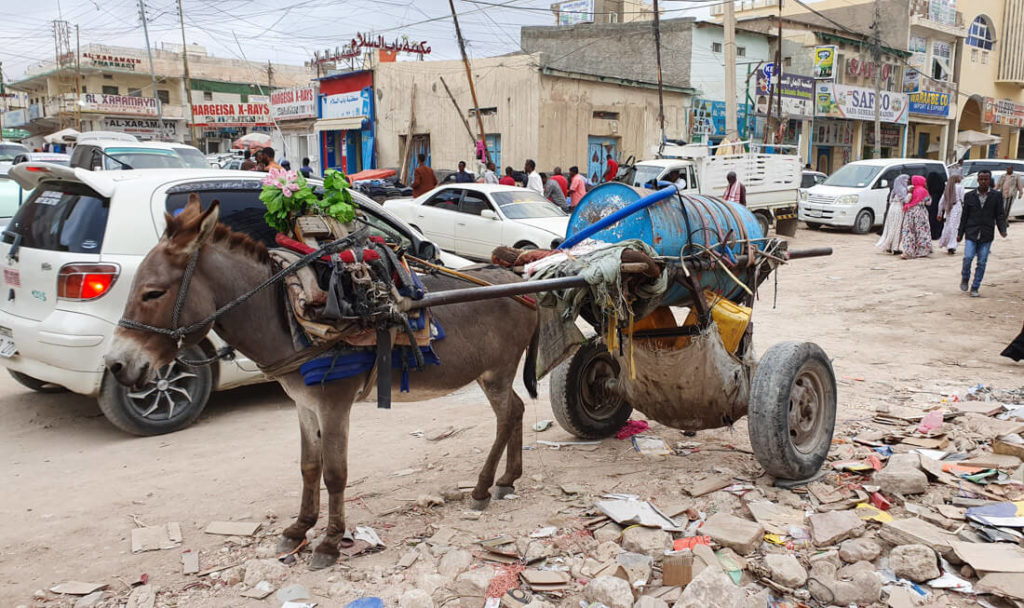
Unlike in other African capitals, there aren’t imposing Governmental buildings luxury hotels or restaurants.
Once, a British Somali recommended me a famous Chinese restaurant, one of the fanciest in town where apparently, local celebrities – such as singers and TV stars – like to go for dinner. The service and everything was great but it was nothing special and I just paid $15 for a meal.
Not complaining here, just telling you the reality of Hargeisa and Somaliland.
Yet, it is an alluringly charismatic capital. I loved Hargeisa.
First of all, the people are great, but you already knew that, and strolling down its dusty avenues, bustling markets and khat stalls is already an attraction on its own.
Moreover, you need to know that Hargeisa is a city that was resurrected from the ashes after it was completely destroyed (90% of it) by Siad Barre’s regime during the Somaliland-Somalia war, in 1988. It was only liberated in 1991, when they began the city’s reconstruction.
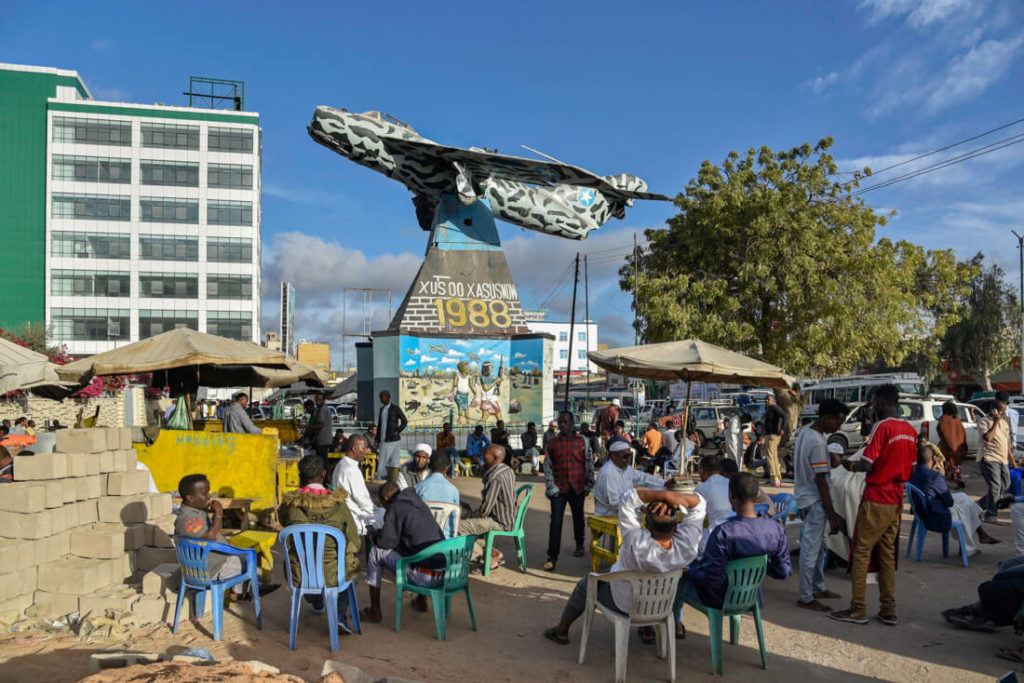
It is important to mention that Hargeisa is the capital of an unrecognized country, which means that they get very little foreign help – the reason why that capital is so low-key – so what they have achieved is already remarkable.
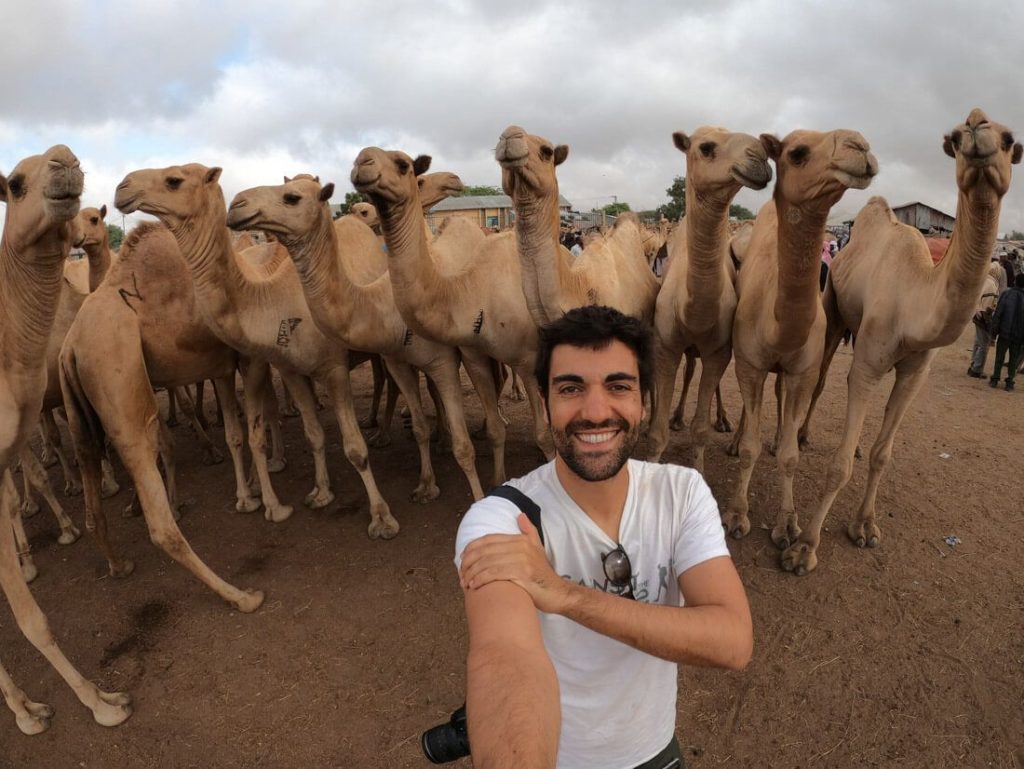
Things to do in Hargeisa
- Camel market – One of the top places to visit in Somaliland is a live-stock market that takes place every day, the busiest days being on weekends, obviously. The people are affable, there are endless photo opportunities and it has the largest concentration of camels I have ever seen in a market of this kind.

- Money market – The local currency, Somaliland Shillings, has very little value and in the city center, there are money exchange stalls featuring tens of money bricks, each one worth just a few dollars. Checking out those stalls is one of the most preferred things to do in Somaliland.
- The War Memorial – In downtown, they are showing off a MiG fighter jet that was proudly taken from the Somali Army during the Civil War.
- China-som – The restaurant I mentioned before. If you want to have a decent meal and get to know the most well-educated people in Somaliland, go to this restaurant.
- Honey café – I went to several local cafés, but I liked this one, as they serve plenty of local honey-based drinks.
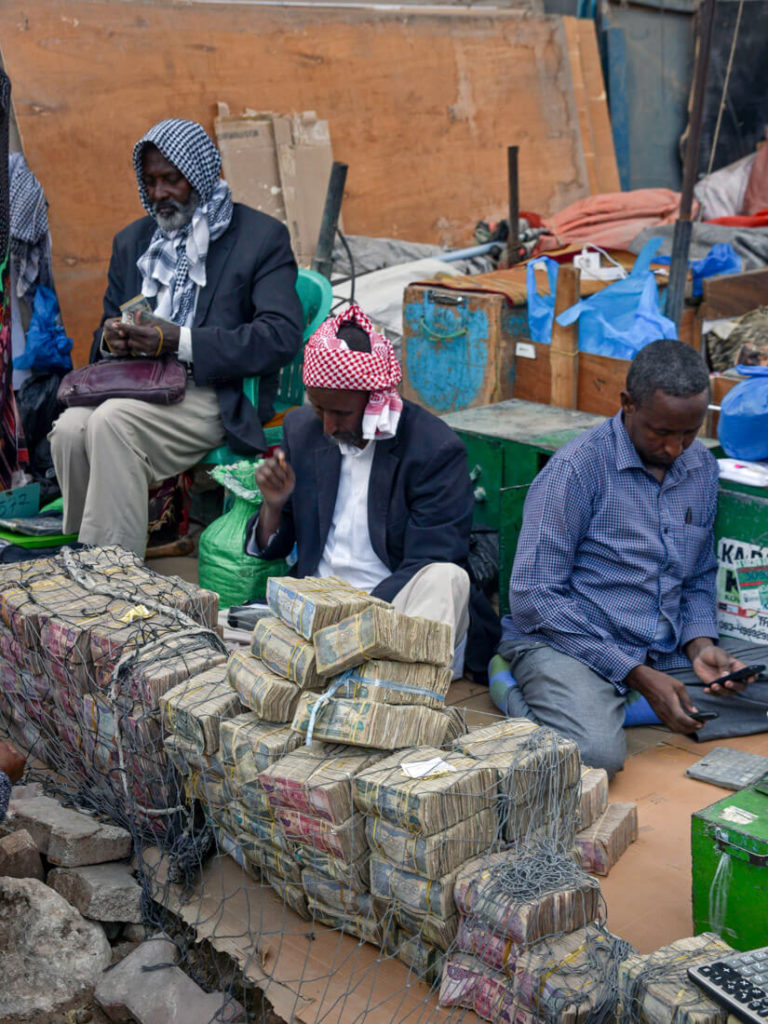
Where to stay in Hargeisa
Oriental Hotel – Most travelers stay here because it has decent, budget rooms and it’s in the city center. A private room costs $15-$20.
Maamus Hotel – This is where I stayed. It’s definitely fancier than Oriental Hotel and not much more expensive, as it is 2 or 3km out of town. However, it is located at the end of the main street, with regular local buses passing by, and a ticket only costs 2,000Sh, around 25 cents.
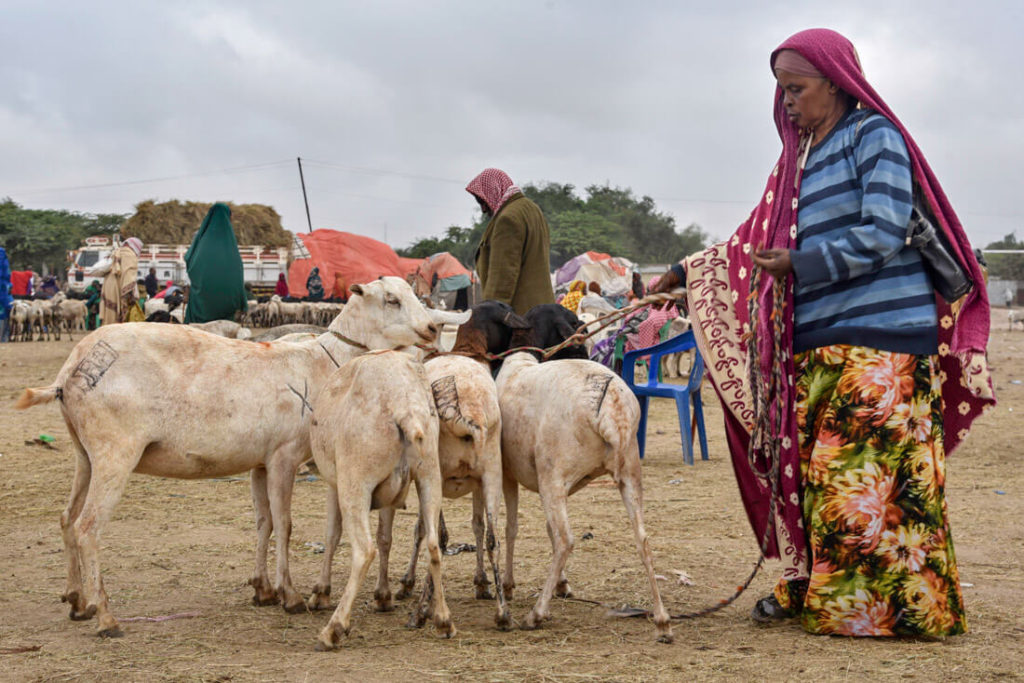
Day 6 – Las Geel, 5,000-year old rock art
Most things to do in Somaliland, the ones I told you about so far, are aimed at the most intrepid and demanding travelers, those seeking surreal and off the beaten track adventures but, truth to be told, they aren’t tourist attractions as such.
Las Geel, however, one of the best-preserved rock art sites in Africa, definitely is, a tourist attraction even my mum would like to visit.
It consists of hundreds, if not thousands, of individual paintings representing humans and cattle.
It is quite a jaw-dropping site and, for a deeper dive in its history, read this post .
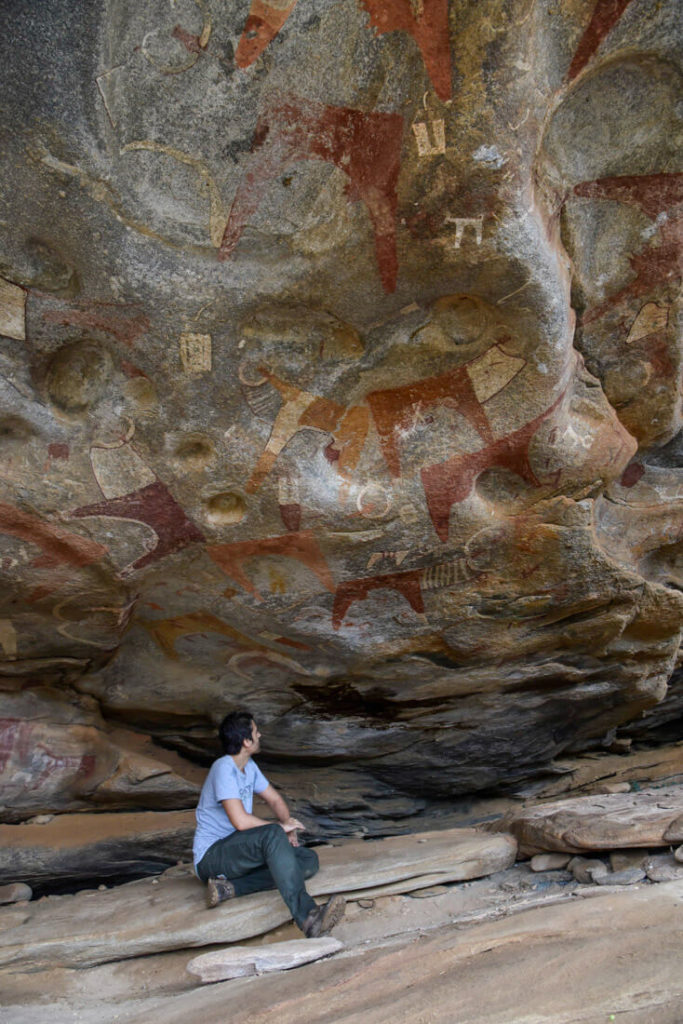
How to get to Las Geel
From Hargeisa bus station, you can take a bus to Dhubato (55km) (4000Sh).
Dhubato is on the way to Berbera so, after my visit to Las Geel, I took a bus to Berbera. Otherwise, you can easily find a bus back to Hargeisa.
From Dhubato, Las Geel is a pleasant 6km walk.
Do you need to arrange an organized tour to visit Las Geel?
Contrary to what some travelers believe, you don’t need to go as part of a tour, at least not anymore.
You can go there on your own and pay the entrance fee, which costs $25.
What is mandatory, however, is a local guide, who will be assigned to you at the entrance itself. You will have to pay an additional $10 for the guide, so $35 in total .
The guide will walk the remaining 6km with you, from Dhubato to the actual site. You can go by taxi as well.
Mine didn’t speak a word of English but he tried very hard to explain the different paintings with hand gestures and stuff like that.
In my opinion, the $35 were absolutely worth it.
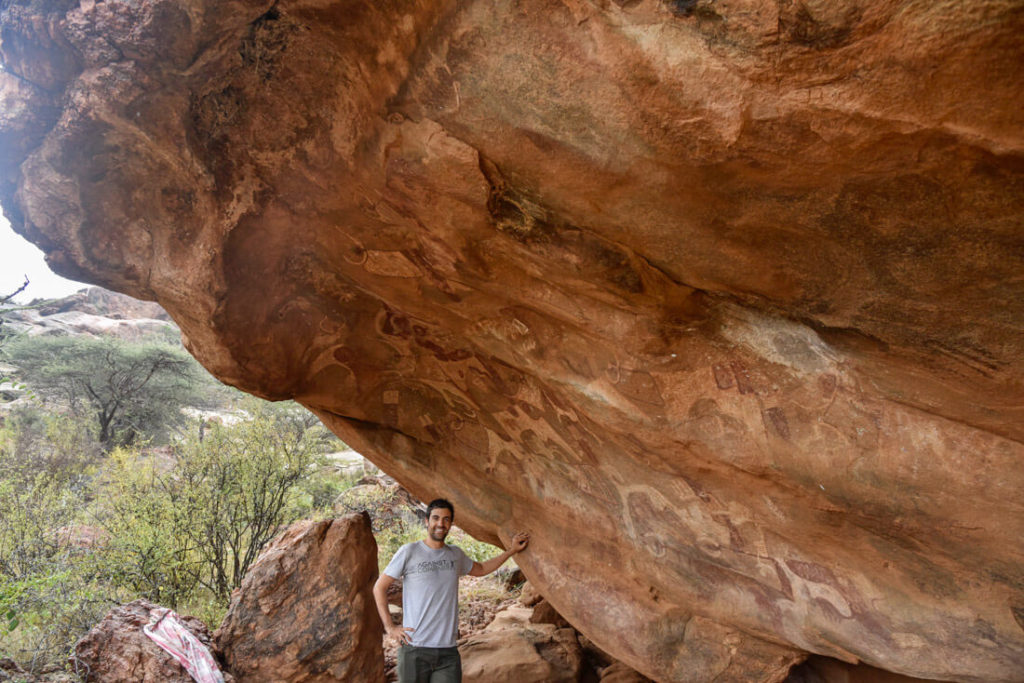
Day 7 – Berbera, Ottoman-era city
Located on the shores of the Gulf of Aden, right across from the Yemeni coast, Berbera is a city that has also played a key role in the maritime trade of the region, mainly due to its great strategic position, situated in the trade route between India and the Red Sea.
By the way, in Berbera I met two a couple from New Zealand who came to Berbera on a cargo ship from Salalah in Oman . They said they had to wait in Salalah for weeks, but they finally made it.
For me, it was interesting to see that Berbera had a vibe and look similar to other cities along the coast, such as Massawa in Eritrea , or Port Sudan in Sudan , and the reason is that the three of them were part of the Ottoman Empire, so the architecture and old quarter’s composition was similar, plus they all enjoy the same overwhelmingly hot and humid weather, so the kind of slow life (and food) was pretty much the same.
Strolling down the Old Quarter was fun but, once again, since Somaliland isn’t recognized by the UN, hence they don’t receive any foreign help, the ancient Ottoman houses are somehow falling apart, some parts being in a truly deplorable state.
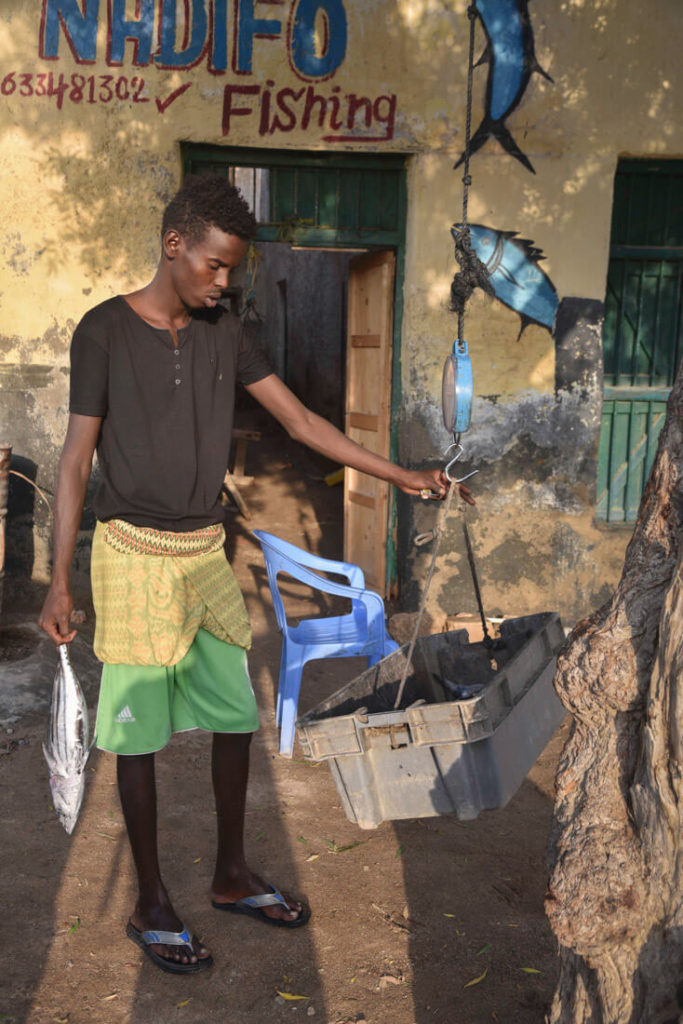
Berbera has a tremendous touristic potential and I firmly believe that, if Berbera’s Old city was ever restored, it would definitely be considered for inclusion in the UNESCO World Heritage list but, correct me if I am wrong:
If a country isn’t recognized by any other, can their national treasures make it to the UNESCO list?
Still, intrepid travelers will find the old city great.
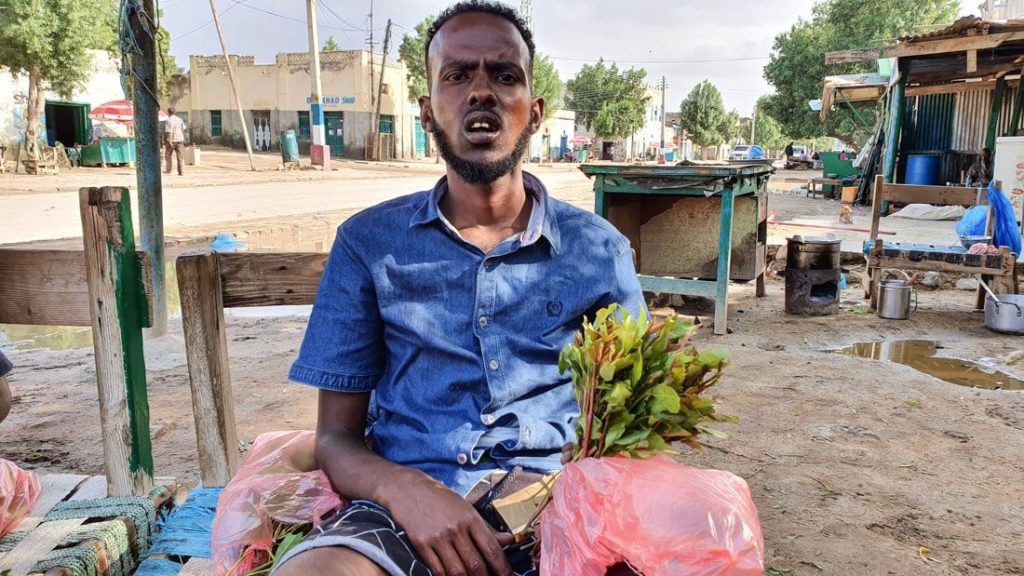
Everybody was inviting me to join them to eat khat and there were plenty of nice restaurants serving great fresh fish for just a few dollars. I recommend Al Hayaat restaurant.

How to get to Berbera
From Hargeisa bus station, buses to Berbera run throughout the day.
As I said before, I took the bus to Dhubato to visit Las Geel and after my visit, I just waited on the side of the road for another bus to pass by. In fact, I didn’t have to do anything because my personal guide for Las Geel stopped the buses for me.
Where to stay in Berbera
I stayed at Barwaqo Hotel. They had decent, clean private rooms with own bathroom for only $10. The rooms were a bit boring and dark but the hotel’s garden & restaurant made it up for it.
They were serving amazing local food, including fresh fish. In fact, one of the best meals I had in Somaliland was a tuna steak from that precise restaurant.
Also, important to mention that the restaurant garden’s had gazelles roaming around freely, and you could feed them.

More information to plan your Horn of Africa and Somaliland itinerary
📢 In my Travel Resources Page you can find the list of all the sites and services I use to book hotels, tours, travel insurance and more.
All guides and articles for traveling in Somaliland destination
- Fear and Loathing in Somaliland
- Somaliland Travel Guide
Travel Itineraries to other countries in Africa
- Travel Guide to Sudan
- Egypt Itinerary
- Libya Travel Guide
- Mali Itinerary
- Mauritania Itinerary
- Tunisia Travel Guide
You might also like our Haiti Itinerary .

Any infos on Djibouti?
Do you know if transport between Djibouti & Somaliland runs on Fridays?
Leave a Comment Cancel reply
Your email address will not be published. Required fields are marked *
Notify me when new comments are added.
Join our Expeditions
From Syria to Iraq in Pakistan, Against the Compass is finally running expeditions to the most epic and off-the-beaten-track countries.
We have scheduled expeditions for every month of the year.
Latest posts
- How to travel to Eritrea in 2024
- How to travel to Svalbard in 2024
- How to travel to Afghanistan during Taliban rule (2024)
- How to Travel to Libya in 2024
- Backpacking Venezuela Travel Guide (2024)

- South Sudan
- Visa Information
- Terms & Conditions
- About Visit Horn Africa

We are delighted to be a Travelers’ Choice on Tripadvisor in 2022. The satisfaction of our guests before, during, and after our tours has always been and will always remain our top priority. It means that we have been ranked in the top 10% of attractions on Tripadvisor around the world. We would not have been able to accomplish this without your assistance.
Tours by Destination
- Somaliland View All
- Djibouti View All
- Somalia View All
- Puntland View All
- Ethiopia View All
- South Sudan View All
- Eritrea View All
- Sudan View All
Multi-country Tours
We offer tailor-made tours across multiple countries in the Horn of Africa. Our packages cover great destinations, efficient routes, and affordable arrangements. Competitive pricing is our priority.
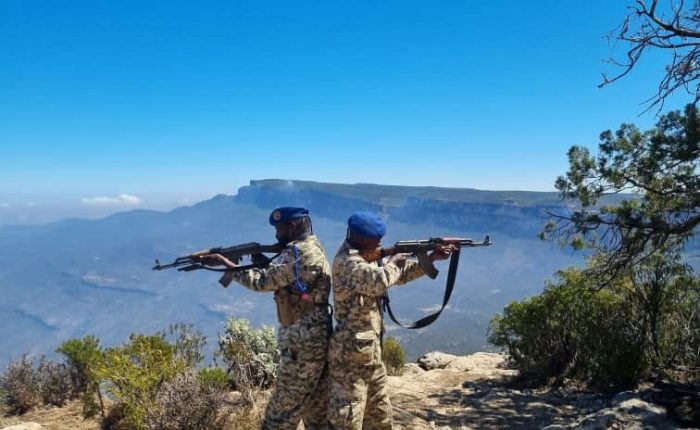
Horn of Africa Adventure Tour
————————————————————— DURATION: 7 days (All-inclusive) ————————————————————— RANGE OF PRICES: $1700 – 2600 ————————————————————— COUNTRIES: Djibouti, Somaliland & Somalia

Combo tour for Djibouti and Somaliland
————————————————————— DURATION: 6 days (All-inclusive) ————————————————————— RANGE OF PRICES: $1170 – $1690 ————————————————————— COUNTRIES: Djibouti and Somaliland

Horn of Africa: Somaliland – Djibouti – South Sudan Tour
————————————————————— DURATION: 7 days (All-inclusive) ————————————————————— RANGE OF PRICES: $1560 – $2400 ————————————————————— COUNTRIES: Djibouti, Somaliland & South Sudan
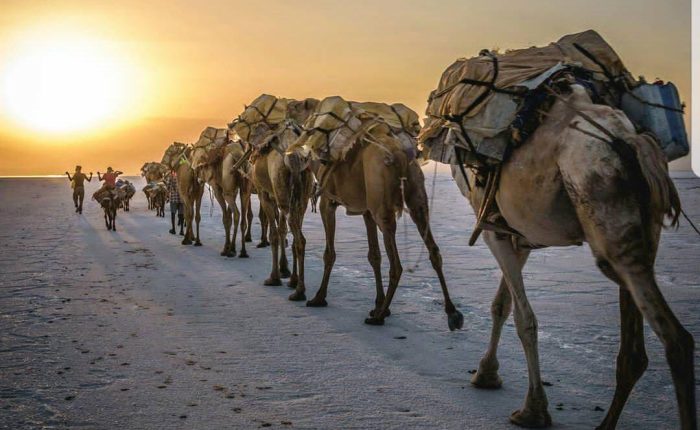
Djibouti – Somaliland – Eritrea Off the Beaten Path
————————————————————— DURATION: 7 days (All-inclusive) ————————————————————— RANGE OF PRICES: $1800 – $2665 —————————————————————- COUNTRIES: Somaliland, Djibouti & Eritrea
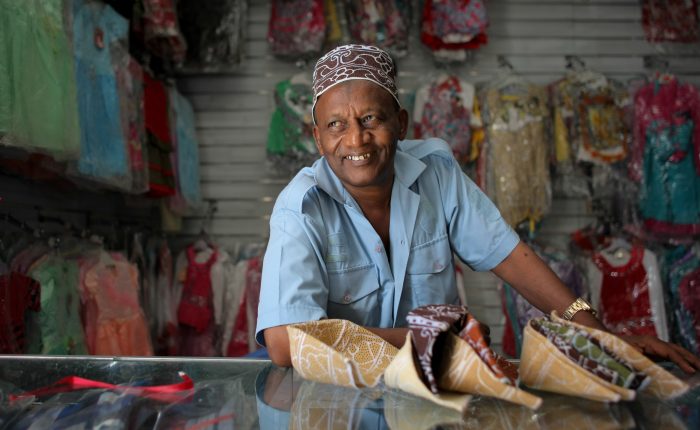
Horn of Africa Expedition of Somaliland – Mogadishu – Puntland
————————————————————— DURATION: 7 days (All-inclusive) ————————————————————— RANGE OF PRICES: $2390 – $3380 ————————————————————- COUNTRIES: Somaliland, Mogadishu & Puntland

Mogadishu and Puntland Together
————————————————————— DURATION: 5 days (All-inclusive) ————————————————————— RANGE OF PRICES: $1800 – $2730 ————————————————————- COUNTRIES: Mogadishu & Puntland
As supporters and members
We are proud members of the Adventure Travel Trade Association (ATTA) and the World Tourism Association for Culture and Heritage (WTACH), as well as supporting Travelers Against Plastic (TAP). We believe that travel, when done responsibly, safely, and respectfully, can create positive changes for communities, the environment, wildlife, and culture. Our support of TAP and other non-profit organizations based in the Horn of Africa encourages travelers to carry a reusable water bottle and to use a method for cleaning the water to prevent the waste of hundreds of millions of plastic bottles each year.
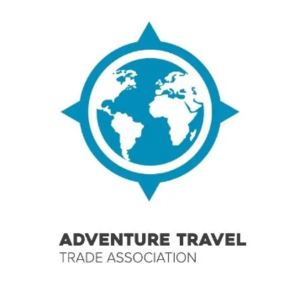
Somaliland - Headquarter
26 June, Rd 1 Hargeisa, Somaliland
+252634427766
You have Successfully Subscribed!
Puntland & Mogadishu, Somalia
+252905446516
Privacy Overview
Pin it on pinterest.
- visithornofafrica
- visithornafrica
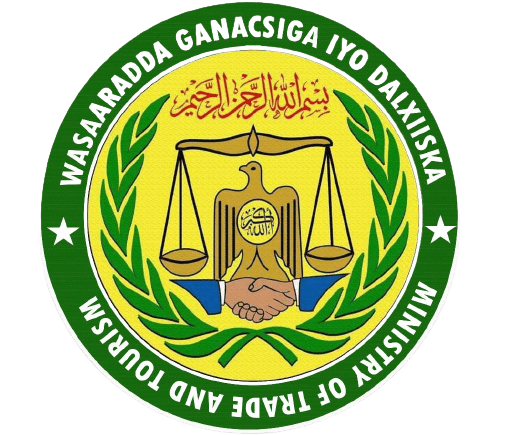
- History of Somaliland
- About Somaliland Geography
- Somaliland Climate
- Find a Flight to Somaliland
Ceel-Sheekh
- Dhagax-Kuure
- Gudmo Biyo-cas
- Gacan-Libaax
- Buurta Wagar
- Tourism Book
- Tourism Policy
- Visa Information
- Somaliland Overseas Offices
- +252 520616
- [email protected]
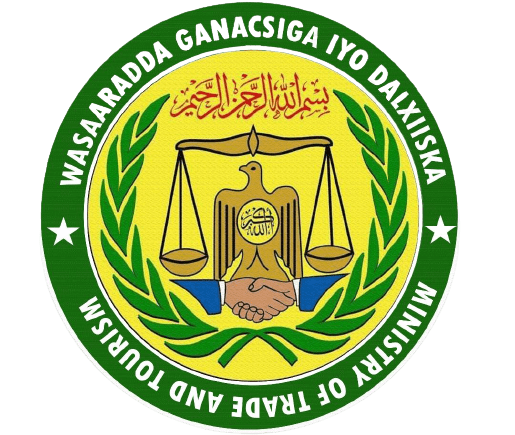
Where Would You Like To Go?
Best price guarantee, easy & quick booking, find a flight to somaliland.
Several leading international airlines operate regular scheduled flights to the Republic of Somaliland from various destinations worldwide.
Plan Your Trip with Somaliland.
- Book your flights and accommodation in advance.
- Get a visa. Citizens of most countries need to get a visa to visit Somaliland.
- Before applying for a visa to Somaliland, please check if you are eligible for visa on arrival

Most Popular Tours

- Quality 4.67
- Amenities 4.67

- Location 3.67
- Amenities 3.33

- Amenities 2.67
- Services 4.33

- Amenities 4.33
- Services 3.33

- Amenities 4

- Quality 4.33
- Location 4.33
- Amenities 3.67
Daallo Mountain

Checkout Beautiful Places Around the Somaliland

Summer hot Tours
Featured tours.

Best Rating

- Quality 3.67
- Location 4.67
- Services 4.67
Dhagax Kuure
What ministry of trade and tourism is offering to tourism agencies., tourism visa, laas-geel permit, dhagah-kuure permit, tourism license, tourism security support (scout), create a tour to experience our benefits, somaliland is a world leading online tour booking platform, news & articles, reset password.

- Our services
- Itineraries
- About Somaliland
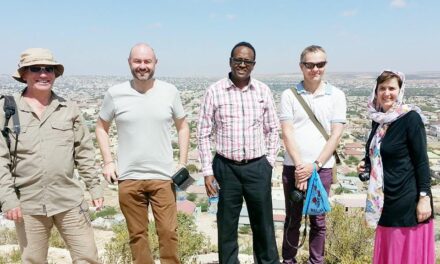
Jonathan Oakes. from UK
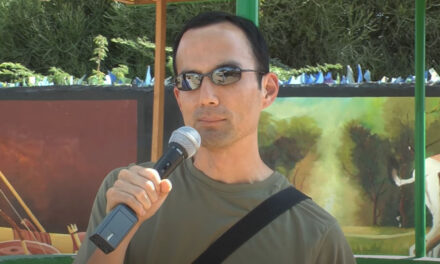
Mr Oliver Lee & Mr Vladimir Samson
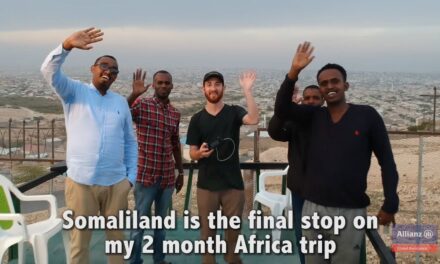
We hosted Travel blogger Drew Binsky in Somaliland
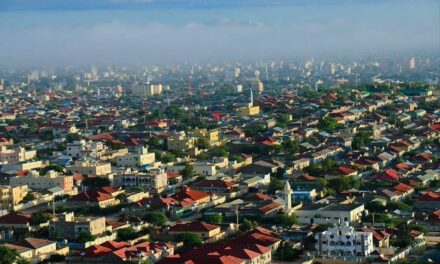
- Full Somaliland Tourism Sites, Produced by Ali Jibril Media Productions
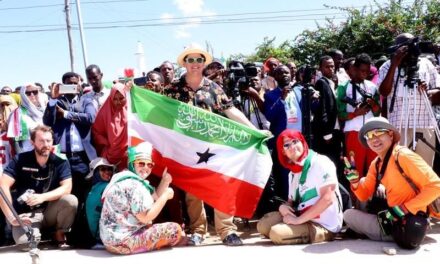
Somaliland What it's like to Visit a Country that doesn't Officially Exist

- Somaliland representative office in Taiwan set to open in September
Select Page
BERBERA SIGHTSEEING
Erigavo sightseeing, gabiley sightseeing, hargeisa sightseeing, borama sightseeing, burao sightseeing, sheikh sightseeing, zeila sightseeing, testimonials, mr oliver lee & mr vladimir samson, we hosted travel blogger drew binsky in ....
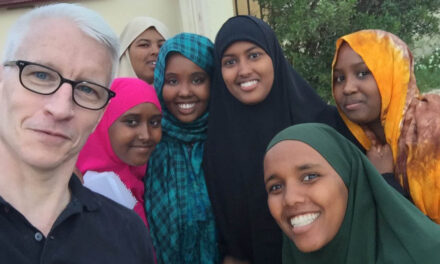
Somaliland is very safe – CNN̵...
- Special Tours
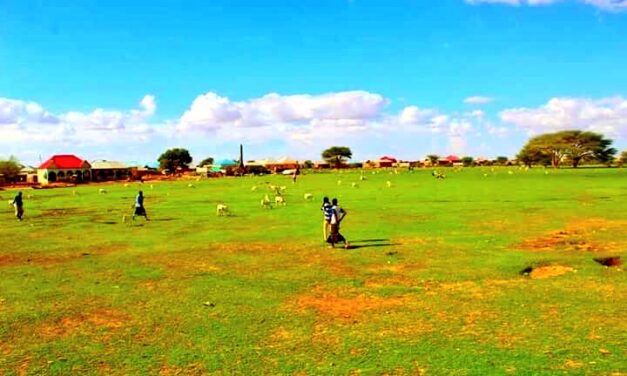
BALIGUBADLE TOUR
by ADMIN | Jun 21, 2020 | Special Tours | 0 |
Baligubadle, Somaliland Baligubadle is the capital of Hawd region of Somaliland, It was the centre...
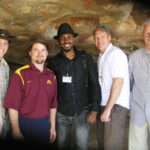
by ADMIN | Jun 25, 2020 | Special Tours | 0 |
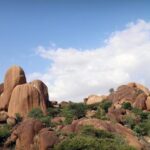
DHAGAX KURE
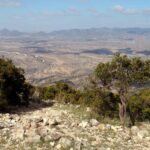
GA’AN LIBAH MOUNTAINS
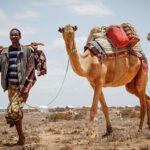
NOMAD LIFE EXPERIENCE
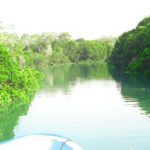
SACADADIIN ISLAND
by ADMIN | Jun 26, 2020 | Special Tours | 0 |
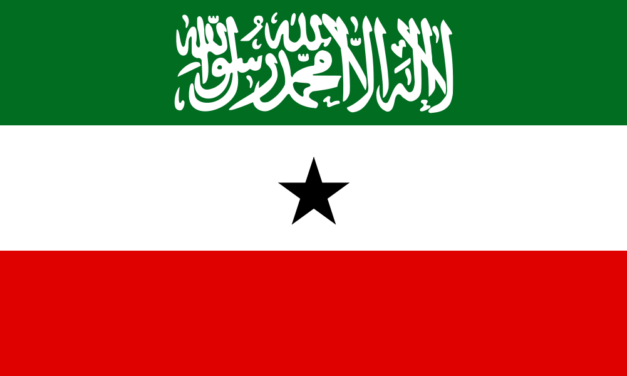
SOMALILAND GOVERNMENT
by ADMIN | Jun 29, 2020 | About Somaliland | 0 |
The country has a republican form of government. The government consists of three branches which...
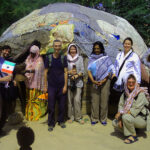
ARTS & CULTURE
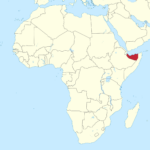
SOMALILAND MAP
by ADMIN | Jun 30, 2020 | About Somaliland | 0 |
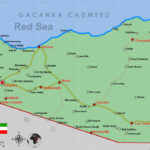
SOMALILAND HISTORY
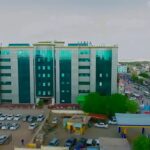
by ADMIN | Jul 2, 2020 | About Somaliland | 0 |
- Getting Here
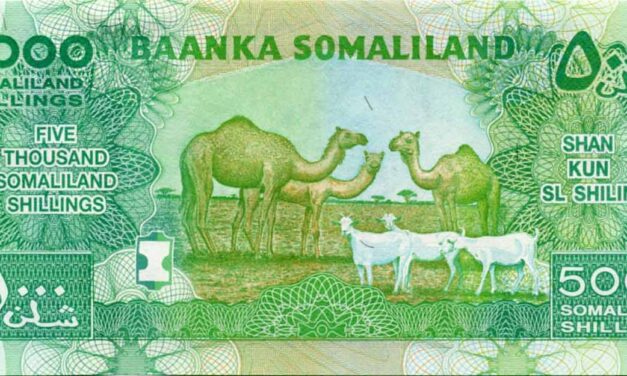
by ADMIN | Getting Here | 0 |
Somaliland has got the shilling and there are coins and notes. There are three notes which are...
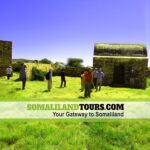
COMMENTS FROM THE CLIENTS
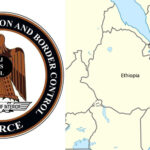
GETTING SOMALILAND VISA
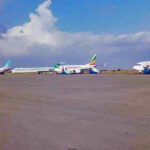
TRAVELLING TO SOMALILAND
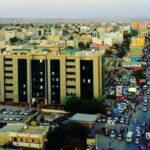
ACCOMODATION

Bulhar SOMALILAND
by ADMIN | Jun 30, 2020 | City Tours | 0 |
Bulhar (Somali language: Bulaxaar) is a historic site and a port in the Sahil region of Somaliland...
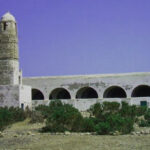
by ADMIN | Jun 21, 2020 | City Tours | 0 |
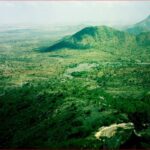
saadadiin, Somaliland Saadadiin Island It is the rare places in the horn of africa as well as the...
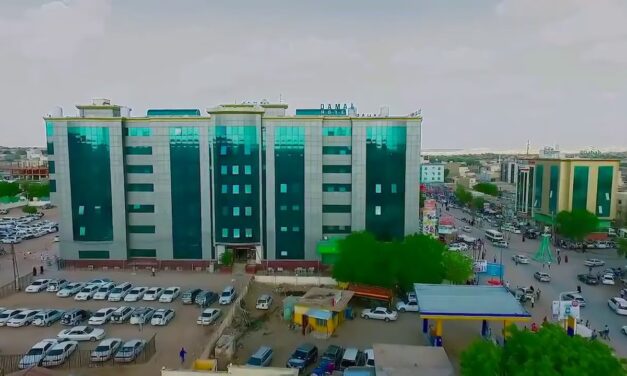
Sleeping and Eating Below is a breif information from thier websites. for more info please visit...
by ADMIN | Jul 5, 2020 | Getting Here | 0 |
by ADMIN | Jun 26, 2020 | Getting Here | 0 |
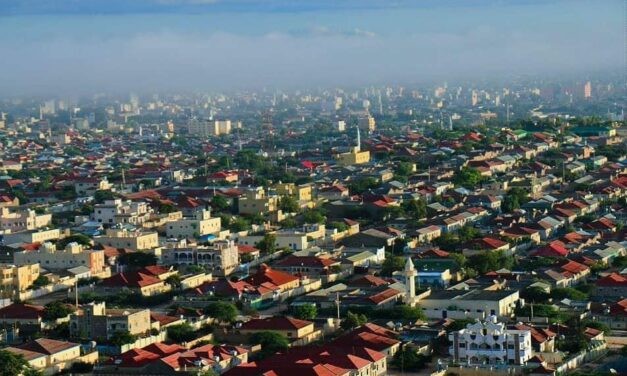
by ADMIN | Feb 6, 2021 | BLOG | 0 |

- Somaliland What it’s like to Visit a Country that doesn’t Officially Exist
by ADMIN | Nov 27, 2020 | BLOG | 0 |

by ADMIN | Aug 26, 2020 | BLOG | 0 |

- WE HAVE UPGRADED OUR WEBSITE
by ADMIN | Jul 13, 2020 | BLOG | 0 |
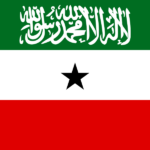
Somaliland Lifts All Covid19-Related Restrictions
by ADMIN | Jul 5, 2020 | BLOG | 0 |
Our Customer Feedback
Somaliland tour sites, discounted packages.
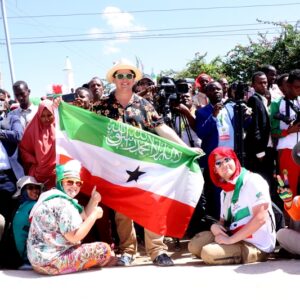
- Login Lost my Password
SOMALILANDTOURS.COM
Recent comments.
- Middle East
- Eastern Europe
- Southeast Asia
- Central Asia
- International Law
- New Social Compact
- Green Planet
- Urban Development
- African Renaissance
- Video & Podcasts
- Science & Technology
- Intelligence
- Energy News
- Environment
- Health & Wellness
- Arts & Culture
- Travel & Leisure
- Hotels & Resorts
- Publications
- Advisory Board
- Write for Us
- Internships

Sudan confirmed on Tuesday that it will review last year’s naval base agreement with Russia following speculation in April that the deal might be shelved. According to Chief of General Staff Muhammad Othman al-Hussein, who made the announcement while speaking to the Blue Nile TV channel, this is supposedly because “some of the document’s provisions entail certain harm for Sudan.” He also reminded everyone that the deal had not yet been approved by the country’s legislature, so it was never legally binding to begin with. Moreover, the military official denied that Sudan’s decision has anything to do with American pressure.
It is unclear whether the latter claim is credible, since the U.S. has greatly expanded its influence in Sudan upon its recent removal of the country from the State Department’s list of state sponsors of terrorism. That move took place in the aftermath of the coup against the former President Omar al-Bashir, who had previously been regarded as close to Russia but ended up entering into a rapprochement with the Gulf Cooperation Council (GCC) in the years before his military-backed ouster. That policy reorientation resulted in him dispatching troops to assist the GCC’s war in Yemen and is thought to have served as a means for gradually repairing relations with the U.S., too.
In any case, the uncertainty surrounding Russia’s planned Sudanese naval base could harm Moscow’s regional interests. I explained the grand strategic contours of this move with respect to Russia’s broader engagement with the international Muslim community (Ummah) as well as discussed its economic significance considering the planned base’s location in Port Sudan, the terminal point of a prospectively promising Chinese Silk Road project stretching across the Sahel.
If these plans are scuttled, whether due to American pressure or Sudan’s own prerogative, then Russia should consider a regional replacement as soon as possible. One such scenario could be to explore the pros and cons of constructing a similar facility in the breakaway Somali region of Somaliland. Unconfirmed reports circulated in early 2018 speculating that Russia planned to establish such a base in the Djibouti-bordering town of Zeila. Although it never transpired, I nonetheless analyzed what it would have meant in a piece published at the time.
In the contemporary context, such a decision would admittedly be somewhat risky for Russia’s soft power, since Moscow would essentially be extending de facto support for the separatist region’s claims of sovereignty. This observation could clash with Russia’s principled support of international law, which recognizes Somaliland as an integral part of the Federal Republic of Somalia as well as sow the seeds of distrust between Moscow and Mogadishu. At the same time, though, it should not be forgotten that the UAE used to have a military base in Somaliland’s Berbera that was recently converted to a civilian facility.
The UAE previously relied on this base to assist its war in Yemen, but as Oxford scholar Dr. Samuel Ramani noted in his article for Al Monitor, “the UAE is reorienting its Red Sea strategy away from direct military intervention and toward a synthesis of economic investment and remote power projection.” In other words, the Emirates’ regional military engagement successfully enabled the country’s policy to evolve in the economic direction after opening up the requisite doors for this to happen with Somaliland’s leadership.
Russia could in principle follow in the UAE’s footsteps, though importantly without using its proposed base there for any active military purposes like Abu Dhabi did with Yemen. Even better yet, Russia should seriously consider clinching a comprehensive regional partnership with the UAE to enhance its position over the entire Horn of Africa. I argued such a proposal would be the next natural step in their emerging partnership of the past few years which has seen them coordinate more closely in Syria as well as expand military cooperation .
These developments confirm the increasingly independent nature of the UAE’s foreign policy seeing as how they contrast with its American ally’s efforts to contain Russia at every turn. This speaks to the sincere confluence of interests between those two countries that is driving their new era of relations. It is also worth mentioning that the UAE is a major player in Ethiopia, which is Africa’s second most populous state whose capital hosts the African Union. The Emirates’ plans to construct a connectivity corridor between Ethiopia and Somaliland terminating in Berbera could also in theory be utilized by Russia to expand trade with Ethiopia.
After all, Ethiopia experienced some of the world’s fastest economic growth prior to the onset of the COVID-19 pandemic so it is worthwhile for Russia to consider expanding relations with this landlocked state via transit entities, such as Somaliland, and its UAE-constructed connectivity corridor. Even if Sudan agrees to respect its non-binding deal to host a Russian Red Sea base, that country might no longer serve as Moscow’s gateway to Ethiopia as previously expected after the re-eruption of last year’s border conflict in the midst of Addis Ababa’s ongoing military intervention in Tigray Province, hence the importance of actively searching for alternatives.
Djibouti might have been the one that first comes to the minds of Russian decision-makers, but it already hosts quite a few foreign military facilities so the situation there is very crowded, to begin with. Moscow might not feel comfortable being “one among many”, instead preferring to have privileged military access to one or another regional player so as to serve as a springboard for comprehensively expanding its relations with its host, ergo the strategic interest in doing so with Somaliland. Eritrea also remains an option, but it lacks reliable economic connectivity with Ethiopia, especially considering the ongoing military conflict in the neighboring Tigray Province.
It is for these reasons why Somaliland is arguably the best alternative to Russia’s troubled Sudanese naval base plans if the latter are ultimately scuttled. That said, the drawbacks of this policy could be that Somalia becomes offended by what it could claim is Russia’s “meddling” in its internal affairs through Moscow’s de facto acknowledgment of Hargeisa’s sovereignty claims. Nevertheless, the UAE already crossed that threshold several years ago without any tangible consequences, even though the rivalling Turkey has a military base in Somalia proper. It is therefore unlikely that the recently close Russian-Turkish ties would suffer from such a move either.
Just to play it safe, however, Russia might not opt for building a brand-new military base in Somaliland but for exploring the possibility of reaching a logistics pact with its port of Berbera instead. Although that would also imply some acceptance of Hargeisa’s sovereignty, it would avoid the appearance of any military commitments to the breakaway region and could be justified on the basis of pragmatism. If compelled to choose, it would arguably be better for Russia to take its chances with Somaliland in pursuit of improving connectivity with Ethiopia rather than avoid offending Somalia proper and lose out on this promising connectivity opportunity.
Altogether, Russia should begin considering possible alternatives to its troubled Sudanese naval base plans. Although the Somaliland proposal carries with it risks to Russia’s soft power and bilateral ties with Somalia proper, these possible costs might be worth it if they result in expanding ties with both the UAE and Ethiopia, which are much more attractive long-term partners for Moscow. There would be nothing special about opening a base in a crowded Djibouti if Russia were even allowed to do so, nor does Eritrea provide a viable connectivity potential with Ethiopia, hence the reason why Somaliland should be seriously looked at instead.
From our partner RIAC

Relevance of US Unilateralist Policy
Formulating indonesia’s artificial intelligence strategy in international affairs, china: between panda and wolf diplomacy, environmental shift and terrorism: how climate change fuels terrorism in africa, next decade: could india reach a 20-trillion, china a 90-trillion, and the usa a 50-trillion economy.
- Cookie Policy (EU)
MD does not stand behind any specific agenda, narrative, or school of thought. We aim to expose all ideas, thinkers, and arguments to the light and see what remains valid and sound.
- Fine Living
© 2023 moderndiplomacy.eu. All Rights Reserved.
Moscow tours, business travel to moscow, tour guide service, interpreting service
- Our Service
- Our Photo Album
Moscow tours, business travel to Moscow, tour guide service, interpreting service
We are here to navigate you through Moscow and beyond. We specialize in private and customer-tailored tours for individuals and groups.
Tour options include:
- Moscow tours in 1 day/2days/3days (Red Square tour, Kremlin tour, metro tour, panoramic city tour, etc);
- Moscow panoramic city tour / night Moscow by legendary retro cars ;
- Layover tours in Moscow;
- Moscow cultural heritage tours, Moscow themed tours;
- Russian home hosted visits (visit to the Russian dacha);
- Russian culinary classes;
- Moscow-St.Peterburg tour package. Two Russian capitals in one week;
- Moscow-St.Petersburg educational tours for students and children;
- Russian towns of the Golden Ring (Sergiev Posad, Suzdal, Vladimir); Trips out of Moscow
- Shore excursions (Moscow/St.Petersburg)
- Russian honeymoon tours, photo walks in Moscow;
- Moscow tours for children
- Christmas time in Moscow;
- AK-47 shooting tour, tank T-34 ride, segway tour, fishing in Moscow region.
- Group Tours ( offers for travel agencies)
We are officially endorsed by Moscow Government to guide in most iconic tourist attractions of Russia’s capital such as Red Square, St. Basil’s Cathedral, museums of the Moscow Kremlin, the Tretyakov Art Gallery, etc.
We love our city and are ready to share with you our in-depth knowledge of Moscow, this old but very dynamic and amazing city. We will be glad to provide context and fun in equal measure opening up your eyes to Russian history, culture and art.
We know how to make the most of your time while you are here and will be delighted to turn your stay in Moscow into a life experience.
Why book with us?
- We love what we do.
- We highly value responsibility and individual approach.
- Our friendly booking service will help plan your itinerary according to your wishes. We are very flexible and design the tours individually for every customer.
- We are officially recognized by Moscow Government.
- Our training, qualifications, experience and personality will ensure that your visit to Moscow is a great success.
We take part in BBC series of documentaries "World's Busiest Cities"(Moscow)

Buy Tickets to the Bolshoi Theatre

Other special offers...
Interpreting and assistance at exhibitions and conferences, our garage ( vehicles+drivers), where to stay in moscow, what and where to eat in moscow, visa support, learning and discovery, our partners (trips to st.petersburg).
Copyright 2015 - Moscow Navigator

IMAGES
COMMENTS
Most travelers travel to Somaliland as part of a multi-country trip around the Horn of Africa, so getting a visa at the Embassy in Addis Ababa seems to be the most common choice. According to travelers, these are the requirements: It costs $100, and they only accept USD. 2 passport photos, 1 passport copy.
Things to Do in Somaliland, Somalia - Somaliland Attractions. 1. Laas Geel. Beautiful rock paintings. 2. Livestock Market. There was a huge numbers of cattle, specially camels and goats. 3.
Somaliland Travel. Somaliland Travel Agency (known as SML Travel) is a multiple award-winning local adventure tour operator.As our name tells, we are based in The Republic of Somaliland, a self-declared country. It is here where we have been crafting and pioneering our first trips before expanding to neighbouring Djibouti and beyond.If you are looking for an adventure to an off-the-beaten ...
Africa. For seasoned travellers in search of a totally unusual travel experience, Somaliland is a must. The Republic of Somaliland declared independence from the rest of Somalia in 1991, though its status as a country has not been recognized by the international community. Despite this fact, Somaliland offers plenty of unexpected and wonderful ...
Tourism still barely exists here - more people travel to Antarctica each year than to Somaliland - but anyone adventurous enough to cross its borders will discover its nomadic heritage and long history of trade, its exciting modern capital Hargeisa, the ancient port of Berbera, desert communities, empty beaches, beautifully preserved rock art and a surprising amount of wildlife.
Somaliland (Somali: Somaliland, Arabic: ... (Special Protection Units) and are available from the local police department or the office of tourism in Hargeisa. The UN typically pays US$5 a day per SPU, but as a tourist it will be difficult to negotiate this price. SPUs will try to charge you anywhere from US$30 to US$40 a day, but US$15 a day ...
3. Carro Edeg Hotel Hargeisa. 8. Adam's Inn. 10. Landmark Apartments Hargeisa. 3. Somaliland Tourism: Tripadvisor has 1,104 reviews of Somaliland Hotels, Attractions, and Restaurants making it your best Somaliland resource.
This is by far the most interesting tourist attraction in Somaliland and should feature in anyone's list of places to visit if you are traveling there.. Laas Geel is a complex of cave paintings that are extremely well-preserved and are considered to be the oldest in the Horn of Africa. The rock art is believed to date back to around 6,000 BC although the international community only ...
Easily visited as a day trip from Hargeisa or en route to Berbera, Las Geel is the most compelling tourist attraction in Somaliland, topping the Department of Tourism & Architecture's list of potential UNESCO World Heritage Sites. The site was also visited by the broadcaster Simon Reeve for the BBC programme Places That Don't Exist ...
The history of tourism in Somaliland is linked to that of Somalia.The tourism industry declined rapidly during the Somali Civil War. Since the declaration of Somaliland's independence and the establishment of a de facto legal government, stability has returned to everywhere but the easternmost part of the country. Many tourists go to Somaliland to visit the archaeological and historical sites ...
Somaliland for the large part is a place of experiences rather than sights (though there are some notable exceptions). It is a limited tourism infrastructure and a permit system that can make travel outside of the capital Hargeisa a bit of a challenge. Despite these challenges, my visit to Somaliland provided me with some of my fondest travel ...
Somaliland is an independent, peaceful, stable, democratic and tourism-ready country. As Somaliland is not internationally recognized, most maps may show it in the same map as that of Somalia. Although Somaliland, a de facto independent state since 1991, has managed to build the most robust democracy in the entire region and takes great pride ...
Dear Guests, Media Representatives Asalam-u-alikumwaramatullahwabarakatahu. The Somaliland Ministry of Trade, Industry and Tourism is the lead economic sector which provides policy guide to the government on Trade, Industrial, Tourism and private sector development with responsibility for the formulation and implementation of policies for the promotion, growth and development of domestic and ...
A former British colony that unilaterally declared independence from Somalia in 1991, Somaliland is an unrecognized country in the Horn of Africa which, according to the rest of the world, still legally belongs to Somalia, considered today one of the most dangerous countries in the world.. Somaliland, however, is a self-administered territory that controls its own borders and has managed to ...
Our Travel to Horn of Africa trips include travel and tours in Somaliland, Puntland, Djibouti, Ethiopia, South Sudan, Eritrea, Sudan, and the Socotra. ... (ATTA) and the World Tourism Association for Culture and Heritage (WTACH), as well as supporting Travelers Against Plastic (TAP). We believe that travel, when done responsibly, safely, and ...
Mom retired and Sam followed along. Now we are living as tourists in our own land. - The Somaliland tourists
Tourism still barely exists here - more people travel to Antarctica each year than to Somaliland - but anyone adventurous enough to cross its borders will discover its nomadic heritage and long history of trade, its exciting modern capital Hargeisa, the ancient port of Berbera, desert communities, empty beaches, beautifully preserved rock art and a surprising amount of wildlife.
Somaliland is a relatively stable and peaceful country compared to its neighbors. It has a growing economy, based on livestock, agriculture, and tourism. The country has a well-educated population and a strong tradition of democracy. Somaliland is seen by many as a potential model for peace and development in the Horn of Africa.
Somaliland Travel and Tours Agency is recognized by the Somaliland Ministry of Trade, Industries and Tourism, as a tour operator and travel agent. Therefore, we provide an extensive selection of tours and excursions; cultural, classical, historical, leisure, and more, to achieve our aims, we have built a team of professionals with outstanding capabilities in the tourism industry.
Berbera (burr-burr-AH; Somali: Barbara, Arabic: بربرة) is the capital of the Sahil region of Somaliland and is the main sea port of the country, located approximately 160 km from the national capital, Hargeisa. [2] Berbera is a coastal city and was the former capital of the British Somaliland protectorate before Hargeisa. It also served as a major port of the Ifat, Adal and Isaaq ...
Altogether, Russia should begin considering possible alternatives to its troubled Sudanese naval base plans. Although the Somaliland proposal carries with it risks to Russia's soft power and bilateral ties with Somalia proper, these possible costs might be worth it if they result in expanding ties with both the UAE and Ethiopia, which are ...
Somaliland is a region of northwestern Somalia bordering Djibouti, Ethiopia and the Indian Ocean. ... Tourist Still Missing After Falling Into Sinkhole a Week Ago Updated August 29, 2024 12:39 PM .
We specialize in private and customer-tailored tours for individuals and groups. Moscow Tours. Business trips to Moscow. Eco-tours, hikings in Moscow region. Trips to the towns of the Golden Ring of Russia. MoscowNavigator International Travel Club. St. Petersburg tours. Tour options include: Moscow tours in 1 day/2days/3days (Red Square tour ...
The Ottoman Empire had loose control over the area from the sixteenth to the nineteenth century. [2] In reality, however, the Afar Sultans of Tadjoura were in control. [3] It was during this time, that Sagallo was visited by the Englishman William Cornwallis Harris on his way to Ankobar, in the year 1841.His assistant surgeon, who wrote the report on the expedition, mentioned that water in the ...